
For 28 years the PRO Awards has been the world’s leading recognition program for excellence in brand activation and promotion marketing. From buzz campaigns and digital marketing, to influencer programs and experiential activations, and beyond… this is your ‘look book’ into the best campaigns of the year—awarded by a panel of leading brand-side marketers. Over 1,000 entries were submitted from around the globe. And these campaigns were named the best of the best.
To receive an alert for the 2019 PRO Awards call for entry, click here.
The 2018 PRO Awards
PLATINUM PRO—BEST OVERALL CAMPAIGN
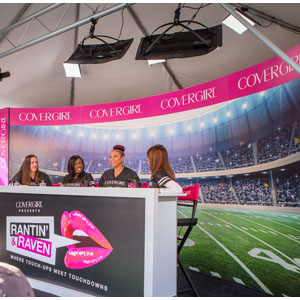
Brand: CoverGirl Cosmetics
Campaign: CoverGirl Rantin’ and Raven
Agency: Jack Morton Worldwide
Best Sports Sponsorship or Tie-In—Gold Winner
To continue building momentum around its #girlscan initiative, CoverGirl transformed a one-time activation at an NFL game in its hometown of Baltimore into a powerful national call to action.
The brand didn’t have much to spend on the activation itself, much less amplifying it. In fact, it only had dollars to invest in one paid Facebook post, so the idea had to have the power to soar organically.
The target audience was female Ravens fans, ages 12 to 55, who are known to be one of the most passionate fan bases in the NFL—particularly on social media. The campaign was also driven by a key insight that, in America, women make up nearly half of football’s 150 million fans. But, their opinions are often left on the sidelines. In fact, since the first NFL game in 1920, there have only been four women who have worked in a non-sideline broadcast role.
Rather than just deliver a make-up sampling experience at the activation, CoverGirl gave women a seat behind the desk on game day with “CoverGirl Rantin’ and Raven,” the first-ever all-female live football pregame show.
Lesley Visser, the first female football TV analyst and one of the most influential women in sportscasting, was chosen to lead the charge. To join her on set, 15 loud, proud female football fans were cast from auditions held during “A Purple Evening.” The fan event, which attracts 4,500 attendees, also included locker room tours, lectures from Ravens coaches, autograph sessions, wine/cupcake stations and more.
On game day, outside the stadium as thousands of fans were tailgating, each woman chosen had a chance to participate in one of six episodes that covered a range of football topics. Passerby on their way into the stadium could watch the women as they talked football leading up to the game, giving female football fans a voice louder than ever before.
Rantin’ and Raven tackled stereotypes at a time when gender issues in America are in the national spotlight. Like the election, the football conversation was charged with emotion. The CoverGirl YouTube channel became an outlet for people expressing their opinions on a range of issues related to gender (not all positive), and the tallies of likes versus dislikes mirrored the nation’s divisiveness.
The idea of the first-ever all-female football pregame show took off on social. The single paid post was shared over and over, resulting in seven million unique Facebook views and 27 million impressions, reaching a total of 52 percent of the CoverGirl Facebook audience. Perhaps even more powerful: the message that despite never getting a seat at the table, women can talk serious football.
MVP PRO
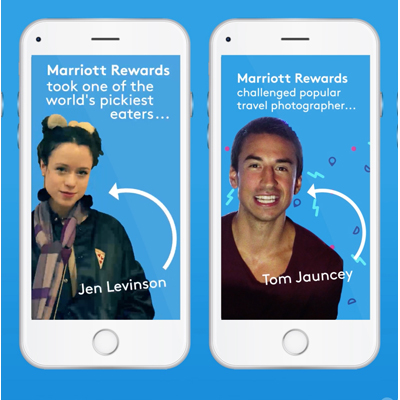
IMG Live &
Jack Morton Worldwide
Two agencies tied for this year’s MVPro, honoring the agencies with the most award winning campaigns for multiple brands. Jack Morton won for Charmin, CoverGirl, Liberty Mutual Insurance and Royal Caribbean Cruises and IMG Live for Marriott Rewards, Marriott Courtyard, Under Armour and USAA.
Congratulations!
Gold Winner
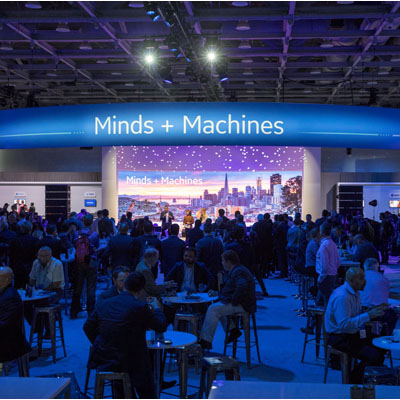
Brand: GE
Campaign: Minds + Machines
Agency: Manifold
BEST B2B CAMPAIGN—GOLD

Brand: GE
Campaign: Minds + Machines
Agency: Manifold
In the past, Minds + Machines was hosted in big industrial spaces, to connect the event to GE’s industrial background. In 2017, the two-day event was moved to San Francisco’s Moscone Center, a more traditional venue. To create a connection to the brand, high-resolution imagery and installations of real machines such as jet engines, railway segments and drones were used to bring the narrative to life.
GE’s comprehensive ecosystem was on display in the Tech Hall. There, attendees were able to experience demos for solutions from several industries, including Oil and Gas, the Electricity Value Network, Healthcare, Transportation, Aviation, Mining and Manufacturing. Innovation Alley featured a number of startups showcasing their industrial innovation offerings.
While the high-level executive, product and industry keynotes were showcased on the main stage, more candid conversations between GE execs, partners and thought leaders were held in Social Studio, a new, live broadcast studio in the center of the Tech Hall. In sessions, breakout and networking paths were offered for executives, operations personnel and IT experts. Daily musical performances, certification workshops and networking receptions also provides chances for attendees to GE employees, partners and customers to mingle.
To engage the developer community, over the course of two days 100 teams competed in an Appathon, where they built solutions powered by the GE software platform Predix, to tackle crucial energy challenges, such as renewable energy integration, multimodal transportation and the optimization of emissions, efficiency and output.
Over 3,700 attendees from nearly 60 countries participated in Mind + Machine’s 200 sessions, a 41 percent increase over the prior year. On site, 456 meetings were held, and 3,500 people visited the tech hall, a 106 increase. Forty-nine reporters attended, and 229 articles about the event appeared on CNBC, Reuters, Business Insider, VentureBeat, ZDNet and more. On social, 4.47 million impressions were generated, and 8,763 clickthroughs were recorded on GE’s social and digital presences.
Silver Winner

Brand: Verizon
Campaign: Quantum Upgrade Journey Marketing
Agency: Ascend Marketing
BEST B2B CAMPAIGN—SILVER

Brand: Verizon
Campaign: Quantum Upgrade Journey Marketing
Agency: Ascend Marketing
Verizon was looking for ways to upgrade its existing business customers to Quantum Internet Speed. The Quantum Upgrade program, introduced in 2013, did not have strong historical performance, and Verizon was searching for an innovative marketing solution to boost internet speed upgrades.
The target audience was small and medium sized business customer that qualified for a speed upgrade. To reach them, a marketing automation decision engine was put in place and Kitewheel’s decisioning platform was used to create personalized experiences for prospects.
Each Verizon business customer received a personalized email with a unique subject line, headline, subhead, marquee header image, body copy, Verizon phone number, landing page, offer, price point, legal disclaimer and a call-to-action button. By segmenting customer data and continuously testing subject lines, body copy and creative, the platform automatically served emails with best-performing subject lines, creative and offers to each qualified customer. The campaign also leveraged custom landing pages that matched each email version and assigned unique tracking codes to email clicks and online conversions. Also tracked were phone calls and phone sales generated by the journey marketing campaign.
The email open rates more than doubled (an increase of 111 percent). The volume of calls increased by seven percent. Cost per acquisition went down by 14 percent. What’s more, sales increased by 336 percent yielding an astounding 877 percent ROI.
Bronze Winner
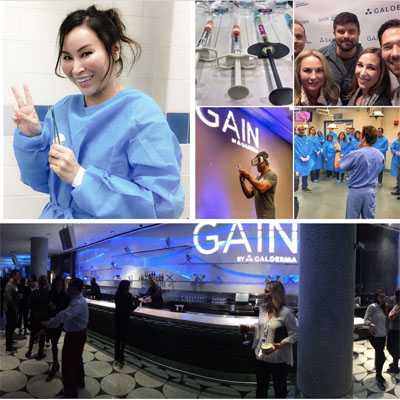
Brand: Galderma Laboratories
Campaign: Galderma Train the Trainer Event
Agency: Eventive Marketing
BEST B2B CAMPAIGN—BRONZE

Brand: Galderma Laboratories
Campaign: Galderma Train the Trainer Event
Agency: Eventive Marketing
Each year, the Galderma Aesthetic Injector Network (GAIN) brings together a group of medical professionals from across the country to be trained on the Galderma suite of dermatological products and advanced injection techniques, so that they, too, might become elite trainers themselves.
These B2B events are educational in nature, and while the training has always been world-class, the setting for the conference was that of a traditional medical seminar, and as such, pretty conventional.
Attendees knew from the first touch point that this was not going to be a “PowerPoint in a Ballroom” kind of event. Gone were the typical conference room lighting, podiums and folding chairs. Instead, stadium seating, custom lighting and sound solutions, massive LED backdrops and cameras on jibs for stunning close-ups of the techniques being presented were brought in. A stage with a catwalk to seamlessly connect presenter and audience let doctors “play” onstage with theme music like talk show hosts, and were met with thunderous applause.
Gone were the rubber chicken dinners and hallway networking sessions, replaced with custom VR apps, stunning live presentations by performance artists, even a Cadaver Lab session, where guests could practice their techniques hands-on.
At last, the event was of the same caliber as the training being provided, and the energized attendees would depart as Galderma experts, ready to train the next wave of trainers themselves.
In the first semester (ending in June) following the training, invoice dollars were 166 percent above quota. Total units sold in this period topped 113,000, 168 percent over plan. The brand achieved 100 percent U.S. geographic reach and coverage on product orders.
Gold Winner
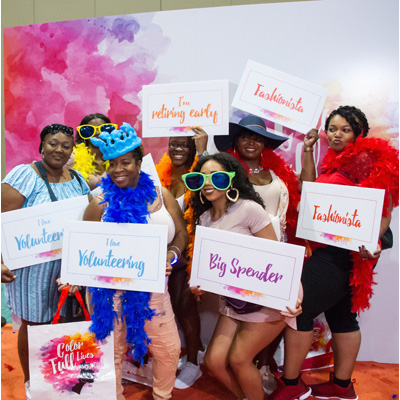
Brand: State Farm Insurance
Campaign: State Farm Color Full Lives
Agency: The Marketing Arm
BEST BRAND AWARENESS—GOLD

Brand: State Farm Insurance
Campaign: State Farm Color Full Lives
Agency: The Marketing Arm
Through a partnership with Essence, State Farm started an emotional and inspirational conversation with African-American women about financial empowerment in a fun and relevant way. By asking women to identify their goals, State Farm pushed the boundaries of what consumers expect from an insurance brand and empowered women to take steps toward achieving their dreams.
State Farm developed the “Color Full Lives” campaign to celebrate the multifaceted lives of African-American women and the financial goals that they hope to achieve. The program came to life at Essence Festival—the largest female-focused live event in the country—and through media on Essence.com with content featuring women chasing their dreams and “living their most Color Full Lives.”
At Essence Fest, African-American women listened in at three intimate panels featuring celebrities like Anthony Anderson and Issa Rae discussing their own financial challenges. A “Color Full” activation challenged women to identify their financial goals and explore a color-themed interactive based on their individual spending habits. Leveraging consumer data-capture and RFID technology, State Farm rewarded each of these women with a digital magazine based on their interactions at the space.
In a separate activation area, a recording booth with sound wave technology gave women an opportunity to declare and document their financial affirmations. As a thank you, State Farm gifted them digital copies of their statements. Finally, celebrity talent challenged three New Orleans women to a financial quiz during the live Essence Fest concerts at the Superdome, awarding each woman $1,000 to jump-start their dreams.
Post-festival, Essence.com featured content of entrepreneur and influencer Angela Yee offering guidance to women through three videos, each providing tips on achieving goals via State Farm’s financial site, LetsStartToday.com. Essence editors and a State Farm agent hosted Q&A sessions around entrepreneurship and planning for the future through Facebook Live sessions, customized articles and e-blasts.
Over 150,000 consumers were engaged at Essence Fest, and content on Essence.com generated over 21 million social and digital impressions, doubling the benchmark.
Silver Winner
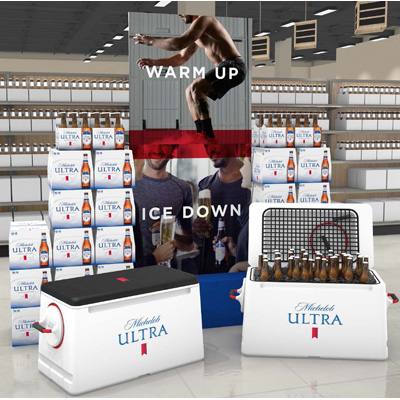
Brand: Michelob ULTRA
Campaign: Brewed for Those Who Go the Extra Mile
Agency: FCB Chicago/FCB RED
BEST BRAND AWARENESS CAMPAIGN—SILVER

Brand: Michelob ULTRA
Campaign: Brewed for Those Who Go the Extra Mile
Agency: FCB Chicago/FCB RED
In a shrinking light beer category, Michelob ULTRA needed to fight the headwinds by connecting with consumers in a more modern, relevant way. Bigger brands were outspending the brew and the brand’s differentiation at a national level was unclear.
Michelob ULTRA made its move by going after a new target audience—the “social athlete”—through promotional and digital programs designed to create positive and authentic brand engagements.
Real athletes from local running clubs, cycling studios and CrossFit affiliates were cast in Super Bowl related social content. Each athlete received a personalized set of branded workout swag and had permission to post live to social media during the shoot. Behind-the-scenes footage and interviews were captured for social media, and each athlete received a custom content pack for their Super Bowl social posts.
To meet social athletes on their turf, thousands of Michelob ULTRAs—in custom-created cans special for the occasion—were handed out at the finish lines of over 300 races across the country.
The brand also partnered with 18 influencers to create the #LiveULTRA series, a unique set of events that brought together the fun of fitness with the fun of beer in Instagram-envy inducing ways like a boot camp in an NFL stadium, yoga on the roof or a circuit workout at the Red Rocks Amphitheater.
Another component was Team ULTRA. The brand partnered with the New York City Marathon to build a team of the 95 most inspiring and deserving runners that didn’t get official bibs, inviting them to share their fitness stories for a chance to run as members of Team ULTRA. In-depth exposés on each team member as they trained were shared in social media, and culminated in a large race-day activation.
To better compete at the point of purchase, the brand reimagined two classic beer experiences. The simple beer tap became the Resistance Tap, a portable draught feature that required a pull with 200 pounds of force to get the beer flowing. It was used for in-bar sampling, allowing everyday consumers to prove their fitness while sampling the product. A partnership with Yeti Coolers turned the beer cooler into a Plyo-Cooler that could be used as a piece of workout equipment.
The campaign earned over 680 million earned impressions, driven by real athletes partnering with the brand, which averaged out to three million impressions per day. There were 250,000 face-to-face interactions with social athletes at race events, a 65 percent YoY increase. At the conclusion of the results period, 57 percent of event attendees were more likely to consider ULTRA following the event.
Bronze Winner
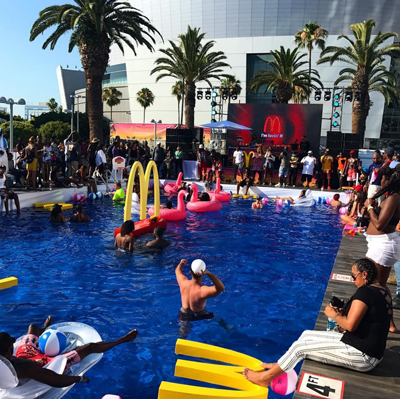
Brand: McDonald’s
Campaign: The McDonald’s Pool Groove
Agency: Walton Isaacson
BEST BRAND AWARENESS CAMPAIGN—BRONZE

Brand: McDonald’s
Campaign: The McDonald’s Pool Groove
Agency: Walton Isaacson
Shifting brand perception among African-American Millennials was pivotal in this campaign. This target simply wasn’t buying McDonald’s messages that it could deliver on bold flavors, so they looked elsewhere. The team understood that for African-American Millennials, the notion of bold flavor wasn’t just something they looked for in food—it was a way of life.
McDonald’s had just launched its “Signature Crafted” recipes, a line of sandwiches with three bold flavor combinations. The team plotted to get this target to try one.
Enter The Pool Groove, a palm tree-lined parking lot transformed into an 18,000-square- foot lavish pool party spectacular replete with a 50-foot by 30-foot foot swimming pool and custom deck. And not only that, there were cabanas, a concierge service, an interactive photo booth, pool games and a 57-foot McRig Mobile Restaurant. The spectacle was topped off with powerhouse entertainment and social influencers that bopped to the beat and kept the conversation going long after the last person climbed out of the pool. BET hosted the activation at one of the summer’s hottest events for the target, the BET Experience at L.A. Live.
The entire spectacular was captured by BETx and converted to eight segments, among a number of exclusive content pieces spread across multiple platforms. Games and prizes, like the McDonald’s Money Booth that gave consumers a chance to win prizes by catching the golden dollars, played into the $1 beverage messaging. The McRig Mobile Restaurant was on hand, serving more than 9,500 samples of the new “Signature Crafted” BBQ Bacon Burger, World Famous Fries and Coke beverages.
It all added up to 133.8 million social media impressions and media coverage that generated 55.3 million impressions. Social media posts resulted in over 1,100 mentions using the custom hashtag, #McDPoolGroove. In addition, 15,000 Arch Cards were distributed and product sampling exceeded goal by 90 percent, almost 10,000 samples distributed. A custom McDonald’s Global Mobile Offer resulted in 1,418 redemptions with customers spending 30 percent more than the average McDonald’s check. Groovy indeed.
Gold Winner

Brand: Arby’s
Campaign: Arby’s #MeatSweats
Agency: Manifesto
BEST BUZZ—GOLD

Brand: Arby’s
Campaign: Arby’s #MeatSweats
Agency: Manifesto
In a campaign that perhaps only a vegan wouldn’t love, Arby’s literally gave carnivores the #MeatSweats.
Arby’s wanted to drive buzz around the brand at the end of 2017, and challenge other QSR brands launching their own limited edition novelty products, like KFC’s Colonel pillow. They had only four working weeks to pull it off, and a budget of less than $100,000, including creating the custom product—actual sweats emblazoned with images of meat.
The head-to-toe custom apparel featured Arby’s signature meats in photorealistic, audaciously loud sweatshirt and matching sweatpant combos delivered to the nation’s most publicly passionate carnivores just in time for Christmas.
The catch? The tasty fashion couldn’t be bought. They had to be earned. From fans who’d tackled Arby’s Meat Mountain (an enormous sandwich featuring all their signature meats) to smoking meat for 24 hours straight and beyond, carnivores who earned Arby’s respect for their love of meat were the unsuspecting targets of the surprise & delight campaign.
In true Arby’s fashion, each pair of Meat Sweats came with tongue-in cheek features like “bacon-patterned warming pockets,” “a venting hood for maximum temperature control,” and “expandable waistline technology for post-meal comfort.” The sweats were wrapped in bacon-patterned tissue paper, sealed with a 100 percent Meat Sweat Certification sticker and wrapped in a bright red poly bag.
Social media influencers were engaged to create cultural buzz. ESPN commentator and former NFL player Mike Golic, Jr. launched a tweet that got the ball rolling (“Actual #MeatSweats—I can’t breathe!”) and had the press guessing if he was the secret spokesperson.
Within days, news stations were covering it around the country with on-air segments and consumers watched as newscasters discussed the appalling yet appealing sight of that much meat on a sweatsuit. From Fox & Friends to CBS news affiliates across the country, voices were buzzing and recipients began receiving Arby’s Meat Sweats, some entirely surprised and others through social outreach.
More mentions followed. Seth Meyers gave Arby’s Meat Sweats a plug on “Late Night.” Next, a pro wrestler laid out his beloved pair of Meat Sweats along with some flashy bling on Twitter, followed by a giant shout out from YouTube star Casey Niestat with 1.6 million Twitter followers. Recipients proudly donned their sweats on social holding up the hashtag card #MeatSweats.
#MeatSweats garnered an impressive 92 million total earned media impressions in less than two weeks, including three million broadcast impressions, 59.5 million digital media impressions and 29.5 million social impressions, leading to a recognizable sales spike of Arby’s biggest sandwiches during the December-January campaign window.
Silver Winner
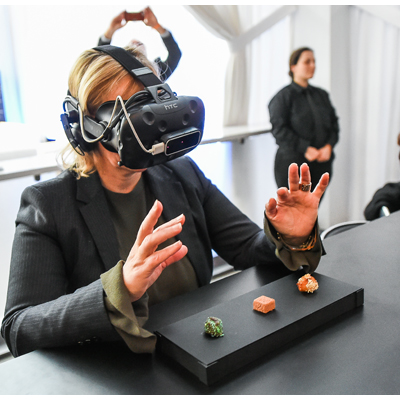
Brand: Royal Caribbean Cruises
Campaign: SeaBeyond
Agency: Jack Morton Worldwide
BEST BUZZ CAMPAIGN—SILVER

Brand: Royal Caribbean Cruises
Campaign: SeaBeyond
Agency: Jack Morton Worldwide
Royal Caribbean Cruises set sail to create an experience for the trade press that would showcase how its technologies are transforming five key areas of travel: guest experience, crew tools and experience, travel planning tools, safety and environment.
The SeaBeyond journey began at home with pre-event communications. Attendees were asked to take a selfie and register via a mobile app developed exclusively for the event.
On event day in New York, guests were transported across the river via water taxi to give them a small taste of their experience “at sea.” After landing at the Brooklyn Navy Yard, they boarded Royal’s exclusive autonomous shuttle, to experience the future in terminal ground transport.
Upon arrival at the historical Duggal Greenhouse, guests were automatically signed in using beacon technology contained in Royal’s event app. This triggered the Fogwall Welcome sign, which welcomed guests individually by name.
After entering through a 270-degree, interactive tunnel surrounded by video of jellyfish and whales (the “Sea”) and the galaxy (the “Beyond”), guests entered an immersive, 360-degree theatre featuring six individual Robo Screens—LED screens mounted on robotic arms—to entertain guests. The robots were programmed to react and follow cues from the presenter, and even bowed at the end of the presentation.
A circular LED screen hung from the celling, to demonstrate Royal’s proprietary Micro-Bubble Air Lubrication System, which allows ships to ride on a blanket of tiny bubbles to reduce friction and drag, saving energy costs.
Once the presentation portion of the evening was complete, guests entered an immersive travel experience, starting in a Living Room space for a VR experience to view shore excursions and see how Royal is easing the vacation planning process with pre-booking. Next, guests experienced the new frictionless onboarding process using facial recognition software and the selfie provided before the event.
Guests could also sample mobile AR games using the app, watch safety demos and participate in a VR dining experience featuring video content that reacted to the motion of eating.
Other experiences included a “Stateroom of the Future” conceptual showroom; a look at Royal’s Hydrogen Fuel Cell System featuring a flexible electric grid that is completely free of harmful emissions and a beacon powered drink ordering system through the mobile app.
The SeaBeyond press experience garnered an impressive amount of buzz across social, online media, print and broadcast television, with 538.3 million total impressions from November 7th to December 13th.
Bronze Winner
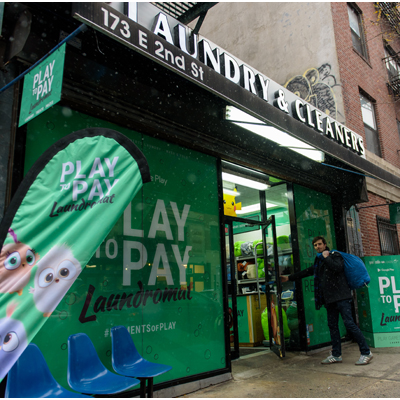
Brand: Google Play
Campaign: Play to Pay Laundromat
Agency: SoHo Experiential
BEST BUZZ—BRONZE

Brand: Google Play
Campaign: Play to Pay Laundromat
Agency: SoHo Experiential
Casual gamers typically prefer to play on their mobile device, and Android app store Google Play wanted to encourage more playing and downloads for both new and current enthusiasts with the Play to Pay Pop-Up Event.
The idea was to reinforce current casual gamer behaviors and build on them, giving casual gamers an opportunity to escape during the day with some of the platform’s most popular titles like Angry Birds Match, Animal Crossing or Pokémon Go. The perfect locations for this? Somewhere people often pull out their phone to entertain themselves when they are bored for a few minutes. Like, say, the laundromat.
Fresh Laundry in New York’s East Village was transformed for the activation overnight. The walls, washers and dryers were wrapped in festive purple, blue and yellow. A café and accent lighting were added, and gaming stations, signage and selfie stations featuring gaming icons like Pokémon and Angry Birds, were moved in. In the morning, passersby woke up to the magic of the Google Play facade.
Visitors used their own mobile devices to play games, snap pictures and share content. When people downloaded a game and cleared a level, a range of prizes—like coffee, cookies, croissants, neck pillows and headphones—were awarded for participation and gaming prowess. Popcorn, detergent and water bottles were free to visitors. Consumers could even win free loads of laundry that were washed, folded and bagged (and even home delivered) while they played featured games.
Over 500 people visited the space over three activation days and users gamed to win over 1,500 prizes. There were 199 score cards redeemed, 263 detergents distributed and 424 cups of coffee provided.
Gold Winner
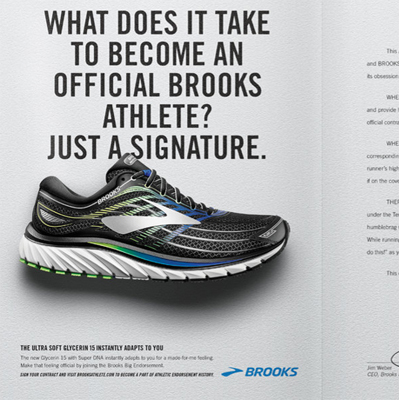
Brand: Brooks Running
Campaign: The Brooks Big Endorsement
Agency: Prize Logic
BEST CAMPAIGN ON A BUDGET (UNDER $250,000)—GOLD

Brand: Brooks Running
Campaign: The Brooks Big Endorsement
Agency: Prize Logic
For the past four years, Brooks shoes were the first- or second-most-popular at the Boston Marathon, and at the 2016 Olympic marathon trials more runners wore Brooks than any other brand. Yet despite this loyal following among serious runners, the brand had yet to secure its power position in the minds of the some 28 million average American runners. As a result, its sales paled compared not only with those of Nike (the Goliath of the business, with $5.2 billion in annual revenue and a full third of the market), but also with those of Adidas, Asics and New Balance.
The “Brooks Big Endorsement Deal” campaign encouraged everyday athletes around the world to literally “sign with the company” via BrooksAthlete.com, where, in addition to bragging rights, Brooks-endorsed athletes got the full superstar athlete treatment: an official contract, a welcome letter from Brooks CEO Jim Weber and a big fat check for $1. They also received access to exclusive gear and sneak peaks at special content from Brooks coaches and professional athletes on training, nutrition and a variety of other running related topics.
“Endorsed” athletes could upload a photo of themselves to create a meme featuring their athlete ID showing that they were a sponsored Brooks athlete. Each new endorsee was encouraged to flaunt their official endorsement to family, new fans and rivals alike on any and all social media channels. Participants in the U.S. and Canada who provided their mailing address were sent endorsement kits featuring a copy of their signed contract and a “Code of Conduct.”
By the end of its, ahem, run last summer, nearly 58,000 runners had become officially endorsed Brooks athletes, exceeding the campaign goal of 20,000. To put that into perspective, real track-and-field sponsorships are notoriously meager; a Market Watch survey found that 80 percent of runners ranked in the top 10 for their events made less than $50,000 a year. The brand investment of the Brooks’ sponsorship promotion was roughly equivalent to adding one top tier professional runner to its roster.
Silver Winner
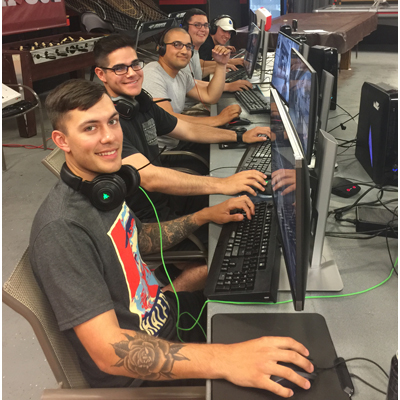
Brand: Alienware
Campaign: Alienware Branch Battle Tournament
Agency: Mosaic
BEST CAMPAIGN ON A BUDGET (UNDER $250,000)—SILVER

Brand: Alienware
Campaign: Alienware Branch Battle Tournament
Agency: Mosaic
To support and celebrate its military fan base while driving awareness and sales for the Alienware brand, Dell unleashed the Branch Battle, a military-focused e-sports tournament with $15,000 in cash and prizes.
The campaign’s target was millennials, primary U.S. military active duty and veteran gamers with a secondary target being all U.S. gamers (non-military). All tournaments took place across 10 military bases selected based on their gaming network (potential gamers on base and gaming facility presence), overall base population and event site facilities.
Prior to the events, the brand’s team spent more than 200 hours setting up 100 Alienware desktop computers and installing gaming software. After initial set-up, all the computers were re-packed and shipped to participating military bases, then un-packed and re-set-up, as well as re-packed and returned to Dell post-event. Whew!
Existing Dell social channels, including the company’s military-specific profiles, were used to spread the word on Facebook, Twitter and Instagram. Alienware, with its more than 377,000 followers, posted on Twitter to help drive sign-ups. Excitement also grew organically as military-related social accounts, like the U.S Army’s W.T.F Moments shared the news.
A total of 349 military members and 66 teams participated in the Branch Battle tournament, surpassing expectations by 40 percent. Additionally, more than 2,500 consumers tuned in to watch the Branch Battle semi-finals and finals via Twitch, surpassing expectations by more than 400 percent.
During the campaign, the 10 percent off coupon code was used 268 times, surpassing expectations by 168 percent. Moreover, an additional 27 Alienware units were sold without the coupon. With Dell spending just $150,000 on the entire Battle Branch campaign, Alienware’s short term sales boost—August through October—resulted in a 236 percent ROI for the client. Good game, Dell.
Bronze Winner
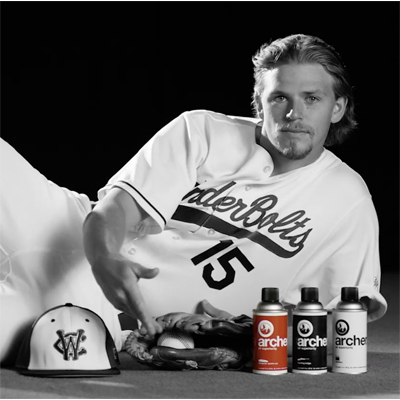
Brand: Archer
Campaign: The Biggest Sports Endorsement Deal of All Time
Agency: FCB Chicago
BEST CAMPAIGN ON A BUDGET (UNDER $250,000)—BRONZE

Brand: Archer
Campaign: The Biggest Sports Endorsement Deal of All Time
Agency: FCB Chicago
To fight its way out from under competitors like P&G and Unilever, Archer, a small home care company for men, turned to social media with a bold goal to increase the brand’s social engagement by 10X. Here’s the setup.
Record breaking sports endorsements deals make headlines for brands. The higher the total amount of a sports endorsement deal, the bigger the headlines. And the highest paid athletes aren’t just paid for their skills during their games, it’s their partnerships with brands that rake in the dough. Nike holds the most notable amount of athletes under contract with 48 of the top 100, including Cristiano Ronaldo, LeBron James and Serena Williams.
With that in mind, Archer pulled a brilliant tongue-in-cheek challenger brand move by signing the Biggest Sports Endorsement Deal of All Time: $3.4 billion paid out over 10 million years to Windy City Thunderbolts pitcher Clay Chapman. Clay was deemed the perfect fit for the brand because he’s a young, hungry player who “really appreciates a good air freshener” (since he spends so much time in locker rooms).
Archer alerted the biggest sports networks and media, including ESPN, Comcast SportsNet, NBC Sports Network, FOX Sports, CBS and AP who were invited to Archer’s press conference where they brand presented an oversized $3.4 billion check and streamed the whole event on Facebook Live.
The Biggest Sports Endorsement of All Time not only had a massive impact on elevating Archer’s awareness, but helped the brand earn a 142 percent increase in sales. Even with a small budget, that’s a pretty impressive lift for the first year of the endorsement. Archer expects the trajectory to continue over the next 9,999,999 years.
Gold Winner
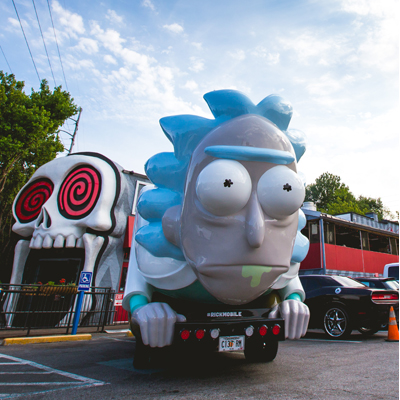
Brand: Adult Swim
Campaign: The Don’t Even Trip Road Trip
Agency: The XD Agency
BEST CAMPAIGN TARGETING MILLENNIALS—GOLD

Brand: Adult Swim
Campaign: The Don’t Even Trip Road Trip
Agency: The XD Agency
To celebrate the much-anticipated third season of the animated show “Rick and Morty,” Adult Swim and The XD Agency created a mobile pop-up shop and nationwide tour to give fans an outlet where they could explore their obsession with like-minded loyalists, while propagating enthusiasm for the show.
A Ford Transit, topped with a giant drooling sculpture of Rick made from carved Styrofoam on a steel frame, caused quite a stir as it traveled the roadways, driving social buzz and creating community.
The “Don’t Even Trip Road Trip” kicked off when the truck arrived in Atlanta on May 11. At each stop—at a mix of bars and comic book shops—the Rickmobile encountered lines of fans snaking around the block. The side of the giant Rickmobile opened to reveal a swag shop, staffed by ambassadors, that sold “poopy butthole” towels, retro aluminum spaceships, toy cars and character-themed pool floats, among other things. A Rick plush toy rode shotgun in the Rickmobile, driving sales of that item even further. Merchandise sales topped $2 million, comprising 50,400 transactions and 128,366 items, even after a cap at two items per person.
The experiential campaign was promoted only via social channels and word of mouth, creating an element of suspense and surprise. (One media outlet called secrecy the secret to its striking success.) As it continued to weave its way around the country, it quickly built enormous momentum, with fans even campaigning for stops in their towns.
In total, the tour generated 27,461 posts, 254,725 engagements and 50 million impressions on Twitter and Instagram alone. Add to that were Facebook posts and user-generated videos on YouTube, along with plenty of media coverage.
Silver Winner

Brand: T-Mobile
Campaign: Reaping Rewards with T-Mobile
Agency: The Marketing Store
BEST CAMPAIGN TARGETING MILLENNIALS—SILVER

Brand: T-Mobile
Campaign: Reaping Rewards with T-Mobile
Agency: The Marketing Store
Like many brands, T-Mobile had some challenges with its loyalty program. First among them: Consumers hate the red tape generally associated with claiming the rewards.
With that pain point in mind, the company set out to create a loyalty program that truly made customers feel loved. T-Mobile Tuesdays, a mobile app available to anyone using the carrier, was the brand’s way of showing appreciation to subscribers with exclusive gifts and once-in-a-lifetime prizes, rather than points and rewards only available with additional purchases.
The idea behind the program and its #GetThanked tag was simple: Open the app every Tuesday and collect free stuff from popular partner brands, and get entered to win big prizes like a cruise through the Caribbean or a $10,000 shopping spree.
T-Mobile Tuesdays lives in a dynamic app for both iOS and Android, as well as web and mobile web. This helped support a flexible program that can change and react to trends. Customers appreciated the easier experience, and the feeling that they were empowered to make choices with T-Mobile and its partner brands.
In 2017, T-Mobile Tuesdays had over 20 million downloads and more than 100 million redemptions, and over 140 partner deals for customers. The conversion rate for registration improved by 200 percent, and since relaunch the program has seen three times more registrations per week and a 27 percent decrease in customer turnover.
Bronze Winner
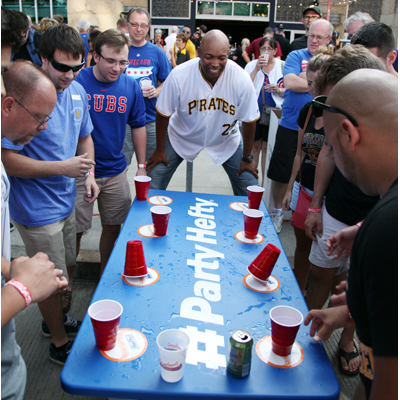
Brand: Hefty
Campaign: Hefty Flip Cup Challenge
Agency: Inspira Marketing Group
BEST CAMPAIGN TARGETING MILLENNIALS—BRONZE

Brand: Hefty
Campaign: Hefty Flip Cup Challenge
Agency: Inspira Marketing Group
When it comes to partying, the right cup can literally make or break the moment. However, despite its standing as the top-selling branded party cup in America, Hefty lagged in awareness and relevance with Millennials.
The brand wanted to create an experience that would generate national media attention and establish Hefty as the top name in the category. By incorporating a familiar game (centered around the product), opportunities for customization and photo engagements fit for social media, the activation sought to resonate with an age group that’s notoriously tough to impress.
The “Hefty Flip Cup Challenge” was designed to create memories that would drive consideration at point of purchase. Equipped with a larger-than-life inflatable party cup to generate attention from passersby, Hefty stepped up to the plate (so to speak) and brought the party to three Major League Baseball stadiums (Los Angeles, Pittsburgh and St. Louis), encouraging consumers to get their friends together and experience what it means to #PartyHefty.
Upon entering the footprint, consumers registered their team to participate in the ultimate flip cup tournament before moving on to the t-shirt press, where they had the opportunity to print custom team “uniforms.” After a few rounds of flip cup fun, teams captured their moment at the GIF booth, which allowed for social media sharing and amplification. Alumni from the Cardinals, Pirates and Angels were onsite at their respective stadiums to join in on games and meet with participants.
At each location, one lucky team was selected to win an all-expenses-paid trip to Miami to compete in the Hefty Flip Cup Challenge Championship and attend the MLB All Star game.
Overall, the Hefty Flip Cup Challenge garnered nationwide media attention and buzz. The campaign reached over 123 million people across 13 earned media placements. Paid media placement in partnership with SB Nation gained over nine million impressions. Influencers generated over 10,700 engagements with the branded content. Onsite, more than 300 games of flip cup were played by 464 participants, with over 500 custom t-shirts created and 316 GIFs captured. These results exceeded expectations and aligned with program goals, which were rooted in brand awareness and media exposure.
Gold Winner
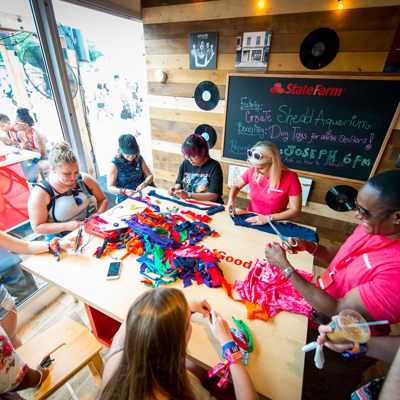
Brand: State Farm
Campaign: State Farm Neighborhood of Good
Agency: The Marketing Arm
BEST CAUSE-BASED CAMPAIGN—GOLD

Brand: State Farm
Campaign: State Farm Neighborhood of Good
Agency: The Marketing Arm
State Farm was aware that volunteerism was at historic lows. While 70 percent of Americans expressed a desire to volunteer, only 25 percent actually did it. Why? People don’t know when and where to help.
Enter the Neighborhood of Good platform and website where consumers can search nearby causes and volunteer initiatives in their local communities. To spark action and educate consumers about the program, volunteer events were staged during key moments of the year. In May 2017, volunteers packed meals for at-risk youth. During the summer, State Farm brought its #HereToHelp Lounge to music festivals. Micro-volunteering activities, augmented reality and custom cause-related posters designed like record store vinyl gave festivalgoers a unique viewpoint on neighborhood needs. State Farm also recognized Good Neighbor Day, not just on September 28, but for the entire month of September. The Good Neighbor Crew held micro-volunteering events from launch in March to December.
Buzz around Neighborhood of Good began to pick up steam with TV broadcasts, celebrity influencer partnerships, and paid integrations with “Good Morning America,” “The Today Show,” and “Black-ish.” By working with local nonprofits to benefit multiple causes and starting honest dialogues on local needs, the program solidified State Farm, not only as a brand that’s there when something goes wrong, but also as a friendly neighbor who is “here to help life go right.”
By the end of its run, State Farm had partnered with more than 400 nonprofits, recruited more than 60,000 volunteers, logged more than 17,000 volunteer hours and generated 130,000 acts of good. NeighborhoodofGood.com received 1.69 million site visits and 1.23 million volunteer searches in 2017.
To top it off, surveys found that 50 percent of current customers and 31 percent of non-current customers said State Farm is committed to improving communities and helping people. Good stuff.
Silver Winner
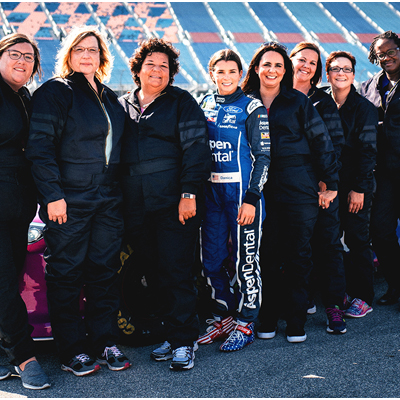
Brand: Ford
Campaign: Ford Warriors in Pink More Good Days Tour
Agency: Match Marketing
BEST CAUSE-BASED CAMPAIGN—SILVER

Brand: Ford
Campaign: Ford Warriors in Pink More Good Days Tour
Agency: Match Marketing
For more than a decade, Ford’s Warriors in Pink (WIP) Moore Good Days Tour has united the breast cancer community and supported those in the fight.
The initiative is anchored by the More Good Days website which launched last year in six key markets—Denver, Miami, Seattle, Chicago, Atlanta, and New York—offering survivors and patients the chance to apply to try new experiences from white-water rafting to cooking classes. The experiences were curated to inspire and deliver a wide range of More Good Days to Warriors in Pink.
The six markets were selected based on the existing network of Ford Warriors in Pink Models of Courage, advocates who have successfully battled breast cancer and are dedicated to helping others in the fight.
The program was promoted through a targeted Facebook paid-media campaign encouraging survivors to go to the More Good Days Tour website and apply to participate in the experience of their choice. Upon arrival, a WIP Model of Courage greeted the participants and welcomed them into the Warriors in Pink community.
Select events featured celebrity ambassadors and a chance to capture content and disseminate it through paid media to further raise awareness for the program. These experiences included an on-track driving experience with NASCAR superstar Danica Patrick and vocal lessons with singer and songwriter Rachel Platten.
More than 400 people impacted by breast cancer participated in the program across 56 experiences in six markets. In a post-program survey, participants rated their experience a 4.7 out of 5 and 97 percent said they would participate in another More Good Days Experience.
On top of that, the program generated more than eight million paid impressions and earned media coverage in 32 outlets nationwide. Collaborations with Rachel Platten and Danica Patrick drew significant interest, resulting in a combined 30 placements and 258 million impressions.
Bronze Winner
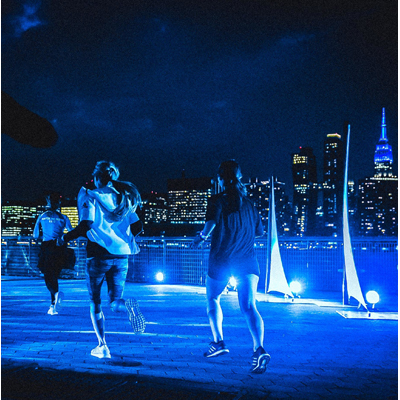
Brand: adidas
Campaign: Run for the Ocean
Agency: Match Marketing Group
BEST CAUSE-BASED CAMPAIGN—BRONZE

Brand: adidas
Campaign: Run for the Ocean
Agency: Match Marketing Group
Adidas America had a new shoe to debut, the adidas x Parley Ultraboost, and the plan was to do it in a way that would drive engagement around the rising threat of ocean plastic.
Since 2015, adidas has been working with Parley to address the problem by transforming ocean plastic into high performance sportswear. In 2017, the brand was preparing to launch its first collaborative product, a shoe that was 80 percent comprised of upcycled ocean plastic.
Rather than merely engage runners for a single moment in time, the brand used the campaign as an opportunity to build a digital community of runners that it could continue to communicate with well into the future.
A disruptive run was staged with 725 activists, influencers, celebrities and media on World Ocean’s Day during the U.N. Ocean Conference in New York City. The brand moment has to be zero-waste so traditional race course branding was eliminated, opting instead for interactive and dynamic lighting installations to literally turn the streets of New York blue.
All runners were equipped with LED wristbands that grew brighter with every step. Wristbands interacted with light-based installations throughout the racecourse, including ocean projections and wave-like environmental features, creating a dynamic and highly sharable race experience for runners. Even the Empire State Building glowed blue in support of the Run for the Oceans movement.
The program drove an unprecedented level of social engagement compared to other adidas product launches with 9,700 unique mentions and 449 million in potential social impressions. Over 50,000 runners were recruited across the globe to participate in the experience digitally, resulting in over 572,000 kilometers run—equivalent to14 times around the earth.
The program, provided adidas with the nucleus for a community of engaged and socially conscious runners with whom they can continue to communicate about future adidas x Parley product innovations and Run for the Oceans initiatives.
Gold Winner

Brand: Beech-Nut Nutrition
Campaign: Turn the Labels Around
Agency: Scrum50
BEST CROSS-CHANNEL ENGAGEMENT—GOLD

Brand: Beech-Nut Nutrition
Campaign: Turn the Labels Around
Agency: Scrum50
Motherhood is a jungle of judgment—from how to have a baby, to how to clothe them, carry them, protect them and help them sleep. Every move is scrutinized. But there is perhaps no decision more fraught with opinions than how to choose to feed your child. Every mother hopes she’s doing the right thing, but her confidence is constantly under fire, and she’s called a lot of things along the way.
This campaign was all about getting parents of babies and toddlers (particularly Millennial moms) to see Beech-Nut as a brand that offers a wide range of good-for-you options, while shining a spotlight on how hard it is to be a mom.
Through an engaging and emotional duo of videos that made a powerful statement, heightened awareness of the issue and showcased the clean ingredient labels of Beech-Nut’s natural and organic real foods, parents were emboldened to “mom it forward” and “show moms love” by giving inspiring (and often tear-jerking) shout-outs to moms they thought were doing a great job.
The result? Velocity, (the speed at which product leaves shelves in store), jumped by 70 percent.
Silver Winner
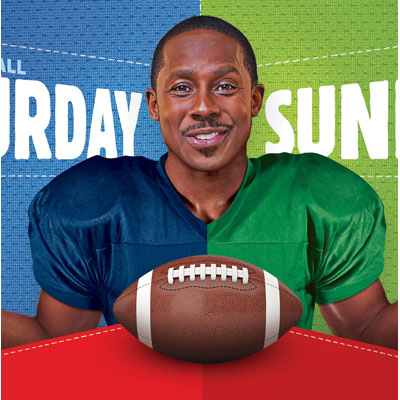
Brand: Cheez-It & Pringles
Campaign: Saturday vs. Sunday
Agency: Catapult
BEST CROSS-CHANNEL ENGAGEMENT—SILVER

Brand: Cheez-It & Pringles
Campaign: Saturday vs. Sunday
Agency: Catapult
Cheez-It and Pringles competitors’ deep pockets gave them a chokehold on both NFL and NCAA sponsorship tie-ins. But despite their big budgets, the brands’ larger adversaries could not activate in both spaces, because their league sponsorship investments forced them into either the pro or college space exclusively. Turning this adversity to its advantage, Cheez-It and Pringles was able to cleverly craft one message that engaged both sets of fans at once.
The creative platform was a “Great Debate” about whose game was superior. The “Saturday vs. Sunday—Voice Your Choice” promotion asked fans to choose their favorite day of football: College Football Saturday or Pro Football Sunday.
Retailers quickly recognized the inherent strength of the idea, and bought in on a variety of sizable in-store displays.
The core offer was a combination election and sweepstakes. Entrants could tweet to #TeamSaturdayEntry or #TeamSundayEntry “your most outrageous Cheez-It field goal” (using an index finger to kick the cracker through the uprights—found on the Cheez-It box, of course), or uploading the receipt from a qualifying purchase. Fans could vote and enter up to 10 times a day. Former college and pro star Desmond Howard joined as spokesperson, straddling the middle of product packaging and POS between college-loving and pro-loving trash talk. Fans were invited to “Voice Your Choice” to win $10,000 in season ticket cash to see their favorite team.
The campaign’s goals were ambitious and included one million sweeps entries, a 44 percent jump from the prior year. Effectiveness in social channels exploded, with more than 14 million impressions and a 9,700 percent increase in Twitter sweepstakes entries. Pringles and Cheez-It combined for more displays than the previous year’s football campaign, contributing to a 30 percent YOY increase in displays. At its bottom line, “Saturday vs. Sunday” helped grow market share, outpaced KPIs, increased sales volume five percent, and rang up even more substantial gains at critical retailers like Walmart, Publix, Food Lion, Walgreens and Dollar General.
Bronze Winner

Brand: Deutsche Bank AG
Campaign: Information Security Awareness Campaign
Agency: Stagg & Friends GBH
BEST CROSS-CHANNEL ENGAGEMENT—BRONZE

Brand: Deutsche Bank AG
Campaign: Information Security Awareness Campaign
Agency: Stagg & Friends GBH
Cybercrime is increasingly posing a risk to the economy. With around 97,500 employees in 65 countries, Deutsche Bank is a popular target for hackers. But the weakest link isn’t the technology—it’s the employees that organized crime is seeking to exploit.
Deutsche Bank wanted to motivate employees in 65 countries with the campaign, and encourage them change behaviors that could leave them vulnerable to a cyberattack.
The campaign, “The target is you,” played on Debbie, a fictitious, relatable Deutsche Bank employee who had her own profile, ID card and DB email address. She was employed as a financial adviser in Frankfurt and was regularly faced with fictitious situations that could happen to any of us. For instance, she falls victim to a social engineer who has misappropriated her LinkedIn profile, and she experiences a social media faux pas at a karaoke evening attended by colleagues from Deutsche Bank.
The campaign launched with an international roadshow that brought Debbie to life for DB employees. A late-night show featured Debbie “live” on stage in an interactive demonstration to 1,500 colleagues of how quickly a smartphone can be hacked with just one “ring.” Live hacks, Wi-Fi spying via drone, live security hotline calls, security buzz quizzes—all this combined to bring the topic to life successfully and provided material for the campaign.
The global campaign featured 13 films with “everyday stories” on all kinds of relevant topics, a specially developed design language in the form of (icon-based) behavior hacks that describe complex matters in simple terms. There were also guerrilla efforts, one-pagers, flyers, posters, roll-ups and smartphone cleaners. The main focus was the intranet site. Updated on a regular basis, it formed the cornerstone of the day-to-day dialogue with employees.
Six “sold-out” international roadshow appearances addressed over 1,500 employees. Campaign message communicated directly to over 10,000 employees at the roadshow locations before and after the events. Over 20,000-intranet site hits at the campaign launch in Germany alone and about 20,000 globally.
Gold Winner
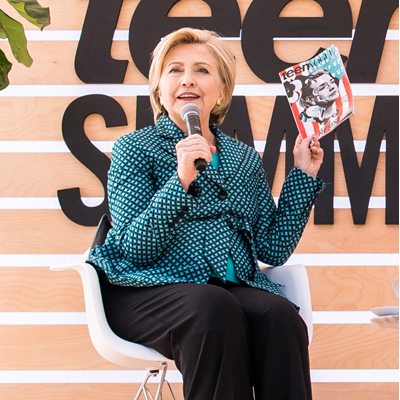
Brand: Teen Vogue
Campaign: Teen Vogue Summit
Agency: 23 Stories X Condé Nast
BEST CAMPAIGN TARGETING GEN Z—GOLD

Brand: Teen Vogue
Campaign: Teen Vogue Summit
Agency: 23 Stories X Condé Nast
The Teen Vogue Summit was designed as two days of activism and inspiration in Los Angeles, to connect the next generation of activists, creators and innovators with their heroes from the worlds of business, tech, fashion, entertainment, science and education, via workshops, mentor sessions, music, meditation and more.
To help execute the event, Teen Vogue worked with partner Toms, which underwrote special meet ups in five cities that mirrored the spirit of the L.A. event. Tickets and travel costs for 50 attendees were underwritten with support from Step Up, LIFEWTR and PBTeen.
The Summit included career-focused experiences at companies like Instagram, YouTube, Netflix and more as well as special main stage events such as “Grown-ish” star Yara Shahidi in conversation with Secretary Hillary Clinton. Throughout the two days, attendees participated in immersive sponsor activations, workshops and panel discussions.
Additional marketing vehicles included speakers’ social media pages, the summit’s website, a “scholarship” program in which young women wrote personal essays for the chance to attend for free, numerous social media posts across Teen Vogue’s channels, and an email outreach campaign to the magazine’s subscribers. The summit also included 13 official brand sponsors, including PBteen, Philosophy, Google Pixel and PlayStation.
The Summit attracted more than 600 next gen game-changers and drove over $200,000 in ticket sales across all events. With extensive media coverage including The New York Times and a dedicated segment on ABC News, the impact was felt far beyond L.A. and garnered over one billion press and social impressions.
Silver Winner
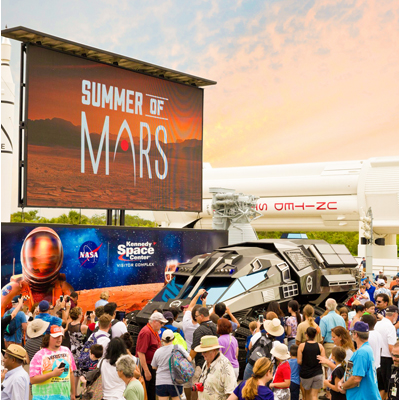
Brand: Kennedy Space Center Visitor Center
Campaign: The Summer of Mars Experience Tour
Agency: Marketing Werks
BEST CAMPAIGN TARGETING GEN Z—SILVER

Brand: Kennedy Space Center Visitor Center
Campaign: The Summer of Mars Experience Tour
Agency: Marketing Werks
When families dream of vacationing in Florida, they mostly dream of the Magic Kingdom. Florida’s Kennedy Space Center Visitor Complex (KSCVC) had an even bigger dream: They hoped to inspire the next generation of astronauts.
Leveraging partnerships with both NASA and p.r. firm Sandy Hillman, a STEM-focused itinerary was planned to bring an inspiring activation to the nation’s top educational centers, including the Smithsonian’s National Air and Space Museum; New York’s Intrepid Sea, Air and Space Museum; and New Jersey’s Liberty Science Center.
A Mars concept rover was commissioned to showcase what exploration on Mars would actually look like. If kids could experience the rover up close, the hope was their passions for space exploration—and the space center—would go into overdrive.
For the Summer of Mars Experience Tour, a custom trailer was upgraded into a suitable transport for a p.r. tour, complete with foldout family stage views. The four-market road show brought the rover to STEM-focused destinations, in conjunction with science weekends where museum destinations were already planning Mars-focused programing. Local media was contacted at each stop to maximize p.r. opportunities.
Astronauts such as Jon McBride were engaged to appear at tour stops, to discuss the rover, the mission and the future of space travel. At the experience, kids could try on VR goggles for a virtual walk on the red planet, and learn about planning and organizing for the Mars habitat via an interactive video game called Cosmic Quest. Free inspirational posters and stickers encouraged kids to consider a future as an astronaut or STEM worker, and onsite snack time of course included astronaut ice cream. Additionally, a social media sweepstakes, #NameTheRover, spread the good word and awarded those who participated by region.
Of course, the hero of the experience was the Mars rover itself. With giant Martian terrain-ready tires, flashing digital displays, an onboard science lab and a stunning astronaut-designed cockpit, the rover was a sight to be seen—and to be seen with in selfies shared on social.
The total publicity value of the campaign was estimated at $2.3 million, with 1.9 billion media impressions and more than 1,000 media placements. On-site, 20,397 engagements were logged and 2,338 sweepstake entries were received.
Bronze Winner
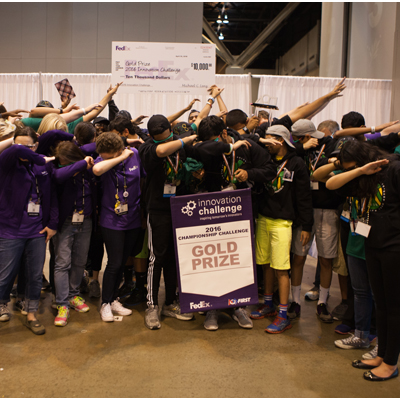
Brand: FedEx
Campaign: FedEx Innovation Challenge
Agency: Switch
BEST CAMPAIGN TARGETING GEN Z—BRONZE

Brand: FedEx
Campaign: FedEx Innovation Challenge
Agency: Switch
When it comes to tech and engineering, Gen Z students already know about Google, Apple and Yahoo. But FedEx isn’t typically thought of as an innovator in these areas.
As sponsor of the FIRST (For Inspiration and Recognition of Science and Technology) Robotics Competition and the FIRST Tech Challenge, FedEx wanted to highlight their expertise to position themselves as future employers for the next generation.
The FedEx Innovation Challenge consisted of math and science problems, scavenger hunt activities, photo ops, FedEx innovation trivia and more. By leveraging digital and social elements to post challenge questions, track activity and aggregate responses, the competition went beyond building robots and into creating brand enthusiasm. A digital strategy provided an extra layer of competition, letting entrants compete in a social-media based contest over the course of the event. All answers were submitted via Twitter and Instagram over the course of four months and submissions were aggregated to a microsite that served as the hub for the competition.
A custom and proprietary social media gamification judging software called PostActive (postactive.io) was created for the competition, all of the entries to be aggregated into one place, sorted and judged. The top teams were eligible to win a $10,000, $7,500 or $5,000 grant for their 2016 FIRST Robotics initiative. Secondary prizes were awarded every step along the way, including drones, VR gear and more.
More than 1,700 qualifying entries were received, and during the campaign 65,000 Instagram posts and 35,000 Twitter posts were received.
Gold Winner

Brand: T-Mobile
Campaign: Reaping Rewards with T-Mobile
Agency: The Marketing Store
BEST DIGITAL CAMPAIGN—GOLD

Brand: T-Mobile
Campaign: Reaping Rewards with T-Mobile
Agency: The Marketing Store
Like many brands, T-Mobile had some challenges with its loyalty program. First among them: Consumers hate the red tape generally associated with claiming the rewards.
With that pain point in mind, the company set out to create a loyalty program that truly made customers feel loved. T-Mobile Tuesdays, a mobile app available to anyone using the carrier, was the brand’s way of showing appreciation to subscribers with exclusive gifts and once-in-a-lifetime prizes, rather than points and rewards only available with additional purchases.
The idea behind the program and its #GetThanked tag was simple: Open the app every Tuesday and collect free stuff from popular partner brands, and get entered to win big prizes like a cruise through the Caribbean or a $10,000 shopping spree.
T-Mobile Tuesdays lives in a dynamic app for both iOS and Android, as well as web and mobile web. This helped support a flexible program that can change and react to trends. Customers appreciated the easier experience, and the feeling that they were empowered to make choices with T-Mobile and its partner brands.
In 2017, T-Mobile Tuesdays had over 20 million downloads and more than 100 million redemptions, and over 140 partner deals for customers. The conversion rate for registration improved by 200 percent, and since relaunch the program has seen three times more registrations per week and a 27 percent decrease in customer turnover.
Silver Winner

Brand: Wholesome
Campaign: Sweet Confessions
Agency: Upshot
BEST DIGITAL CAMPAIGN—SILVER

Brand: Wholesome
Campaign: Sweet Confessions
Agency: Upshot
Wholesome is North America’s leading Fair Trade Certified, non-GMO, organic candy and sweetener company. But like many brands in the organic category, it has suffered from a reluctance by consumers to trust its taste and texture.
The Sweet Confessions campaign invited consumers to experience the real taste of Wholesome candy through two big seasonal pushes for Halloween and the Holidays.
Campaign creative showed consumers that Wholesome and Surf Sweets candy is really good because they’re made with real ingredients sourced from around the world. Sweet Confessions homed in on key audiences, emphasized innovative formats and told stories across high-reach, sales-driving digital media vehicles, engaging editorial content, personalized mobile and in-the-moment social platforms.
Paid search drove users to the Wholesome site to learn more about its products and encouraged purchases in its ecommerce shop. Dynamic display ads reached qualified shoppers who were in close vicinity and/or who frequently shop at Wholesome retailers. Influencer content through Ahalogy’s network was tailored to the interests of the Wholesome shopper. Influencers shared their sweet confessions across blogs and social using their own voice, photographs and style. Wholesome leveraged the influencer content and assets to extend the partnership to the brand’s own channels.
Paid and organic social posts, mobile coupons and a content partnership rounded out the campaign.
The Halloween campaign delivered over 28 million impressions, 33,000 website visits and 1,440 store locator lookups across all media. The Holiday campaign generated 5.4 million impressions with 7,100 website visits. Nearly 90 percent of all site visitors from December’s candy media were first-time visitors.
To boot, Wholesome.com ecommerce rose from five percent to 25 percent. And to sweeten the pot, October’s retail sales increased 27 percent YOY in natural channels and 26 percent YOY in conventional retailers. The campaign had a lasting effect on consumers too, helping grow November retail sales (typically a slower month) by 114 percent YOY across all channels.
Bronze Winner
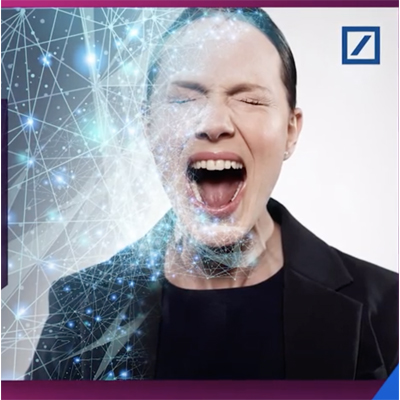
Brand: Deutsche Bank AG
Campaign: Information Security Awareness Campaign
Agency: Stagg & Friends GBH
BEST DIGITAL CAMPAIGN—BRONZE

Brand: Deutsche Bank AG
Campaign: Information Security Awareness Campaign
Agency: Stagg & Friends GBH
Cybercrime is increasingly posing a risk to the economy. With around 97,500 employees in 65 countries, Deutsche Bank is a popular target for hackers. But the weakest link isn’t the technology—it’s the employees that organized crime is seeking to exploit.
Deutsche Bank wanted to motivate employees in 65 countries with the campaign, and encourage them change behaviors that could leave them vulnerable to a cyberattack.
The campaign, “The target is you,” played on Debbie, a fictitious, relatable Deutsche Bank employee who had her own profile, ID card and DB email address. She was employed as a financial adviser in Frankfurt and was regularly faced with fictitious situations that could happen to any of us. For instance, she falls victim to a social engineer who has misappropriated her LinkedIn profile, and she experiences a social media faux pas at a karaoke evening attended by colleagues from Deutsche Bank.
The campaign launched with an international roadshow that brought Debbie to life for DB employees. A late-night show featured Debbie “live” on stage in an interactive demonstration to 1,500 colleagues of how quickly a smartphone can be hacked with just one “ring.” Live hacks, Wi-Fi spying via drone, live security hotline calls, security buzz quizzes—all this combined to bring the topic to life successfully and provided material for the campaign.
The global campaign featured 13 films with “everyday stories” on all kinds of relevant topics, a specially developed design language in the form of (icon-based) behavior hacks that describe complex matters in simple terms. There were also guerrilla efforts, one-pagers, flyers, posters, roll-ups and smartphone cleaners. The main focus was the intranet site. Updated on a regular basis, it formed the cornerstone of the day-to-day dialogue with employees.
Six “sold-out” international roadshow appearances addressed over 1,500 employees. Campaign message communicated directly to over 10,000 employees at the roadshow locations before and after the events. Over 20,000-intranet site hits at the campaign launch in Germany alone and about 20,000 globally.
Gold Winner
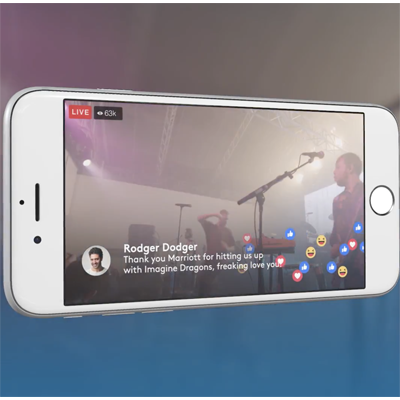
Brand: Marriott Rewards
Campaign: Imagine Dragons LIVE from Bangkok
Agency: In-house
BEST ENTERTAINMENT SPONSORSHIP OR TIE-IN—GOLD

Brand: Marriott Rewards
Campaign: Imagine Dragons LIVE from Bangkok
Agency: In-house
With the launch of the Marriott Rewards Moments platform, loyalty members can now redeem points on amazing curated sports, entertainment and culinary experiences that money can’t buy. To raise awareness for this perk, Marriott Rewards showcased a standout music moment on Facebook Live: access to an intimate Imagine Dragons concert at the Bangkok Marriott Marquis Queen’s Park.
Livestreams can often struggle to reach peak engagement in a short amount of time. To maximize viewership and keep members watching engaged, a branded lead-in video built excitement and anticipation before the band took the stage in Bangkok.
In the days before the concert, Marriott Rewards members and Imagine Dragons fans were encouraged to set a reminder on Facebook for the livestream via social media and email. When the preproduced branded video began just before the scheduled start time, members received a notification inviting them to join the stream.
When a significant livestream audience had been established on Facebook, live cameras flipped on from the Bangkok Marriott Marquis Queen’s Park and Imagine Dragons took the stage. Viewers watched Imagine Dragons perform fan favorites and interact with members in the crowd. To keep members at home engaged, Marriott Rewards used on-screen tactics like polls that updated in real-time based on viewer feedback. Viewer comments were broadcast in the bottom third of the screen to recognize members watching from around the world.
The feed saw more than 66,000 unique viewers tune in from around the world during the 30-minute show—the equivalent of filling Madison Square Garden three times over.
Gaining significant momentum since, members have now watched more than 4,891 hours of the livestream, reaching more than five million unique people (108 percent above goal), garnering more than 650,000 views (30 percent above goal), and generating more than 77,000 engagements.
Silver Winner
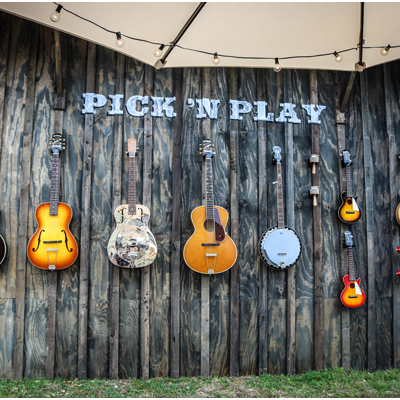
Brand: Southwest Airlines
Campaign: Southwest at Luck Reunion
Agency: AMP Agency
BEST ENTERTAINMENT SPONSORSHIP OR TIE-IN—SILVER

Brand: Southwest Airlines
Campaign: Southwest at Luck Reunion
Agency: AMP Agency
Southwest Airlines wanted to create unique and exclusive content to populate their new online music portal Southwest.fm prior to launch. They also wanted to build meaningful relationships with emerging artists that can become part of the Southwest “Artists On The Rise” program and be part of the conversation around SXSW in a unique, interesting and ownable way. The Southwest at Luck Reunion campaign delivered on all fronts by escaping Austin altogether.
The heart of the program was an exclusive annual event hosted by Willie Nelson on his Luck, Texas, ranch. “Luck Reunion” has become a movement dedicated to cultivating and spreading the culture of Luck, attracting 3,500. Southwest is integrated throughout, starting with exclusive branding on the bandana everyone receives as they entered an old west ghost town full of music, art, food and drink (the bandana also served as a site map). Next to the main stage, a glowing Southwest neon sign perched atop the “Luck Tannery.” Visitors could step inside and meet Odin Clack, owner of Austin-based Odin Leather Goods, who gave out custom Southwest + Luck co-branded leather luggage tags that attendees could personalize in the shop.
In the adjacent field dubbed “the Southwest Porch,” attendees could step up to the Southwest + Lagunitas bar for a free beer. Custom co-branded guitar picks were scattered throughout the space with signage playfully inviting folks to “take your pick” of seats on one of the vintage couches, a nod to Southwest’s open seating policy. After a rest, people could head over to the Southwest + Epiphone “Pick N Play” wall to show off their mandolin skills for impressed onlookers. Exclusive acoustic sets could be herd in the VIP area.
Approximately 400 entries were received for the #SouthwestLuckSweepstakes social contest, to win a trip to Luck Reunion. The co-branded Luck/Southwest Snapchat geo-filter logged 10,007 views. Approximately 300 guests participated in the Southwest/Epiphone “Pick n Play” experience. A video posted on Facebook post event about the experience was viewed 27,976 times by 27,445 unique viewers.
Bronze Winner
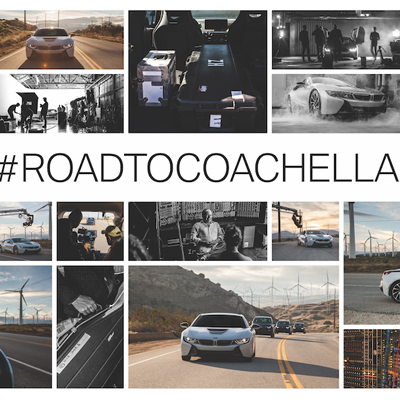
Brand: BMW
Campaign: Road to Coachella
Agency: Mirrored Media
BEST ENTERTAINMENT SPONSORSHIP OR TIE-IN—BRONZE

Brand: BMW
Campaign: Road to Coachella
Agency: Mirrored Media
Industry-first partnerships with composer Hans Zimmer and Coachella helped BMW increase awareness of its eco-friendly i Series of vehicles with electric capabilities.
Zimmer playing Coachella was unprecedented in-and-of itself, breaking the mold of what festivalgoers expect. Neither Zimmer nor any other composer had been featured at such a festival before. Similarly, Coachella never had an automotive sponsor, nor was BMW a brand that attendees would normally associate with a music festival. BMW and Zimmer were challenged to create an organic connection between their respective brands and festival attendees.
An artistic and visually-inspiring content piece was the centerpiece of the program, featuring an original score by Zimmer along with a cast of Coachella and influencer cameos. The narrative followed Zimmer along his journey to his first-ever and much-anticipated Coachella headlining performance.
A social media campaign with 10 influencers and artists created engagement and dialogue. Posts included calls to action for fans to watch the original content, and offered festivalgoers the chance to win weekend passes by documenting their own preparation and journey to the Coachella Valley via social media using the hashtag #RoadToCoachella.
The campaign launched with three social media-based teasers released by Coachella and BMW on their respective social media channels. The first teaser officially announced BMW’s sponsorship. The second hinted at Zimmer’s participation in the campaign. The third and final teaser helped craft the storytelling experience and drove traffic to the long-form content. The pieces quickly went viral across social media, leaving fans curious and anxious to see what would happen next.
On the festival grounds, BMW invited visitors to a brand lounge in the VIP area where fans were able to experience the vehicle and its unique Coachella-inspired designs, co-developed with Garage Italia Customs. An eye-catching photo collage in the VIP tent documented the making of the Road to Coachella campaign and featured original behind-the-scenes photos of the i8 and i3 in action with cameos by Hans Zimmer, musician Nile Marr (son of the Smiths’ Johnny Marr) and photographer Brian Willette.
The campaign received over 35 million impressions, with each video going viral across social media. The #RoadToCoachella hashtag generated over 2,500 mentions and over 33 million impressions. The influencer campaign garnered over 20 million impressions, 240,000 likes and 1,200 comments.
Gold Winner
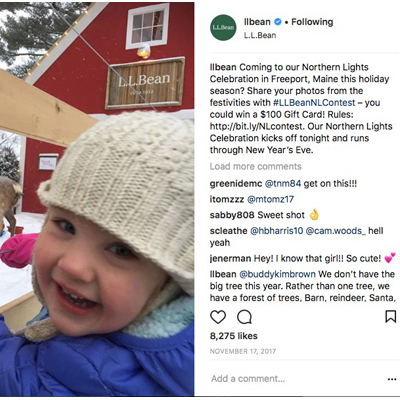
Brand: L.L. Bean
Campaign: L.L. Bean Northern Lights Celebration
Agency: Newbridge Marketing Group
BEST HOLIDAY OR SEASONAL-THEMED CAMPAIGN—GOLD

Brand: L.L. Bean
Campaign: L.L. Bean Northern Lights Celebration
Agency: Newbridge Marketing Group
L.L. Bean wanted to create a holiday happening that would increase retail foot traffic, create regional buzz, fuel social reach through word of mouth and user generated content, and grab earned media during the fourth quarter, the most important sales period of the year for the outdoor equipment and apparel retailer.
With regional holiday celebrations getting increasingly competitive, the primary goal of Northern Lights 2017 was to differentiate the L.L. Bean experience from all others on the Maine seacoast. It was key that as many of the elements as possible be sourced locally from Maine vendors, strengthening the sense of community that L.L. Bean has worked so hard to foster. The target was a group the brand referred to as “The Outdoor Family Enthusiast,” middle and upper middle-class families who have a passion for the outdoors. (Think weekend warriors and avid hikers.) The 15,000-square-foot space had to be engaging, without disrupting consumer flow during the busiest time of the year.
The brand didn’t disappoint. What was once a celebration focused around a single tree became a magical forest of over 700 locally and ethically sourced Christmas trees. Instead of placing Santa inside the store, a custom post and beam barn workshop was created for St. Nick. Maine’s only live reindeer was there to graze and amaze visitors and in the center of the park, a 30-foot yurt housed an idyllic L.L. Bean Christmas scene, a fireplace, a hot cocoa bar and a kids craft area inside. A 10-foot-tall snowglobe that visitors could actually go inside was a lively photo op setting. And, visitors could check out a 12-foot by 22-foot model train exhibit with an accurate replica of the original L.L. Bean store, period correct to the company’s founding in 1912.
Over the six-week activation period, L.L. Bean saw an all time record in foot traffic, with 527,985 visitors to the Northern Lights footprint. The Northern Lights celebration garnered 793,850 Facebook impressions, a Twitter reach of 114,193, and an Instagram reach of 352,099. Happy holidays, indeed.
Silver Winner
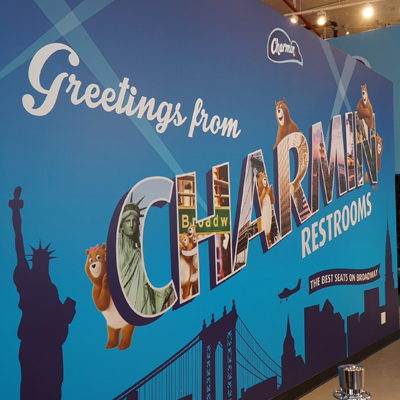
Brand: Charmin
Campaign: Charmin Holiday
Agency: Jack Morton Worldwide
BEST HOLIDAY OR SEASONAL-THEMED CAMPAIGN—SILVER

Brand: Charmin
Campaign: Charmin Holiday
Agency: Jack Morton Worldwide
Charmin made a big splash in summer 2017 with its Charmin Van-GO, the first-ever on-demand mobile bathroom service. But as a premium product in a commoditized category with high switching behavior, the brand needed a way to continue that positive momentum through the end of the year.
The answer came in the form of a refreshed take on one of the brand’s most iconic experiential campaigns: The Charmin Restrooms. Also, known as the “Best Seats on Broadway” during the holidays, the Charmin Restrooms, located in the heart of Times Square at 48th and Broadway, was a fully immersive, Instagrammable space flush with 14 stalls designed to give visitors the best big city bathroom experience from top to… bottom.
Each stall was designed as if it were its own brand experience. There was an outer space-themed stall with Charmin’s favorite planet (hint: It starts with U); a casino-themed stall with some of our favorite games (“Deuces Wild” and “Royal Flush”); and of course, a Broadway-themed stall where you could read a custom “Poobill.” The Charmin Bears were featured in every stall’s scenery, creating a playful “Bear’s Waldo” game for attendees.
For the grand opening, actor Dax Shepard led a formal “toilet paper-cutting ceremony.” His wife, actress Kristen Bell, joined him and the quirky couple danced under the lights in the club-themed stall.
Another component of the activation gave back to charity. NFL legend Emmitt Smith challenged the crowd to compete in the first-ever Toilet Bowl toilet paper toss. Smith participated in the game on behalf of the Special Olympics, which later received a $10,000 donation from Charmin. To go along with his appearance, a special stadium-themed stall where the crowd went wild for everyone who went in was also part of the experience.
The campaign surpassed its goals with more than 3.2 million earned social media impressions. And by the end of its short run, the Charmin Holiday bathrooms had welcomed 41,529 visitors and 32,384 bathroom uses, an average of nearly 1,800 bathroom uses a day every day they were open.
Bronze Winner
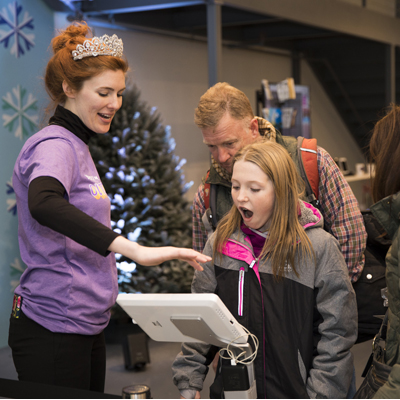
Brand: Yahoo!
Campaign: Yahoo! Mail’s Out of Office
Agency: FIRST
BEST HOLIDAY OR SEASONAL THEMED CAMPAIGN—BRONZE

Brand: Yahoo!
Campaign: Yahoo! Mail’s Out of Office
Agency: FIRST
Everyone wants to get away from the office during the holiday season, and Yahoo! Mail wanted to make letting people know you’ll be OOO as fun as the time off itself.
Two locations were set up for the promotion, to promote Yahoo! Mail’s new out of office feature. The New York experience was held prior to the winter holidays, and the Taipei experience just before the celebration of the Lunar New Year. More than 2,000 people engaged with the brand at the executions, helped consumers bring their out of office fantasies to life via sharable photos and videos.
Of course, a big challenge was to cut through the noise of the busy holiday season with a product that is often taken for granted: email. The campaign also needed to serve two diverse geographic and cultural audiences in the Americas and Asia.
To educate target consumers, both experiences featured Yahoo! Mail experts, designers and developers on site to train and teach the public about Yahoo! Mail and its unique features. Social influencers were brought into the campaign to build awareness and create content for the #SoOutOfOffice hashtag.
Both activations were located in pop-up shops in high traffic areas with themes designed to replicate an ideal escape. Guests were drawn in from the street in New York City and Taipei by brand ambassadors enticing them with hot chocolate and local treats. After queuing up, guests got to pick one of 22 different fantasy backdrops, like cruising the galaxy, navigating an island or flying an airplane. Attendees then chose their own custom animations, fun costumes and props to add to their personalized fantasies.
Short green-screen videos were transformed on the spot into GIFs and sent to the attendees to be shared on social media or email. The activation also included a selfie wall, where guests were encouraged to be creative with different types of crops and funky costumes. Users could immediately upload a picture to any social media platform with Wi-Fi available throughout each venue.
More than 2,000 attendees came to both events, creating over 1,100 personalized GIFs and sending more than 1,000 emails.
Gold Winner
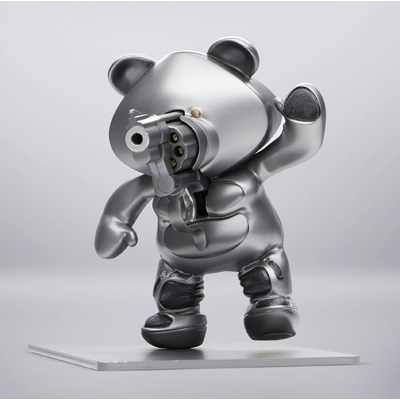
Brand: Illinois Council Against Handgun Violence
Campaign: Teddy Gun
Agency: FCB Chicago
BEST LOCAL/REGIONAL CAMPAIGN—GOLD

Brand: Illinois Council Against Handgun Violence
Campaign: Teddy Gun
Agency: FCB Chicago
The Illinois Council Against Handgun Violence is a not-for-profit organization dedicated to reducing gun violence by advocating for state and federal gun laws.
The objective of the “Teddy Gun” campaign was to get the bill, Illinois Senate bill 1657 passed. Thirty Senate votes were needed out of a total of 51 possible votes.
The strategy was to target state legislators and voters to drive traffic to teddygun.com where people could take action and share the message via Facebook and Twitter.
The concept of the campaign was based on a Teddy bear. Teddy bear manufacturers are required to follow strict safety regulations—unless that teddy bear happens to be a gun. Teddy Gun was designed as both a symbol and an actual product that brought together the innocence of a teddy bear with the menacing elements of a handgun.
Branded installations were staged in locations near congressmen in Illinois and Washington, D.C. An online introductory film brought the cause to life. A social documentary furthered the conversation and a social tool allowed users to tweet directly at their senators and representatives. Postcards and street posters drove supporters to teddygun.com.
Teddy Gun was displayed in public spaces at markets, plazas, and on the National Mall in front of the U.S. Capitol. Then Teddy Gun was brought to the offices of key Illinois legislators to gain their support. PR efforts and plugs on local nightly news coverage were picked up on vlogs and other media outlets.
With a budget under $10,000, success was at hand. On April 27, 2017, Illinois Senate Bill 1657 was passed, marketing a first-time achievement for ICAHV. This bill and bills similar had been introduced 15 times prior with no success.
People from 49 states were mobilized to visit teddygun.com. Referral traffic was the second largest driver to the site proving the campaign reached the right audience, with the right message and the desired result.
Silver Winner
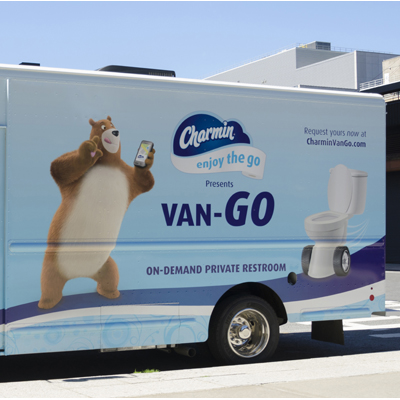
Brand: Charmin
Campaign: Charmin Van-GO
Agency: Jack Morton Worldwide
BEST LOCAL/REGIONAL CAMPAIGN—SILVER

Brand: Charmin
Campaign: Charmin Van-GO
Agency: Jack Morton Worldwide
From a consumer perspective, there’s not too much that’s interesting about toilet paper—until you need it, that is.
The Charmin brand understood that disconnect. Where the brand was once seen in a class of its own, increasingly, the perceived quality of competitive brands—and their lower prices—was closing the gap. Consumers began to see Charmin’s competitors as comparable options.
Enter Charmin Van-GO, the first on-demand mobile bathroom service. Yep, a toilet on wheels. If you had to go, all you had to do was pull out your phone and order it up. Within minutes a bathroom experience like no other was delivered.
The strategy was based on five criteria: to put the vehicle in a market where bathrooms were in need but it wouldn’t be noticed; the service had to be on-demand via mobile; it needed to be deliverable; and the experience had to be amazing. Finally, a highly visible way to break the story for maximum p.r. value was a priority. Millennials were the target as the new generation of toilet paper buyers and future brand loyalists.
New York City became the campaign’s destination—a city where you can get absolutely everything and anything you need, except a clean, comfortable place to enjoy the “go.” With a population of 8.5 million people and more than 60 million foreign and domestic tourists each year, New York has public bathrooms in fewer than half of its parks, a couple of subway stations and three (just three!) pay toilets.
A mobile website was set up for two days for consumers to order up “the go.” Charmin rolled out the white carpet for consumers waiting to use the facilities, offering activities like a life-size poop emoji for pics and a chance to meet the Charmin bears.
The novelty drew 1.2 million earned and social media impressions and 51 original articles. Recall was 43 percent, compared to the 25 percent goal. A kick off Mashable article drove coverage on “The Today Show,” Drudge Report, People, Yahoo and others. The social campaign was a record-breaker for the brand with a 3,000 percent increase is social impressions.
Bronze Winner
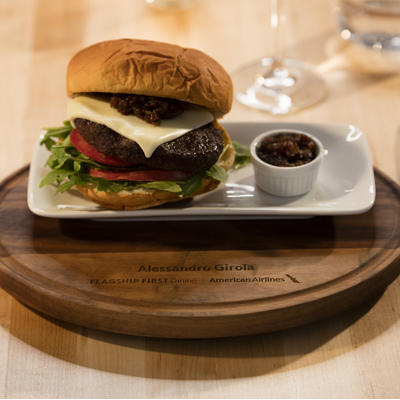
Brand: American Airlines
Campaign: Flagship First Dining Pop-Up Experience
Agency: Geometry Global
BEST LOCAL/REGIONAL CAMPAIGN—BRONZE

Brand: American Airlines
Campaign: Flagship First Dining Pop-Up Experience
Agency: Geometry Global
To differentiate itself from the masses, American Airlines decided to take on the most criticized element of the airline experience—the food.
Boarding now—Flagship First Dining—a one-of-a-kind, first-class dining experience passengers could enjoy before they take off. However, convincing elite first-class fliers that an airline could provide a meaningful, preflight culinary experience would not be easy.
Say hello to FFD, a one-of-a-kind, three-night-only progressive dining experience that guided guests through uniquely different dining rooms, each highlighting a course of the menu. Upon arrival, guests were greeted with a first-class welcome and guided into The Craft Cocktail Lounge where they met Award-Winning Mixologist, Pamela Wiznitzer, and were invited to try one of American’s Flagship First signature cocktails.
Next, it was time to enter The Wine & Cheese Atrium for a wine and artisan cheese pairing where Master Sommelier Des Echavarrie and Sprout Creek Farm’s Marlene McGuire hosted a wine and cheese tasting. After the pairing, guests were encouraged to give the room’s swing a try for a unique and sharable boomerang GIF. Once downstairs guests were welcomed to The Captain’s Table by Ron Joyce of Joyce Farms, where they were invited to find their custom embossed luggage tag and personalized cutting board at their place setting. Ron Joyce talked about the grass-fed beef burger blend that appears in the Flagship Dining Burger. Dessert and espresso followed and guests were sent off, not only with a full stomach, but photos and personalized gift boxes.
Travel and foodie influencers generated 5.34 million impressions and drove more than 3,000 new social followers. Organic social sharing yielded nearly one million additional social impressions and the post-event social video content video generated an additional 2.3 million impressions.
Gold Winner
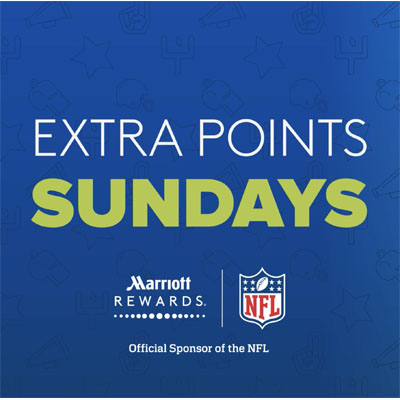
Brand: Marriott Rewards
Campaign: Extra Points Sunday
Agency: In-house
BEST LOYALTY MARKETING CAMPAIGN—GOLD

Brand: Marriott Rewards
Campaign: Extra Points Sunday
Agency: In-house
Marriott Rewards and the NFL enjoy a yearlong partnership designed to enable once-in-a-lifetime experiences for the loyalty program’s most ardent and fervent football fans. With the NFL’s regular season lasting 17 weeks, a fresh, always on marketing campaign was needed to increase awareness of the partnership and opportunities available to members.
Twitter was the name of the game. A call to action was sent out from the @MarriottRewards to more than 157,000 followers announcing a weekly NFL trivia contest called “Extra Points Sundays.” Each week during the NFL’s regular season, an NFL-related question was asked. Members who guessed correctly earned 1,000 Marriott Rewards points that were distributed straight into their accounts.
By popular demand, the campaign was brought back during Super Bowl LII. Three trivia questions were posted during the game for the chance to earn up to 1,500 additional points. Those that participated weekly during the regular season and Super Bowl had the opportunity to earn 14,500 points—enough to redeem for a Category 2 hotel room or hundreds of partner products.
To facilitate the transfer of points, Marriott Rewards leveraged its #RewardsPoints loyalty engagement platform, powered by Chirpify, that uses Rewards points as social currency to incentivize engagement on Twitter, Facebook, and Instagram. The platform is integrated directly with Marriott Rewards’ member database, allowing the program to recognize and reward members the moment they post.
The game scored a touchdown for Marriott Rewards. An average 24,000 members participated each week during the regular season and 39,000 during Super Bowl LII. Forty-two percent of all followers of @MarriottRewards participated generating more than 580,000 total engagements and more than 328 million points awarded.
Silver Winner

Brand: T-Mobile
Campaign: Reaping Rewards with T-Mobile
Agency: The Marketing Store
BEST LOYALTY MARKETING CAMPAIGN—SILVER

Brand: T-Mobile
Campaign: Reaping Rewards with T-Mobile
Agency: The Marketing Store
Like many brands, T-Mobile had some challenges with its loyalty program. First among them: Consumers hate the red tape generally associated with claiming the rewards.
With that pain point in mind, the company set out to create a loyalty program that truly made customers feel loved. T-Mobile Tuesdays, a mobile app available to anyone using the carrier, was the brand’s way of showing appreciation to subscribers with exclusive gifts and once-in-a-lifetime prizes, rather than points and rewards only available with additional purchases.
The idea behind the program and its #GetThanked tag was simple: Open the app every Tuesday and collect free stuff from popular partner brands, and get entered to win big prizes like a cruise through the Caribbean or a $10,000 shopping spree.
T-Mobile Tuesdays lives in a dynamic app for both iOS and Android, as well as web and mobile web. This helped support a flexible program that can change and react to trends. Customers appreciated the easier experience, and the feeling that they were empowered to make choices with T-Mobile and its partner brands.
In 2017, T-Mobile Tuesdays had over 20 million downloads and more than 100 million redemptions, and over 140 partner deals for customers. The conversion rate for registration improved by 200 percent, and since relaunch the program has seen three times more registrations per week and a 27 percent decrease in customer turnover.
Bronze Winner
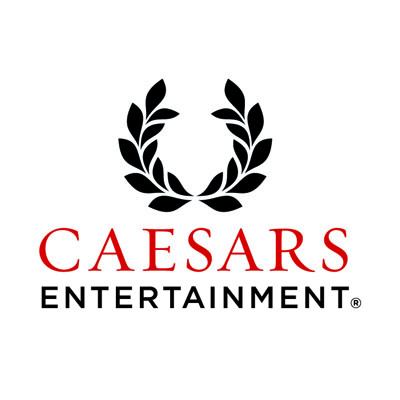
Brand: Caesars Entertainment
Campaign: Quest for Rewards
Agency: In-house
BEST LOYALTY MARKETING CAMPAIGN—BRONZE

Brand: Caesars Entertainment
Campaign: Quest for Rewards
Agency: In-house
Caesars Entertainment is the largest domestic casino company in the U.S. with 36 casinos, but many customers don’t know the breadth of the brand’s offerings. Quest for Rewards was created to engage the brand’s loyal followers.
The promotion was based on the insight that loyal customers are worth exponentially more as they experience more locations. Quest for Rewards awarded a series of badges to customers, along with loyalty currency for exploring more casinos, restaurants, hotels, and gaming amenities. Accruing badges gave members non-monetary loyalty currency (status only) and the ability to be entered into a drawing at the end of the promotional period.
The big challenge was collecting transaction data from distributed systems and unifying it to provide the customer a seamless experience. The lodging management system, CRM, food and beverage POS and Casino management systems were all separate.
The IT team worked tirelessly to create a manual solution to extract and execute on the data to get the promotion off the ground. As the promotion gained traction a more sophisticated and automated system was built to handle the process.
Quest for Rewards let customers create a “digital scrapbook,” travel the country and get rewarded for trying new locations.
A number of reminders and “pacing” emails were sent that helped customers understand where they stood in the promotion, driving more activity throughout the three-month earning periods.
Rolling the dice with just $25,000 in promotional costs, the bet paid off. Customers who opted in to the promotion generated $25 million more dollars in Q1 2017 vs. Q1 2016, 1,829 guests visited more than 16 properties in Q1 2017 vs. only 10 in Q1 2016 and 61 guests visited all 36 properties in Q1 2017 vs. none in Q1 2016.
Gold Winner
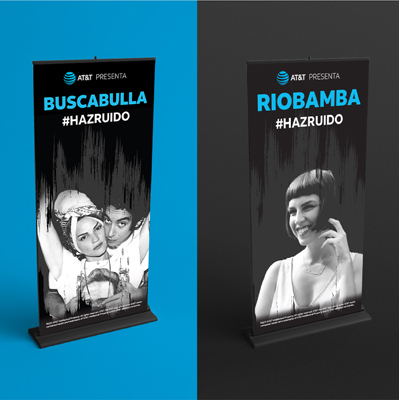
Brand: AT&T
Campaign: Haz Ruido
Agency: The 360 Agency
BEST MULTICULTURAL/LIFESTYLE/AGE-TARGETED CAMPAIGN—GOLD

Brand: AT&T
Campaign: Haz Ruido
Agency: The 360 Agency
AT&T wanted to engage Hispanic Ambicultural Millennials with a passion for music and lifestyle events as a way to inspire loyalty and communicate seasonal deals and product offerings. The resulting Haz Rudio campaign was a partnership with international Reggaeton superstar Maluma, and included social, guerilla, experiential and drive to retail components.
The official hashtag #HAZRUIDO and its English translation #MAKENOISE served as a call to action throughout the campaign and was leveraged via social media efforts. AT&T also partnered with various up-and-coming artists and veteran DJ’s alike to create a once-in-a-lifetime “mashup” event experience for fans. The roster included artists from various genres including R&B and Mexican Regional.
Four live events were executed for three weeks in August 2017 in Boston, Miami, Houston and New York, showcasing a fresh and unique blend of regional Mexican music mixing with Reggaeton and Hip-Hop.
To incentivize consumers at the store level and increase door swings, a gift with purchase was integrated at HIT stores for each market. Qualifying purchases varied but the gift remained constant: Two tickets to the upcoming Haz Ruido event in the respective city.
To amplify the campaign, brand ambassadors were deployed into high traffic areas within each market. Outfitted with branded uniforms and campaign collateral, ambassadors engaged and educated consumers on Haz Ruido. AT&T also partnered with local influencers to amplify the Haz Ruido campaign in each market. Geo-targeted Snapchat filters were created to further brand the digital footprint in Houston and New York.
Each event featured a VIP section for local influencers, AT&T leadership and supporting artists. In addition, each venue had a dedicated meet and greet area.
To further enhance the experience and leave attendees with a lasting impression, each event offered multiple touch points including premiums, shareable photo ops and charging stations.
The campaign resulted in 987 sales, more than 5,000 social posts with the hashtag #HazRuido and more than 19,000 experiential engagements. Over 600,000 digital engagements were recorded, with 119 million total impressions.
Silver Winner

Brand: State Farm Insurance
Campaign: State Farm Color Full Lives
Agency: The Marketing Arm
BEST MULTICULTURAL/LIFESTYLE/AGE-TARGETED CAMPAIGN—SILVER

Brand: State Farm Insurance
Campaign: State Farm Color Full Lives
Agency: The Marketing Arm
Through a partnership with Essence, State Farm started an emotional and inspirational conversation with African-American women about financial empowerment in a fun and relevant way. By asking women to identify their goals, State Farm pushed the boundaries of what consumers expect from an insurance brand and empowered women to take steps toward achieving their dreams.
State Farm developed the “Color Full Lives” campaign to celebrate the multifaceted lives of African-American women and the financial goals that they hope to achieve. The program came to life at Essence Festival—the largest female-focused live event in the country—and through media on Essence.com with content featuring women chasing their dreams and “living their most Color Full Lives.”
At Essence Fest, African-American women listened in at three intimate panels featuring celebrities like Anthony Anderson and Issa Rae discussing their own financial challenges. A “Color Full” activation challenged women to identify their financial goals and explore a color-themed interactive based on their individual spending habits. Leveraging consumer data-capture and RFID technology, State Farm rewarded each of these women with a digital magazine based on their interactions at the space.
In a separate activation area, a recording booth with sound wave technology gave women an opportunity to declare and document their financial affirmations. As a thank you, State Farm gifted them digital copies of their statements. Finally, celebrity talent challenged three New Orleans women to a financial quiz during the live Essence Fest concerts at the Superdome, awarding each woman $1,000 to jump-start their dreams.
Post-festival, Essence.com featured content of entrepreneur and influencer Angela Yee offering guidance to women through three videos, each providing tips on achieving goals via State Farm’s financial site, LetsStartToday.com. Essence editors and a State Farm agent hosted Q&A sessions around entrepreneurship and planning for the future through Facebook Live sessions, customized articles and e-blasts.
Over 150,000 consumers were engaged at Essence Fest, and content on Essence.com generated over 21 million social and digital impressions, doubling the benchmark.
Bronze Winner

Brand: McDonald’s
Campaign: The McDonald’s Pool Groove
Agency: Walton Isaacson
BEST MULTICULTURAL/LIFESTYLE/AGE-TARGETED CAMPAIGN—BRONZE

Brand: McDonald’s
Campaign: The McDonald’s Pool Groove
Agency: Walton Isaacson
Shifting brand perception among African-American Millennials was pivotal in this campaign. This target simply wasn’t buying McDonald’s messages that it could deliver on bold flavors, so they looked elsewhere. The team understood that for African-American Millennials, the notion of bold flavor wasn’t just something they looked for in food—it was a way of life.
McDonald’s had just launched its “Signature Crafted” recipes, a line of sandwiches with three bold flavor combinations. The team plotted to get this target to try one.
Enter The Pool Groove, a palm tree-lined parking lot transformed into an 18,000-square- foot lavish pool party spectacular replete with a 50-foot by 30-foot foot swimming pool and custom deck. And not only that, there were cabanas, a concierge service, an interactive photo booth, pool games and a 57-foot McRig Mobile Restaurant. The spectacle was topped off with powerhouse entertainment and social influencers that bopped to the beat and kept the conversation going long after the last person climbed out of the pool. BET hosted the activation at one of the summer’s hottest events for the target, the BET Experience at L.A. Live.
The entire spectacular was captured by BETx and converted to eight segments, among a number of exclusive content pieces spread across multiple platforms. Games and prizes, like the McDonald’s Money Booth that gave consumers a chance to win prizes by catching the golden dollars, played into the $1 beverage messaging. The McRig Mobile Restaurant was on hand, serving more than 9,500 samples of the new “Signature Crafted” BBQ Bacon Burger, World Famous Fries and Coke beverages.
It all added up to 133.8 million social media impressions and media coverage that generated 55.3 million impressions. Social media posts resulted in over 1,100 mentions using the custom hashtag, #McDPoolGroove. In addition, 15,000 Arch Cards were distributed and product sampling exceeded goal by 90 percent, almost 10,000 samples distributed. A custom McDonald’s Global Mobile Offer resulted in 1,418 redemptions with customers spending 30 percent more than the average McDonald’s check. Groovy indeed.
Gold Winner
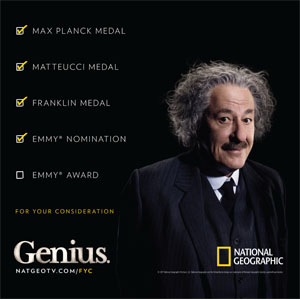
Brand: National Geographic Channels
Campaign: Genius
Agency: In-house
BEST MULTIDISCIPLINE CAMPAIGN—GOLD

Brand: National Geographic Channels
Campaign: Genius
Agency: In-house
National Geographic’s first fully scripted series, “Genius,” told the dramatic, inspiring and untold story of the life of Albert Einstein. The marketing plan was designed to engage viewers across the globe to not only draw attention to the series, but to showcase the brand as a destination for premium science, space and exploration content.
The campaign kicked off with the brand’s first Super Bowl spot, which won the Super Clio Award for best Super Bowl ad. A series of promos across National Geographic’s portfolio highlighted the many different aspects of Einstein’s character—rebel, lover, father and refugee—to draw a diverse audience.
Two buzz-worthy events allowed consumers to engage with the series before the premiere. At SXSW, the Genius Digital Chalkboard robotic arm took user-submitted photos from Twitter and drew them using handwriting and equations from Einstein. Attendees could also use augmented reality to step into the mind of Einstein. At the March for Science in Washington, DC, National Geographic sponsored a free wifi network and on-site charging tent. Consumers could take part in The Genographic Project, which used DNA haplogroups to tell customers how related they are to famous geniuses. A team of influencers drove chatter and awareness across digital and social channels throughout the campaign.
A variety of creative promotions were developed to appeal to different audiences, from a more romantic lover’s spot to an action spot highlighting the drama of World War II, which aired across the entire National Geographic and Fox portfolios, as well as a blend of targeted high-reach networks.
An out-of-home takeover of New York City’s Grand Central Station was dominated with images of actors Geoffrey Rush and Johnny Flynn as the older and younger Einsteins. Print ads ran in a host of magazines and a The New York Times Crossword Puzzle anniversary partnership featured Genius-themed puzzles digitally and in print.
In the digital space, Facebook Messenger users could chat with Einstein on the Genius Bot, which generated over 17 pieces of press coverage, 17,000 clicks, 1.8 million social impressions, 10,000 chat sessions and a 50 percent re-engagement user rate throughout the season. At SXSW over 1,121 guests used the augmented reality while another 1,500 Twitter-submitted photos were turned into shareable digital portraits. And if that wasn’t genius enough, the series was nominated for a groundbreaking 10 Emmys.
Silver Winner

Brand: Pepsico/Mountain Dew
Campaign: Impractical Jokers and Mountain Dew: Do the Dew
Agency: Turner truTV
BEST MULTIDISCIPLINE CAMPAIGN—SILVER

Brand: Pepsico/Mountain Dew
Campaign: Impractical Jokers and Mountain Dew: Do the Dew
Agency: Turner truTV
“Impractical Jokers” is truTV’s No. 1 series and biggest deliverer of Mountain Dew’s target, adults ages 18-34—especially young males.
Mountain Dew joined forces with the series in an unprecedented, one-year content relationship to reach fans on every level.
Talent availability was tightly constrained due to the Jokers’ comedy tour schedule, so when the guys weren’t available for a custom shoot, Mountain Dew’s brand was integrated into bite-sized sharable content pieces for on-air, digital and social. And, to give Dew “surround sound” awareness, multiple marathon stunts were developed throughout the year when “Impractical Jokers” was not premiering new episodes.
More than 10 pieces of content connected fans and continued the conversation across every Jokers social and digital touchpoint. Launchpad, Turner’s proprietary social media tool, drove engagement and amplified views across new audiences.
The team took the party to Comic-Con for The Jokers Block Party at Petco Park, a massive fan event, which included a meet and greet, live stream show, Dew product sampling, games, activities and an exclusive sneak peek of a new “Jokers” episode. Fans lined up for the Mountain Dew-branded VR experience where they re-lived an iconic Jokers dare—a tightrope walk 100-feet above Manhattan. This pushed technology boundaries, utilizing special VR foot sensors to create the feedback of balancing on a high wire. Social chatter blew up as fans on-site and across the country watched the Jokers’ Facebook Live show, “Impractically Speaking,” presented by Mountain Dew.
The results were no joke, delivering 40 million impressions across platforms, more than 3.6 million video views and 76,000 social engagements, over-delivering guarantees by 68 percent. An on-site survey indicated 45 percent of block party attendees thought more highly of Dew and 30 percent intended to purchase product. The Facebook web show amplified live event reach with one million impressions. Over 16,500 fans interacted at the Jokers Block Party, making it the most impactful live event for truTV this year.
Bronze Winner
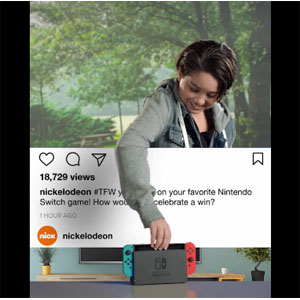
Brand: Nintendo
Campaign: Kid’s Choice Awards and Nintendo Switch
Agency: Nickelodeon
BEST MULTIDISCIPLINE CAMPAIGN—BRONZE

Brand: Nintendo
Campaign: Kid’s Choice Awards and Nintendo Switch
Agency: Nickelodeon
Nintendo challenged Nickelodeon to persuade “The Kids’ Choice Awards” fans to purchase the Nintendo Switch, the brand’s biggest console release in a decade.
Switch’s three unique playstyles were to be showcased, along with three unique game titles, across every KCA touchpoint.
The campaign had four solid legs. First, the console was integrated into the biggest stage for kids, The Kids Choice Awards, with aspirational and familiar Nick Talent enjoying the portability, shared experience of gameplay and social currency of the next “big thing” in gaming.
Second, the creative mirrored kids and parents daily lives, which leaned on three stylized environments to showcase how easy it is to take the Switch with you on the go. The relatability of the cast offered an easy way to see the Switch fitting into fans’ daily routines.
Third, Nickelodeon social fans were able to see the fun in store with the Switch, with buzz-worthy content that demonstrated product attributes in an engaging, thumb-stopping way. To ensure fans engaged with social creative—and learned about the product— a live-action Instagram post showed a Nick fan reaching down from their post to the one below it to grab the Switch from another user.
Finally, at live events, consumers got the chance to put the system and games in their hands and see for themselves how much fun it is to play together.
A week after launch, Switch was the fastest-selling system in the company’s history, and within a year of release the system achieved over 14 million units sold worldwide, outselling total lifetime sales of the Wii U. “The Kids’ Choice Awards” was the top telecast of 2017 among kids and girls ages two to 11 at the time of airing and the most co-viewed awards broadcast in six years. As part of the campaign, Nintendo and Nick’s cobranded social posts achieved more than 925,000 total video views, 47,000 total engagements and an overall reach of 6.7 million. The success of the program led Nintendo to return for another comprehensive 2018 Kids’ Choice Awards partnership supporting “Super Mario Odyssey.”
Gold Winner
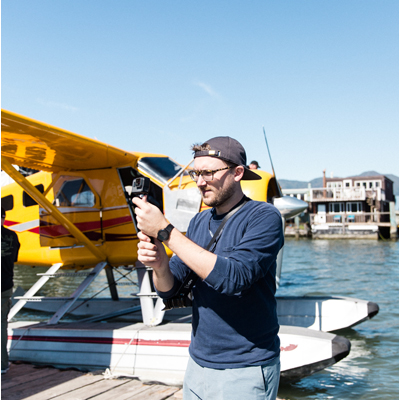
Brand: GoPro
Campaign: GoPro HERO6 & Fusion Launch
Agency: Pen&Public
BEST NEW PRODUCT LAUNCH—GOLD

Brand: GoPro
Campaign: GoPro HERO6 & Fusion Launch
Agency: Pen&Public
There are press events, and there are press experiences. This one falls into the latter category.
To create an unforgettable launch for the HERO6 and Fusion cameras, GoPro engaged the media with a day filled with “hero”-worthy experiences in San Francisco.
An exhilarating schedule of once-in-a-lifetime activities immersed press in the GoPro lifestyle and gave them the opportunity to use and experience the products first-hand through a variety of outdoor activities.
The day began with a breakfast check-in featuring immersive content that built anticipation for the event. Media participants then entered a dome for the live show. CEO Nick Woodman announced the new product and technology in a 360-degree keynote speech via livestream on the brand’s website, reaching a worldwide audience. Following the announcement, press gathered into groups where GoPro trainees provided them with HERO6 & Fusion cameras to be used during their adventures.
In addition, the trainees accompanied attendees during the day to educate them on the products with hands-on training so they could use the products in unique and highly engaging ways. Over the course of the day, media participants had the opportunity to use their cameras and capture footage during activities like go kart racing, helicopter rides, hydrofoiling, yacht racing and seaplane rides.
To maintain participants’ enthusiasm as they traveled for as long as 30 minutes from one activity to another, unusual transportation solutions included vintage VW buses, BMW M6 convertibles and more. The day wrapped with a lively after party at Sparks Social.
Just one month after the launch, there were more than 3,400 articles on HERO6 and Fusion published both internationally & nationally. Top tier highlights included BBC, Bloomberg, Forbes, Mashable, Wired, USA Today, Engadget, Conde Nast Traveler and The Verge. Social efforts reached 99.6 million people.
Silver Winner
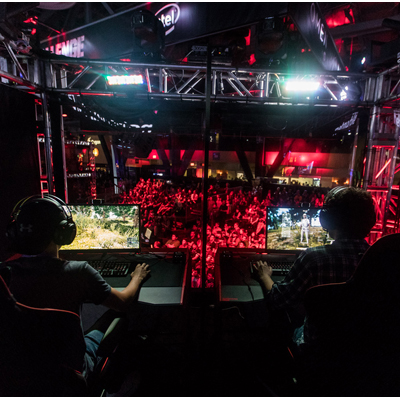
Brand: OMEN by HP
Campaign: OMEN Challenge: PUBG Edition
Agency: Infinity Marketing Team
BEST NEW PRODUCT LAUNCH—SILVER

Brand: OMEN by HP
Campaign: OMEN Challenge: PUBG Edition
Agency: Infinity Marketing Team
For serious PC gamers, gaming isn’t just a hobby, it’s a lifestyle. HP wanted to drive awareness for its OMEN line of products and the annual TwitchCon convention was the ideal place to make that happen. To build a connection with Millennial gamers, HP created an innovative multi-player “battle royale” gaming tournament platform, the OMEN Challenge: PUBG Edition.
Player Unknown’s Battlegrounds (PUBG) is consistently in the top two spots on Twitch. It has sold more than 30 million copies and broken three million concurrent views on the gaming platform Steam, making it the perfect vehicle to highlight the OMEN Challenge.
TwitchCon draws an audience of more than 50,000 attendees over three days. HP negotiated 10,000 square feet of activation space on the show floor to house the OMEN Challenge Coliseum. creating the first-ever custom setting for a multi-player “battle royale” game with 40 participants. All players in the two-hour tournament could be easily viewed by both the live audience and online viewers.
The Coliseum contained 20 custom soundproof interactive gaming pods powered by 40 OMEN X desktops, 40 OMEN 25-inch displays and 40 sets of OMEN accessories. The center stage, which boasted a 25-foot LED screen, was positioned within the giant multi-level pod structures of the arena. In this prime location, prizes were awarded and the OMEN Challenge’s hosts—Twitch personalities Josh Sutherland and Shidosha Hodges—conducted player interviews.
To reach and engage the gaming audience, HP developed an organic method to naturally integrate product promotions into the livestream. Fans could enter to win an OMEN X laptop via social media, and hosts talked about a discount on OMEN accessories available on Amazon.com
Results of the OMEN Challenge far exceeded HP’s goals. About 8,000 attendees were hosted on-site and tournament registration was sold out. There were one million livestream views, far surpassing the goal of 200,000. HP conducted 3,567 product demos and achieved a five percent redemption rate for a 20 percent off accessories coupon.
Bronze Winner
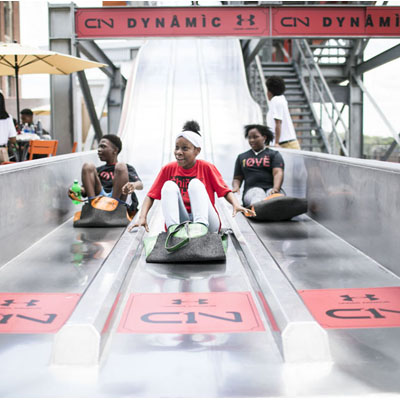
Brand: Under Armour
Campaign: Under Armour C1N
Agency: IMG Live
BEST NEW PRODUCT LAUNCH—BRONZE

Brand: Under Armour
Campaign: Under Armour C1N
Agency: IMG Live
When a big-name athlete is involved in a launch, their celebrity often overshadows the product they’ve been hired to promote. Under Armour sidestepped that problem by making the C1N lifestyle shoe—inspired by NFL quarterback Cam Newton—a featured character in the launch event.
Both the brand and Newton wanted to make the physical and digital aspects of the one-day event in Atlanta fun but still relevant for the brand and the shoe, while creating a meaningful “giveback” moment for local youth to support the Cam Newton Foundation.
The experiential team engaged Cam in the creative process to ensure every connection point encompassed who he was and what he stood for. “Ferocity Meets Artistry” was the theme of the 18-hour launch that began with “C1NIVAL,” an exclusive party for Cam’s fans, friends and influencers. Hundreds of Atlanta Boys and Girls Club of America youth were in attendance and played classic carnival games and got the chance to meet their hometown hero.
At night, the C1NIVAL moved to the Westside Cultural Arts Center with a media exclusive that used the shoes as a backdrop befitting an art gallery. As guests entered the carnival inspired event at Skyline Park, a freight elevator opened to reveal the never-before-seen C1N Lifestyle shoe. A three-sided art installation featuring colors from each of the three C1N designs served as a centerpiece that used the displays, the walls and the floors to pull guests in to learn about Cam’s inspiration behind each.
Atlanta celebrity chef Aleem treated guests to ATL-inspired cuisine and C1N inspired craft cocktails. The night closed with a surprise performance by local star rapper 2 Chainz (one of Cam’s friends and favorite musical artists) who was later joined on-stage by Cam himself for a rap duet.
The launch was one of the most successful in Under Armour’s history, and exceeded goals for participation, awareness and initial sales. It received over 75 million online and broadcast impressions, 25 million editorial social impressions and 11 million impressions from social influencers.
Gold Winner
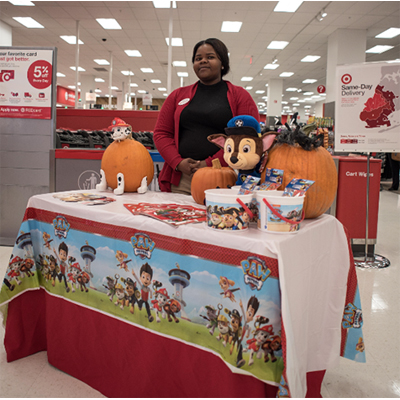
Brand: Nickelodeon
Campaign: Paw Patrol Pirate Pups at Target
Agency: In-house
BEST RETAIL CAMPAIGN—GOLD

Brand: Nickelodeon
Campaign: Paw Patrol Pirate Pups at Target
Agency: In-house
“PAW Patrol” was in its fifth year selling cross-category products across 57 departments in Target and was looking for a boost in sales. Nickelodeon dreamed up a promotion to give families a reason to go in-store.
The strategy was to deliver to shoppers an exclusive assortment of products that aligned with the PAW Patrol Pirate Pups content they would see on-air and to reach key parent shoppers with digital and social tactics that would drive families in-store and to target.com
PAW Patrol had its own dedicated pirate-themed 30-minute special episode in season four and Nickelodeon knew that pirates were a common imaginative play theme among all kids.
In-store, off-shelf placements, cross-category end caps, toy half-pallets, dedicated home end caps and costume end caps with custom PAW Patrol Pirate Pups signage were developed to create eye catching in-store moments. Social content lived on Nickelodeon’s platforms timed around National Talk Like a Pirate Day (Nov. 19, 2017). Influencer moms showcased products throughout October and a target.com-optimized search campaign drove shoppers to PAW Patrol cross-category products.
The PAW Patrol PAW Patroller vehicle made stops at 12 Target stores during every weekend in October. Families met Chase, Marshall and Skye and took part in photo ops, play areas and sampling activations. All this culminated with the final stop on Oct. 28 aligned with Target’s annual Halloween Trick-or-Treat event across its more than 1,800 stores.
PAW Patrol headlined the event, where the premiere of the Pirate Pups 30-minute special was broadcast on the screens within the entertainment department of all Target stores. In addition, through partnerships with Kellogg’s, Crayola, Spin Master and American Greetings kids made their way around to different departments with PAW Patrol products and picked up PAW Patrol giveaways.
Pre-event teasers with Target maximized in-store traffic for the event through Target’s circular, Target’s Channel Red in-store TV network, across Target.com and through a mobile and desktop campaign including in-stream and in-audio media. Nickelodeon also drove promotion of the event across its platforms.
The hard work paid off. PAW Patrol toys had a sales uplift of more than 44 percent with the total PAW Patrol category up 20 percent.
Silver Winner
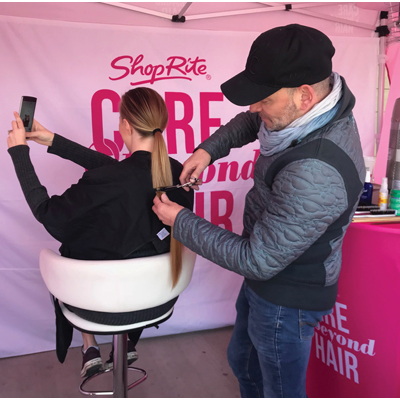
Brand: P&G/Pantene
Campaign: Care Beyond Hair at Shoprite
Agency: Upshot
BEST RETAIL CAMPAIGN—SILVER

Brand: P&G/Pantene
Campaign: Care Beyond Hair at Shoprite
Agency: Upshot
ShopRite wanted to drive more traffic to its stores. Pantene wanted to motivate consumers to donate their hair to support their Beautiful Lengths campaign. The solution was the Pantene “Care Beyond Hair” customized program at ShopRite leveraging Pantene’s existing Beautiful Lengths charitable program with ShopRite’s existing charitable efforts. The custom program was set around Breast Cancer Awareness month, exclusively for ShopRite, which allowed shoppers in the Northeast to make a difference in their communities.
At each ShopRite store, the goal was to have five ponytails donated for a total of 200 ponytails across all 40 stores. Two-hundred ponytails meant the Pantene program at ShopRite could give 25 women who are fighting cancer real hair wigs (one wig = eight to 15 ponytails).
In the end, a total of 204 ponytails were donated, surpassing goal by four. Procter & Gamble made a monetary donation of $10,000 to the Pantene Beautiful Lengths fund.
With more than 2,900 social engagements from both ShopRite’s corporate and former NFL running back Tiki Barber’s social channels, as well as additional support and engagement from local ShopRite pages and Pantene, the program left a lasting impression among consumers in the ShopRite communities. Additionally, ShopRite employees were so motivated by the program that there was discussion around a second anniversary campaign before the 2017 program was even halfway completed.
Bronze Winner
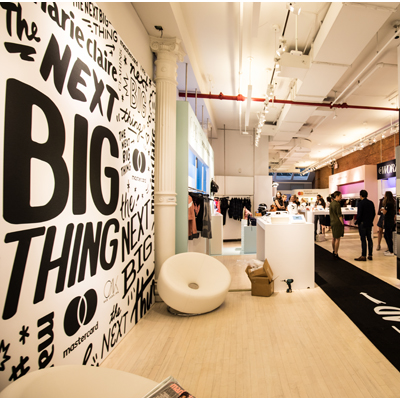
Brand: Marie Claire
Campaign: The Next Big Thing Pop-Up Shop
Agency: Sparks
BEST RETAIL CAMPAIGN—BRONZE

Brand: Marie Claire
Campaign: The Next Big Thing Pop-Up Shop
Agency: Sparks
The Next Big Thing Concept Shop was designed as an experience based on Marie Claire magazine’s most popular sections. The pages were brought to life through customized and personalized shopping experiences using live and digital engagements that use technology to eliminate retail’s traditional “pain points.”
The experience was tied to the October issue of Marie Claire, which highlighted the intersection of technology and lifestyle in a six-page editorial section featuring products to be showcased in the pop-up.
Targeting New Yorkers, the 2,500-square-foot pop-up was set up in New York City’s SoHo neighborhood. Open seven days a week from 11:30 a.m. to 8:30 p.m., the shop offered consumers the opportunity to experience a new way to shop, showcasing how retailers can blend Internet of Things (IOT) devices, such as smart mirrors and windows, and Mastercard’s industry-leading security and analytics solutions and Masterpass digital payment service.
Smart mirrors revamped the dressing room experience by recognizing products brought into the room. The mirrors used RFID tags and made recommendations for related items. An on-mirror display showed other colors and sizes available. Associates could be requested to retrieve additional items and shoppers could pay through the store’s app. Smart mirrors have been shown to increase average basket sizes by 59 percent, and significantly boost conversion.
And there was more. The two-foot Clarins’ Sensor Mirror Pro helped shoppers find products that were right for their skincare needs and a Sunglass Memory Mirror from Neiman Marcus in conjunction with MemoMi allowed customers to view how sunglasses look on them from all angles.
B8ta, a software-powered retailer, provided digital setups for products that displayed information on the items, pictures and videos of them in action, as well as the option to buy them.
Thousands of guests visited the store and 130 million media impressions were recorded with coverage in WWD, Business Insider, USA Today and others.
Gold Winner
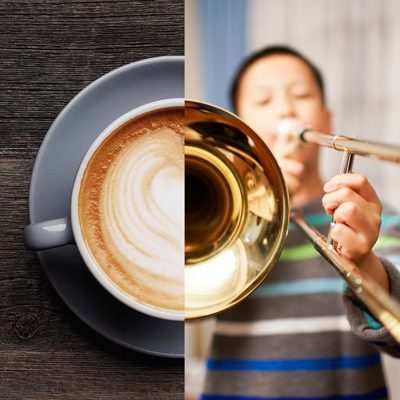
Brand: Starbucks at Home
Campaign: Flavor Match
Agency: The Integer Group
BEST SAMPLING OR TRIAL RECRUITMENT CAMPAIGN—GOLD

Brand: Starbucks at Home
Campaign: Flavor Match
Agency: The Integer Group
If you’re a coffee drinker, you likely buy packaged coffee on a regular basis, along with other staples like milk and bread. However, even people who are loyal to Starbucks cafés don’t show the same loyalty in the grocery aisle, picking up Starbucks just three out of 10 times.
For Starbucks, it was time to move those numbers in its favor.
The challenge was to identify consumer taste preferences and narrow down the 27 Starbucks flavor options to three that could drive in-store sales. A check on the target audience’s social feeds—Pinterest (recipes), Instagram (fashion) and Spotify (music)—put the pieces together and served as the foundation for a delivery effort based on personalized coffee recommendations and free coffee flights sent directly to consumers’ homes.
The campaign produced a jolt with 10 percent year over year sales lifts. The program also exceeded CTR benchmarks by two times and sparked 147,415 individual sessions on Spotify, more than 160,000 Pinterest clicks and a 31 percent increase in Starbucks Coffee At Home website traffic, with 250,000 flight samples redeemed.
Silver Winner
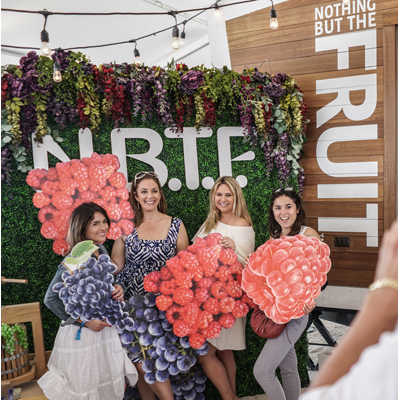
Brand: Welch’s
Campaign: Nothing but the Fruit Tasting Room
Agency: Mosaic
BEST SAMPLING OR TRIAL RECRUITMENT CAMPAIGN—SILVER

Brand: Welch’s
Campaign: Nothing but the Fruit Tasting Room
Agency: Mosaic
The natural foods category is a hot one for many brands, but it can be a challenging space for legacy products looking to find a way in.
To give Welch’s new Nothing But the Fruit (N.B.T.F.) brand a boost, the company turned to experiential storytelling to communicate its grape farmer story and natural goodness message, while also showcasing the N.B.T.F. brand, fruit bites specifically, as an elevated, versatile snacking option.
A tiny home (research shows Millennials love these) was converted to a Tasting Room designed as a modern winery. Dark woods paired with brick wall textures, and industrial lighting gave the space a very sophisticated and modern feel. Outside, consumers found a one-of-a-kind, handmade flower wall where they could pose for Polaroids, as well as picnic tables positioned under twinkling lights to serve as a garden patio for relaxing.
“Snack Sommeliers,” (brand ambassadors), were outfitted in light white button downs, tied at the front, for a stylish, Northern California vibe. Tour stops hit a wide array of events where the foodie Millennial would be hanging like the Wanderlust Yoga & Music Festival in Squaw Valley and the Life is Beautiful Festival in Las Vegas.
Influencers served as hosts, sharing and producing content for their followers. Consumers were encouraged to share their videos and photos on social media using #NBTFTastingRoom.
The brand sampled 142,664 pouches over four different flavors. Paid social supporting The Tasting Room resulted in 2.6 million impressions and 170,000 engagements. Six influencers posted 22 times over the course of the tour resulting in 773,919 potential direct impressions, and 17,242 social engagements.
Within four weeks of the experience, 86 percent of Tasting Room attendees purchased N.B.T.F. Ninety-six percent of Tasting Room attendees shared their N.B.T.F. experience via social media. After the experience, 85 percent of Tasting Room attendees had a high opinion of the brand.
Bronze Winner

Brand: McDonald’s
Campaign: The McDonald’s Pool Groove
Agency: Walton Isaacson
BEST SAMPLING OR TRIAL RECRUITMENT CAMPAIGN—BRONZE

Brand: McDonald’s
Campaign: The McDonald’s Pool Groove
Agency: Walton Isaacson
Shifting brand perception among African-American Millennials was pivotal in this campaign. This target simply wasn’t buying McDonald’s messages that it could deliver on bold flavors, so they looked elsewhere. The team understood that for African-American Millennials, the notion of bold flavor wasn’t just something they looked for in food—it was a way of life.
McDonald’s had just launched its “Signature Crafted” recipes, a line of sandwiches with three bold flavor combinations. The team plotted to get this target to try one.
Enter The Pool Groove, a palm tree-lined parking lot transformed into an 18,000-square- foot lavish pool party spectacular replete with a 50-foot by 30-foot foot swimming pool and custom deck. And not only that, there were cabanas, a concierge service, an interactive photo booth, pool games and a 57-foot McRig Mobile Restaurant. The spectacle was topped off with powerhouse entertainment and social influencers that bopped to the beat and kept the conversation going long after the last person climbed out of the pool. BET hosted the activation at one of the summer’s hottest events for the target, the BET Experience at L.A. Live.
The entire spectacular was captured by BETx and converted to eight segments, among a number of exclusive content pieces spread across multiple platforms. Games and prizes, like the McDonald’s Money Booth that gave consumers a chance to win prizes by catching the golden dollars, played into the $1 beverage messaging. The McRig Mobile Restaurant was on hand, serving more than 9,500 samples of the new “Signature Crafted” BBQ Bacon Burger, World Famous Fries and Coke beverages.
It all added up to 133.8 million social media impressions and media coverage that generated 55.3 million impressions. Social media posts resulted in over 1,100 mentions using the custom hashtag, #McDPoolGroove. In addition, 15,000 Arch Cards were distributed and product sampling exceeded goal by 90 percent, almost 10,000 samples distributed. A custom McDonald’s Global Mobile Offer resulted in 1,418 redemptions with customers spending 30 percent more than the average McDonald’s check. Groovy indeed.
Gold Winner

Brand: CoverGirl Cosmetics
Campaign: CoverGirl Rantin’ and Raven
Agency: Jack Morton Worldwide
BEST SPORTS SPONSORSHIP OR TIE-IN—GOLD

Brand: CoverGirl Cosmetics
Campaign: CoverGirl Rantin’ and Raven
Agency: Jack Morton Worldwide
Winner—Platinum PRO For Best Overall Campaign
To continue building momentum around its #girlscan initiative, CoverGirl transformed a one-time activation at an NFL game in its hometown of Baltimore into a powerful national call to action.
The brand didn’t have much to spend on the activation itself, much less amplifying it. In fact, it only had dollars to invest in one paid Facebook post, so the idea had to have the power to soar organically.
The target audience was female Ravens fans, ages 12 to 55, who are known to be one of the most passionate fan bases in the NFL—particularly on social media. The campaign was also driven by a key insight that, in America, women make up nearly half of football’s 150 million fans. But, their opinions are often left on the sidelines. In fact, since the first NFL game in 1920, there have only been four women who have worked in a non-sideline broadcast role.
Rather than just deliver a make-up sampling experience at the activation, CoverGirl gave women a seat behind the desk on game day with “CoverGirl Rantin’ and Raven,” the first-ever all-female live football pregame show.
Lesley Visser, the first female football TV analyst and one of the most influential women in sportscasting, was chosen to lead the charge. To join her on set, 15 loud, proud female football fans were cast from auditions held during “A Purple Evening.” The fan event, which attracts 4,500 attendees, also included locker room tours, lectures from Ravens coaches, autograph sessions, wine/cupcake stations and more.
On game day, outside the stadium as thousands of fans were tailgating, each woman chosen had a chance to participate in one of six episodes that covered a range of football topics. Passerby on their way into the stadium could watch the women as they talked football leading up to the game, giving female football fans a voice louder than ever before.
Rantin’ and Raven tackled stereotypes at a time when gender issues in America are in the national spotlight. Like the election, the football conversation was charged with emotion. The CoverGirl YouTube channel became an outlet for people expressing their opinions on a range of issues related to gender (not all positive), and the tallies of likes versus dislikes mirrored the nation’s divisiveness.
The idea of the first-ever all-female football pregame show took off on social. The single paid post was shared over and over, resulting in seven million unique Facebook views and 27 million impressions, reaching a total of 52 percent of the CoverGirl Facebook audience. Perhaps even more powerful: the message that despite never getting a seat at the table, women can talk serious football.
Silver Winner
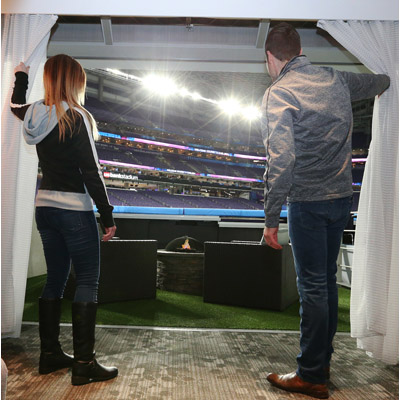
Brand: Courtyard by Marriott
Campaign: Courtyard Super Bowl Sleepover Contest
Agency: IMG Live
BEST SPORTS SPONSORSHIP OR TIE-IN—SILVER

Brand: Courtyard by Marriott
Campaign: Courtyard Super Bowl Sleepover Contest
Agency: IMG Live
When you’re a kid, nothing is more fun than a sleepover. And when you’re a football fan, nothing is more exciting than getting close to the action. Courtyard by Marriott, the official hotel of the NFL, brought those two experiences together with its annual Super Bowl Sleepover Contest.
Courtyard wanted to give two lucky fans the best experience a fan could have—the opportunity to sleep in one of their “hotel rooms” the night before the Super Bowl, in a suite built just for the occasion at U.S. Bank Stadium, site of Super Bowl LII.
To encourage all fans to enter the contest, Courtyard ran a social media campaign featuring people from all walks of life. The theme, “We’re All About the Game,” reinforced the idea that no matter how diverse NFL fans are, they’re all united by their love of football.
From September 1 through November 3, on Facebook, Twitter and Instagram, thousands of fans shared their most unique, one-of-a-kind NFL fan photos and videos using the hashtag #CourtyardSleepoverContest.
For the ultimate prize, Courtyard hosted the winner and a guest at an in-stadium experience with access to exclusive events throughout the weekend, culminating in a sleepover in the stadium on the eve of the Super Bowl LII and tickets to the big game.
In addition to the suite, a custom 4-D, 360-degree virtual reality dome replicated the stadium sleepover experience to give fans and the media a peek at what it’s like to sleep over at the Super Bowl. The dome debuted in New York on Sept. 28, and fans could visit it Super Bowl LII weekend inside the Mall of America
Contest winner Courey Marshall and his wife Chelsea attended the pre-Super Bowl Party at the Vikings House, presented by Courtyard. The next day, they had a private tour of U.S. Bank Stadium and dinner in their room with linebacker Von Miller, from Courey’s favorite team, the Denver Broncos. Super Bowl Sunday began for Courey and Chelsea with “breakfast in bed” delivered by Dallas Cowboys quarterback Dak Prescott.
The campaign exceeded 439 million PR impressions. The media showcase prior to the winners moving into the suite on Super Bowl Saturday received more than 42.5 million p.r. impressions. The 4-D dome launch and experience hosted over 3,000 guests, and the experience and sleepover contest gained 11 million social video views.
Bronze Winner
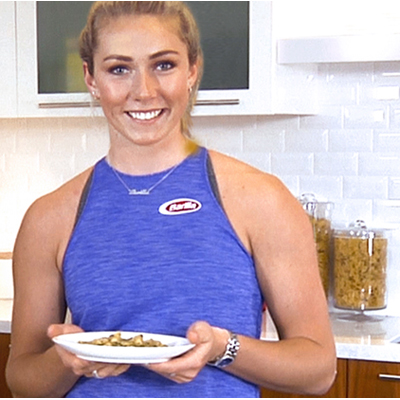
Brand: Barilla
Campaign: Barilla Fuel Your Fitness with Mikaela Shiffrin
Agency: TPN
BEST SPORTS SPONSORSHIP OR TIE-IN—BRONZE

Brand: Barilla
Campaign: Barilla Fuel Your Fitness with Mikaela Shiffrin
Agency: TPN
Pasta isn’t always the first choice for active women looking for more protein. Barilla wanted to disrupt that thinking, so it leveraged a sponsorship of Olympic gold medal skier Mikaela Shiffrin to raise awareness for its ProteinPLUS pasta.
MyFitnessPal was chosen as the partner to make it happen. The app has over 35 million monthly active users that skew 70 percent female and 87 percent under age 54. The app features more than five million foods in its database.
By logging meals and workouts, the target audience was rewarded with access to exclusive nutrition and fitness content, and incentives to purchase Barilla ProteinPLUS. In turn, Barilla was able to create a dialogue with a brand new target shopper.
Mobile ad units were integrated within users’ typical MyFitnessPal app experience as well as a monthly newsletter sent to the app’s 16-million opt-in subscribers. Social media posts on Facebook and Twitter targeted followers of Mikaela Shiffrin, MyFitnessPal and Barilla. Barilla’s bi-monthly newsletter drove new participants to join, and user-generated emails allowed new participants to encourage friends to join.
As participants completed tasks, each user would earn a new pasta badge and access to exclusive nutrition/fitness inspired content, such as a free digital cookbook (for logging in one meal), access to Mikaela Shiffrin’s Spotify workout playlist (six meals logged), videos of Shiffrin’s Barilla-fueled success (13 meals), pasta recipes (one meal logged using the Barilla pasta), an exclusive workout (eight workouts logged) or an entry in a sweepstakes to win a $300 Target gift card, a Barilla-Mikaela Shiffrin ski hat or a pasta prize pack (20 meals logged).
To get people to try the pasta, $1.75 off digital coupons were delivered via dynamic links to all participants who opted in to receive communications from Barilla.
The sponsorship generated more than 32 million impressions across all platforms, with 93,439 total participants, more than seven million meals logged, 1,475,925 exercises logged and 27,455 clicks on in-app media placement. In addition, the brand’s email database grew by 32,191 addresses and during the campaign, there was 36.5 times more traffic to the Mikaela Shiffrin webpage on barilla.com.
Gold Winner
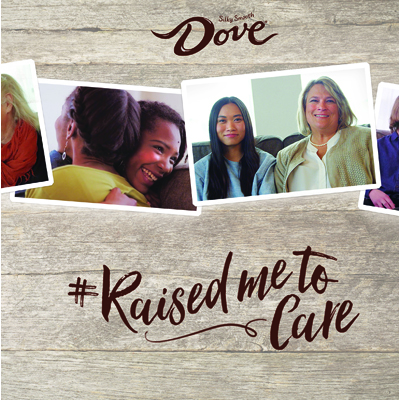
Brand: Mars Wrigley Confectionary/Dove Chocolate
Campaign: Walmart Raised Me to Care
Agency: The Integer Group
BEST USE OF CONTENT MARKETING—GOLD

Brand: Mars Wrigley Confectionary/Dove Chocolate
Campaign: Walmart Raised Me to Care
Agency: The Integer Group
For Mother’s Day, consumers typically shower mom with flowers and cards, but chocolate gifts aren’t always top of mind. Mars Wrigley saw the untapped potential for its Dove Promises brand and partnered with Walmart.com to honor moms—and increase sales—during a holiday few other chocolate brands traditionally leveraged.
The campaign focused on the busy family shopper at Walmart, a mom who strongly skews Millennial and has several kids in her household. She has already allocated all of her time and money, with a huge portion of both often going to Walmart. She feels good about purchasing items that have an added social cause or benefit to the community.
The creative solution, Raised Me to Care, leaned heavily on the important role mothers play in the lives of their families. The heart of the program was an NPR StoryCorps-style online interview series between mothers and their children with extraordinary circumstances. Consumers were urged to give their own mom a special Mother’s Day call out, by socially sharing and telling their own stories using #Raisedmetocare. The campaign tied into Dove CAREs, an initiative showcasing the brand’s commitment to supporting female cacao farmers in Africa.
Online videos were used to create an emotional connection. To reach consumers while they were in the shopping mindset, Dove used AOL pre-roll ads and promoted Facebook posts. Walmart Exchange (WMX) data was leveraged to reach consumers via run-of-site ads, keywords and contextually targeted placements on Walmart.com and within the Walmart mobile app. All media drove consumers to an enhanced landing page on the Walmart site where they could seamlessly add Dove products to their shopping cart.
The campaign drove both a sales lift (20.8 percent) and conversion lift (3.8 percent) of Dove Chocolate during the program time frame. The sales lift translated to $245,000 in ad-exposed incremental revenue. The online ads drove a 47.5 percent new buyer rate across all channels. Online purchases accounted for 62.5 percent of new buyers to the Dove Chocolate brand, and achieved a 29.7 percent conversion lift. The videos generated more than four million impressions and 11,424 engagements across Facebook and Instagram. Sweet, indeed.
Silver Winner
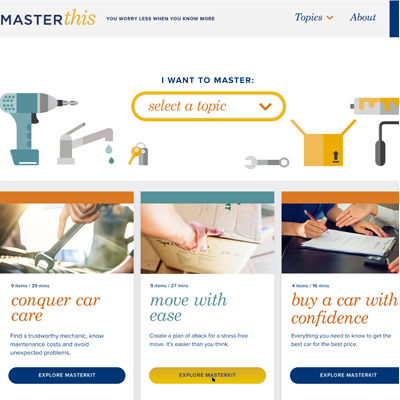
Brand: Liberty Mutual Insurance
Campaign: Master This
Agency: Jack Morton Worldwide
BEST USE OF CONTENT MARKETING—SILVER

Brand: Liberty Mutual Insurance
Campaign: Master This
Agency: Jack Morton Worldwide
On average, 11 percent of auto insurance policyholders leave their insurance company in a year, and Liberty Mutual knew that 39 percent of its customers were currently shopping for a different insurance carrier. The brand wanted to create an opportunity to prove the quality of its service, since only a small fraction of policyholders make a claim each year.
Finding a new way to build affinity and boost its value to retain customers was essential. The answer came in the form of a research insight that showed that Liberty had an immense amount of credibility right where consumers had an immense amount of pain: worrying about what they can’t control.
When it comes to life’s biggest worries, Liberty Mutual’s over-achiever customers only trust one person to get the job done: themselves. So the brand introduced MasterThis, a unique content marketing platform dedicated to resolving customers’ worries by making them the masters on all of life’s biggest worries. Because, “you worry less when you know more.”
MasterThis was designed as way to help policyholders grow their personal knowledge about insurance. MasterKits, which are collections of content on a given worry, are sequential guides to take the user from worry to mastery.
The “Move With Ease” MasterKit, for example, included “Ultimate Moving Checklist” and “Cleaning House: Where to Get Rid of Your Junk” listicles; a short video on 12 tips for packing like a pro; and an article on everything you need to know about home insurance. To lend credibility, Liberty Mutual partnered with digital and podcasting brand HowStuffWorks.
Content was distributed at a number of touchpoints, including email, social media, advertising, direct mail, voice assistants, sponsorships and more, and was served based on a combination of first, second and third-party data to get customers the right content, in the right context, at the right time.
The results? Liberty Mutual saw an 800 percent increase—yep, you read that right—in time on site versus previous efforts, showing consumers are interested in the content and trust the brand’s voice. There was a 50 percent decrease in bounce rate, compared to historical content marketing efforts. Ninety percent of policyholders were reached via trackable email and direct mail with MasterThis content.
Bronze Winner
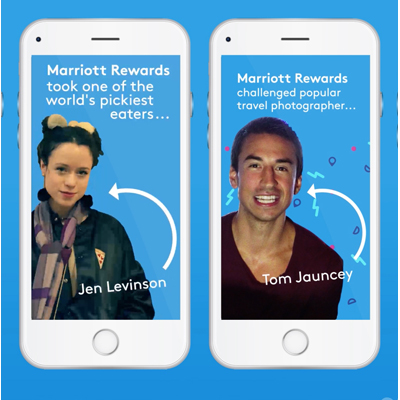
Brand: Marriott Rewards
Campaign: 6 Days, 7 Nights
Agency: In-house
BEST USE OF CONTENT MARKETING—BRONZE

Brand: Marriott Rewards
Campaign: 6 Days, 7 Nights
Agency: In-house
Marriott Rewards is one of the most well known loyalty programs in the world, but when it came to younger travel-loving audiences, it needed to develop a stronger connection. The 6 Days, 7 Nights program set out to boost awareness and drive consideration among this coveted demographic.
Marriott Rewards created the travel industry’s very first episodic Snapchat series, “6 Days, 7 Nights,” which followed four social media influencers as they explored different cities around the world. The episodes spoke to viewers in a language they were already familiar with on Snapchat: organic, user-generated content in a vertical, full-screen format with briskly paced editing and fun creative additions like emojis, patterns and captions.
The full episodes transported members to fascinating destinations, like Seoul and Dubai. The influencers led members on an exciting journey with a clear challenge—like testing Berlin’s unique food scene or experiencing Seoul’s take on American traditions. Members experienced this adventure through the eyes of the influencer, discovering the benefits of the loyalty program along the way. Each episode featured a unique hotel from a distinctive brand in the Marriott portfolio and highlighted Rewards member benefits.
To persuade Snapchatters to swipe up and opt in to view the program’s full episodes Marriott Rewards crafted the Snap Ads long-form video campaign with multiple top snaps, optimized for those that drove the most swipe ups. They followed creative best practices, like keeping top snaps under 10 seconds, presenting the brand in the very first frames, highlighting the featured talent’s personality and appealing to Snapchatters with both verbal and visual CTAs to “swipe up” on the videos.
Their strategy paid off—Snapchatters opted to watch the final branded video experience for longer than most auto-play, pre-roll video ads last. The series generated over 16 million impressions, reaching 4.7 million unique viewers, and the premiere episode was been named the top-performing advertisement on Snapchat to-date. While the Top Snaps drove strong swipe up rates, the campaign delivered especially strong engagement with the long-form videos, which enjoyed an average playtime of 39 seconds.
Gold Winner

Brand: Archer
Campaign: The Biggest Sports Endorsement Deal of All Time
Agency: FCB Chicago
BEST USE OF DISRUPTIVE MARKETING—GOLD

Brand: Archer
Campaign: The Biggest Sports Endorsement Deal of All Time
Agency: FCB Chicago
To fight its way out from under competitors like P&G and Unilever, Archer, a small home care company for men, turned to social media with a bold goal to increase the brand’s social engagement by 10X. Here’s the setup.
Record breaking sports endorsements deals make headlines for brands. The higher the total amount of a sports endorsement deal, the bigger the headlines. And the highest paid athletes aren’t just paid for their skills during their games, it’s their partnerships with brands that rake in the dough. Nike holds the most notable amount of athletes under contract with 48 of the top 100, including Cristiano Ronaldo, LeBron James and Serena Williams.
With that in mind, Archer pulled a brilliant tongue-in-cheek challenger brand move by signing the Biggest Sports Endorsement Deal of All Time: $3.4 billion paid out over 10 million years to Windy City Thunderbolts pitcher Clay Chapman. Clay was deemed the perfect fit for the brand because he’s a young, hungry player who “really appreciates a good air freshener” (since he spends so much time in locker rooms).
Archer alerted the biggest sports networks and media, including ESPN, Comcast SportsNet, NBC Sports Network, FOX Sports, CBS and AP who were invited to Archer’s press conference where they brand presented an oversized $3.4 billion check and streamed the whole event on Facebook Live.
The Biggest Sports Endorsement of All Time not only had a massive impact on elevating Archer’s awareness, but helped the brand earn a 142 percent increase in sales. Even with a small budget, that’s a pretty impressive lift for the first year of the endorsement. Archer expects the trajectory to continue over the next 9,999,999 years.
Silver Winner
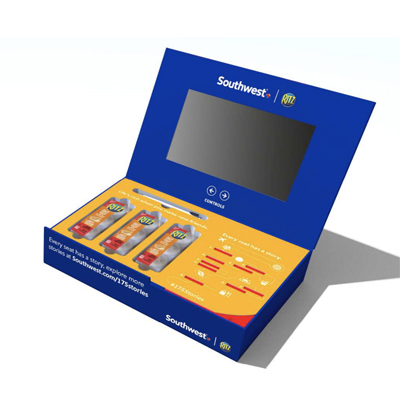
Brand: Southwest Airlines
Campaign: Center Seat Celebrated
Agency: AMP Agency
BEST USE OF DISRUPTIVE MARKETING—SILVER

Brand: Southwest Airlines
Campaign: Center Seat Celebrated
Agency: AMP Agency
Southwest wanted to give its brand an extra lift while leveraging the brand equity of its onboard partner RITZ. The client specifically wanted to create a “bad-ass” onboard moment that led to “must-share” content.
Three flights going to tourist destinations were selected as the platform for the promotion. To get passengers involved—and ready to capture the experience—flights attendants announced that they would hand out a special gift to those sitting in the center seat.
When the box was opened, an animated guide walked passengers through the experience. First, they were prompted to share the three RITZ sandwich packs printed with the word “window,” “center” and “aisle” with their seatmates. Then they were asked to get to know their seatmates while completing custom Madlibs. Instead of asking for adverbs and adjectives they asked for details like the eye color of the window seat passenger, and the high school mascot of the aisle seat passenger. Finally, passengers were prompted to open the hidden drawer of the box that revealed three sets of playing cards, one for each seatmate.
The Southwest Business communications team captured all of this with their onboard camera crew. The brand’s social posts performed far ahead of their average metrics, with more than 70,000 video views and 300,000 reached on Facebook. The most amazing result was that of the 2,075 reactions—the post garnered 99.99 percent positivity from the people who saw it. Now that’s something to smile about.
Bronze Winner
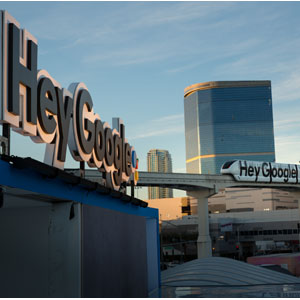
Brand: Google
Campaign: Hey Google CES
Agency: Sparks
BEST USE OF DISRUPTIVE MARKETING—BRONZE

Brand: Google
Campaign: Hey Google CES
Agency: Sparks
How do you get an entire city to say, “HEY GOOGLE?”
Sparks took on that challenge at the 2017 Las Vegas Consumer Electronics Show to show that Google Assistant is available across devices and platforms, showcasing the breadth of the more than 225 smart home brands in the Google Assistant ecosystem and how these integrations help consumers.
The team brought every tool in the toolbox, executing a total Las Vegas takeover that included an out-of-home media presence featuring “Hey Google” across 54 locations, Assistant activations in over 150 partner booths, private meetings and an engaging social presence. There were also major events and experiences.
The Google Assistant Playground, the main CES experiential hub, was located in the Central Plaza where a wonderland of hands-on engagements showcased the Assistant and all the ways it can help daily life. The three-level, 6,000-square-foot experience featured open and closed-air spaces, and packed in over 200 partner engagements, 450 partner devices and various opportunities to see how the products worked together. Ten sensors throughout the Playground anonymously tracked traffic, journey and dwell time.
Then there were the three, 20-foot-tall, larger-than-life gumball machines located on the promenade on the Linq, inside the Sands and the main entrance of the Las Vegas Convention Center. Guests interacted with Google Assistant on a screen and were then vended a gumball capsule. Inside, prizes ranged from Google-branded gear and partner gift cards to devices that had the Google Assistant built in, like Google Home Mini.
Twenty-six brand ambassadors engaged and interacted with guests both on- and off-site.
If Google execs asked Assistant how well the campaign went, the answer would be a resounding “Great!” The Playground and Gumball Machines garnered 41,500 impressions and 20,000 engagements. Average dwell time at the playground was 8:22 minutes (first level), and 25 minutes (second level). Average wait time for the Gumball Machines was 75 minutes with 5,400 product trials and 5,400 prizes dispensed. The product gallery had 13,300 visitors with 5,000 product trials. There were millions of impressions and social interactions. And to top it all off, some eight in 10 attendees saw the Assistant at CES and the use of “Hey Google” as a trending phrase increased by 84 percent over the week.
Gold Winner

Brand: Google
Campaign: Hey Google CES
Agency: Sparks
BEST USE OF EVENT OR EXPERIENTIAL MARKETING (FIVE VENUES OR LESS)—GOLD

Brand: Google
Campaign: Hey Google CES
Agency: Sparks
How do you get an entire city to say, “HEY GOOGLE?”
Sparks took on that challenge at the 2017 Las Vegas Consumer Electronics Show to show that Google Assistant is available across devices and platforms, showcasing the breadth of the more than 225 smart home brands in the Google Assistant ecosystem and how these integrations help consumers.
The team brought every tool in the toolbox, executing a total Las Vegas takeover that included an out-of-home media presence featuring “Hey Google” across 54 locations, Assistant activations in over 150 partner booths, private meetings and an engaging social presence. There were also major events and experiences.
The Google Assistant Playground, the main CES experiential hub, was located in the Central Plaza where a wonderland of hands-on engagements showcased the Assistant and all the ways it can help daily life. The three-level, 6,000-square-foot experience featured open and closed-air spaces, and packed in over 200 partner engagements, 450 partner devices and various opportunities to see how the products worked together. Ten sensors throughout the Playground anonymously tracked traffic, journey and dwell time.
Then there were the three, 20-foot-tall, larger-than-life gumball machines located on the promenade on the Linq, inside the Sands and the main entrance of the Las Vegas Convention Center. Guests interacted with Google Assistant on a screen and were then vended a gumball capsule. Inside, prizes ranged from Google-branded gear and partner gift cards to devices that had the Google Assistant built in, like Google Home Mini.
Twenty-six brand ambassadors engaged and interacted with guests both on- and off-site.
If Google execs asked Assistant how well the campaign went, the answer would be a resounding “Great!” The Playground and Gumball Machines garnered 41,500 impressions and 20,000 engagements. Average dwell time at the playground was 8:22 minutes (first level), and 25 minutes (second level). Average wait time for the Gumball Machines was 75 minutes with 5,400 product trials and 5,400 prizes dispensed. The product gallery had 13,300 visitors with 5,000 product trials. There were millions of impressions and social interactions. And to top it all off, some eight in 10 attendees saw the Assistant at CES and the use of “Hey Google” as a trending phrase increased by 84 percent over the week.
Silver Winner

Brand: Comedy Central
Campaign: The Daily Show Presents: The Donald J. Trump Presidential Twitter Library
Agency: 23 Stories x Condé Nast
BEST USE OF EVENT OR EXPERIENTIAL MARKETING (FIVE VENUES OR LESS)—SILVER

Brand: Comedy Central
Campaign: The Daily Show Presents: The Donald J. Trump Presidential Twitter Library
Agency: 23 Stories x Condé Nast
To generate buzz for “The Daily Show,”,Comedy Central created an activation designed to unite viewers around the humor of President Trump’s Twitter feed.
The Donald J. Trump Presidential Twitter Library told the story of Trump’s presidency entirely through his own tweets. It featured visual installations and a fully interactive, hands-on experience for “hands of all sizes,” giving patrons the once-in-a-lifetime opportunity to memorialize and celebrate the many “unprecedented” moments of President Trump’s Twitter history. The library was filled with many “social worthy moments” including interactive installations like “The Commander-in-Tweet,” where attendees could compose tweets upon a golden toilet installed in the Oval Office. A video retrospective solemnly displayed a collection of people, places and things that the President has deemed “SAD!” At the Trump vs. Trump installation, President Trump’s unique ability to hold a variety of different opinions on the same subject was documented.
In a series of testimonials by “verified survivors,” people recounted the trauma of being targeted by Trump on Twitter. And the Donald J. Trump: A Man of Characters short docufilm, narrated by “The Daily Show” correspondent Jordan Klepper, took a look at the history of Trump and the 140 character platform he revolutionized.
The team got the message across. At the New York grand opening the line was over seven hours long to enter. The event hashtag #DailyShowLibrary trended on social media during the activation’s opening weekend. HuffPost called it “arguably the most impressive satire of the current administration to date.” Social shareability was picked up by news outlets around the world including coverage on CNN, MSNBC, The Los Angeles Times, Popsugar, Huffington Post, Time, Gothamist, USA Today, Rolling Stone, The Washington Post, and even France 24. Now that’s something to tweet about!
Bronze Winner
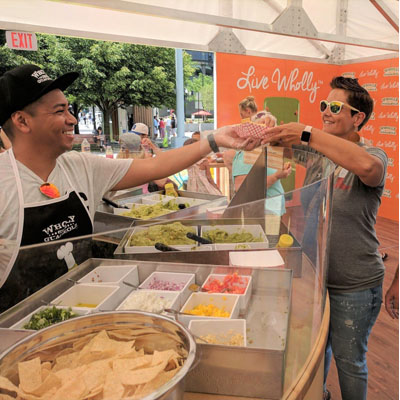
Brand: Wholly Guacamole
Campaign: The Guac Stop
Agency: Havas Formula
BEST USE OF EVENT OR EXPERIENTIAL MARKETING (FIVE VENUES OR LESS)—BRONZE

Brand: Wholly Guacamole
Campaign: The Guac Stop
Agency: Havas Formula
Guacamole is more than just something you dip a crisp chip into. It’s a fun, versatile and convenient product made with real ingredients. At least that’s the message Wholly Guacamole wanted to spread by getting people to not only try its Guac, but to showcase its versatility.
Enter The Guac Stop, a sampling campaign featuring a traveling, 30-foot by 30-foot pop-up guacamole lounge that made stops in five locations—Chicago, Philadelphia, Atlanta, Los Angeles and Seattle—in search of Gen X and Millennial consumers. At each activation, the brand positioned itself as a healthy lifestyle product that could be incorporated into any daily routine. A sampling bar offered 12 Guac toppings. There was a Prynt photo activation and lawn and table games. To tailor the experience to each location, mini-events were hosted based on the market’s unique traits and trends—in Atlanta, for instance, peach toppings were on the menu.
Visitors were engaged with in a series of daily “happenings” such as iPhone photography classes, live music, flower crown making, avocado facials, latte art classes and experiences that highlighted the brand’s “Live Wholly” pillars.
People that tweeted a custom hashtag from a socially enabled vending machine received a giveaway featuring avocado characters specially created for the promotion by a cartoonist. In each market, on-site printers produced t-shirts with market-specific designs available to the first 200 respondents. For example, in Philadelphia the shirts read “Guacky Balboa” and showcased an avocado flexing his muscles atop those iconic steps.
Havas Formula’s p.r. team drove media interest by announcing the tour in national and local outlets, partnering with lifestyle and food influencers, and leveraging online calendar listings.
The three-month execution distributed 243,096 samples and saw 258,029 consumer engagements, exceeding estimations by more than 12 percent. Some 750 photos were taken and the interactive vending machine garnered 2,500 social media engagements. A total of 131 pieces of coverage were recorded, equating to 1.2 billion media impressions and $6 million in ad value, 35 times more impressions than the 2016 experiential program. Wholly guacamole! (We had to say it.)
Gold Winner
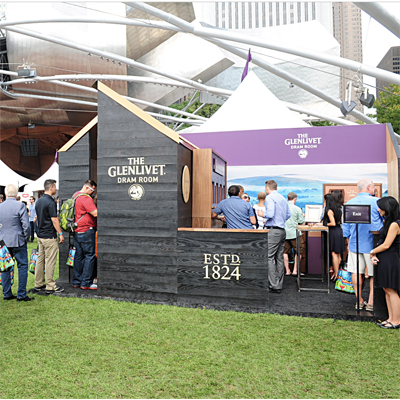
Brand: The Glenlivet
Campaign: The Glenlivet Dram Room
Agency: Grow Marketing
BEST USE OF EXPERIENTIAL MARKETING (FIVE VENUES OR MORE)—GOLD

Brand: The Glenlivet
Campaign: The Glenlivet Dram Room
Agency: Grow Marketing
The Glenlivet was looking for new customers that matched its sweet spot, 25-to-45 year-old men with a culinary mindset. The goal was to create a high-volume sampling experience with a hyper-efficient flavor platform all in a social setting that would fuel interaction.
The resulting six-month tour, The Glenlivet Dram Room, made its way to festivals and foodie events across the country. It was designed and constructed as a modular structure that felt more like a permanent house than a pop-up booth. Real copper was used, including a 96-square-foot solid copper roof, which echoed the copper pot stills used during the brand’s whisky distillation process. Hand-weathered wood on the outside of the set represented the charred barrels used during whisky production.
A video loop showed scenes outside the distillery in Speyside, Scotland, alongside gristmills where guests could reach out and touch the barley that transforms water into whisky during the distillation process. The Aroma Station brought guests on an olfactory journey through the flavor notes of each expression, while neat whisky and cocktail sampling rounded out the tasting experience.
Robust floor-to-ceiling imagery transported guests to Scotland. As guests entered, an 11-foot-tall image of Speyside at the end of the hallway brought the origin story home; on the opposite end of the hall, a 10-foot-tall photograph of the copper whisky stills housed in The Glenlivet Distillery gave guests a sense of the stills’ massive scale.
The custom-built Custom Cocktail Machine utilized a never-before-seen app and unique algorithm to guide users through a series of specially designed taste-focused questions in order to determine their tasting preferences and resulting cocktail recommendation.
All consumers who used the Custom Cocktail Machine received a post-event email that included the recipe for their selected cocktail, as well as location-specific information about where to purchase the ingredients for the drink, driving consumer traffic to retail and encouraging guests to further interact on social media.
A total of 20 festivals and 42 activation days produced 20,325 attendees who consumed 1,541 bottles of the product. The Custom Cocktail Machine provided 4,130 uses. More than 7.4 billion festival media impressions were recorded and more than 158,870 passerby impressions were earned along with 5,147 CRM system registrations. We’ll drink to that.
Silver Winner
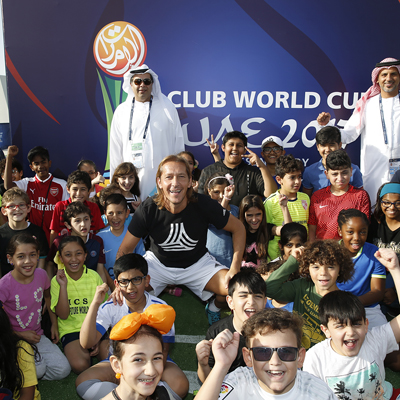
Brand: The FIFA Club
Campaign: FIFA Club World Cup UAE 2017 Experiential & Community Outreach
Campaign Agency: Flash Entertainment
BEST USE OF EXPERIENTIAL MARKETING (FIVE VENUES OR MORE)—SILVER

Brand: The FIFA Club
Campaign: FIFA Club World Cup UAE 2017 Experiential & Community Outreach
Campaign Agency: Flash Entertainment
The FIFA World Cup has traditionally struggled to generate significant interest in the tournament’s early round games, where teams and players aren’t as well known to local communities.
That tide began to turn thanks to an experiential campaign that would cross countries targeting a diverse United Arab Emirates (UAE) audience that included men and women, adults and youth, football fans and non-footballers, people of all abilities and nationalities.
Two mobile roadshow units anchored the program, touring the UAE for 200 days over nine months, visiting 68 unique and strategically chosen locations and actively engaging participants through skill-based competitions. To access the experience, a match ticket was required.
The Mobile Roadshow was built around six key components. First among them, community outreach, which was key to maximizing engagement. Gamification in the form of skill-based games and an app testing the skillsets of modern footballers—speed, power, jumping, reflex, accuracy—let players see their scores and rank themselves against friends and family. Mass accessibility efforts, like the activation for the People of Determination (Special Needs) organized with Dubai Police, created a sense of inclusion. Conversion to attendance was prioritized—players who entered the “Ultimate Heroes” competition received an equivalent value ticket voucher for an early stage match. There was youth integration through the “Youth Leadership Programme” which invited students to serve as community influencers, drive participation, compete for once-in-a-lifetime on-pitch experiences, FIFA legend interactions and receive certificates. And finally, content generation—the roadshows generated most of the tournament’s promotional material, providing a source for original stories, notably global CNN coverage the day before Real Madrid vs Al Jazira.
The campaign successfully attracted diverse communities, activating both football and non-football fans and driving 35 percent higher match attendance to early-round matches. The roadshow reached 66,000 school children at 21 schools with nearly 5,000 children attending early-round matches and 150 serving as Youth Leaders.
Bronze Winner
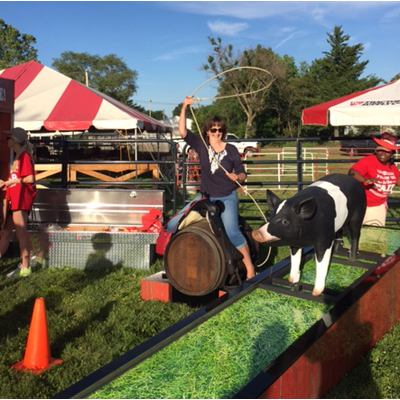
Brand: Tractor Supply
Campaign: Follow Us to the Fair Tour 2017
Agency: Pro Motion
BEST USE OF EXPERIENTIAL MARKETING (FIVE VENUES OR MORE)—BRONZE

Brand: Tractor Supply
Campaign: Follow Us to the Fair Tour 2017
Agency: Pro Motion
This campaign was all about that base—the core, rural lifestyle consumer, that is—and how to drive them into Tractor Supply stores to purchase.
The challenge was to bring attention to the brand’s wide range of product lines beyond tractor parts—like pet food, clothing, shoes, tires and chicken coops.
The Follow Us to the Fair 2017 Tour pulled two wrapped 38-foot gooseneck trailers with two tricked-out, wrapped Silverado Crew Cabs, visiting 19 fairs across 10 states over the course of 20 weeks.
On site, the entrance to the 40-foot by 60-foot footprint created an authentic impression with a barn façade. Inside, there was a stage with live events and kiosks where consumers could enter sweepstakes featuring prizes like $1,000 TSC Gift Cards, $750 from Carhartt and a flatbed trailer. Family games included Purina’s Feed the Animals beanbag toss that barked, mooed, clucked and neighed when players got the “food bag” into the respective animal’s mouth, Shell Rotella’s Test Your Strength high-striker game and “Pickles,” a mechanical pig people try to lasso as he ran down the getaway ramp. Prizes included foam cowboy hats that said “TSC Lasso Champion,” authentic trucker hats, TSC coupon books with savings over $300, handy tote bags, dog and cat bowls and collars and farm animal figurines.
A taxidermied retired rodeo bull, Moose, was the backdrop for “action” photos that could be shared socially. On stage, brand ambassadors announced and led dance parties to the sounds of country music.
Overall, 136,000 coupon books were distributed, driving 4.6 percent redemption. More than 146,000 premiums were distributed and there were 350,600 total impressions, with 98,800documented impressions coming from PR and social media alone.
Gold Winner
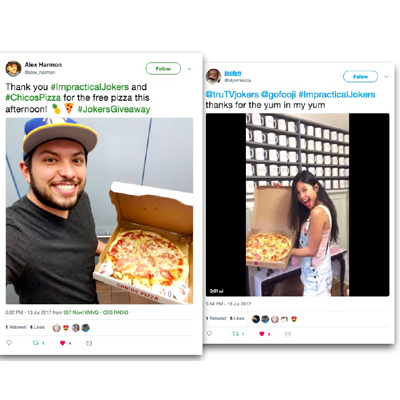
Brand: Impractical Jokers
Campaign: Impractical Jokers Surprise and Delight
Agency: truTV
BEST USE OF GAMIFICATION, CONTESTS AND SWEEPSTAKES—GOLD

Brand: Impractical Jokers
Campaign: Impractical Jokers Surprise and Delight
Agency: truTV
“Impractical Jokers” is truTV’s highest-rated series—and its most time-shifted. To encourage fans to tune in live to the season six premiere last July—a one-hour special from Hawaii—truTV created a time limited promotion to connect socially with fans and get them to stay in front of their TV for the show.
To get fans in the mood, Impractical Jokers brought a little bit of Hawaii to viewers for the premiere with a hashtag-driven sweepstakes by sending free Hawaiian pizzas to fans that tweeted at the show using a pineapple emoji.
The promotion required complex planning and integration of social media, fulfillment and geo-location qualifiers. Some extremely remote parts of the country had to be excluded from the rules, since it would be impossible to find a local pizza supplier within a one-hour delivery window.
Jokers fanatics are truTV’s most engaged and loyal followers on social media. Fans had to tweet @truTVjokers + #JokersGiveaway + (pineapple emoji) for a shot at free delivery. One of the Jokers—James “Murr” Murray—surprised fans at viewing parties by personally delivering pizzas, all captured live via Snapchat.
This promotion was open for no more than seven hours (while supplies lasted) and promoted solely through the Jokers social handles. Fan engagement, sharing and viral responses were key drivers to social success.
Premiere night demonstrated the Jokers and Pineapple love. #JokersGiveaway received more than 19,000 Tweets from 6, 400 participating fans, generating 1.57 million impressions, trending across the country. The supporting microsite gained 177,000 page views. Twitter generated 1.1 million organic impressions for the season premiere, an all-time high for the series, and 39,000 video views were generated on the platform, the second highest for a season or mid-season premiere of the series.
Silver Winner
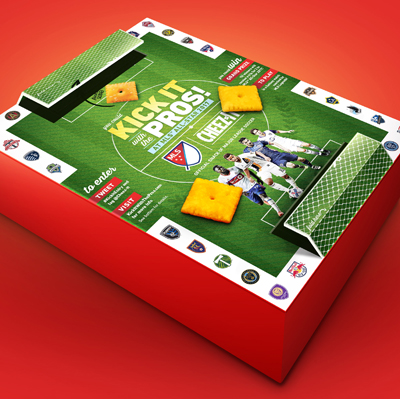
Brand: Cheez-It, Pringles
Campaign: Kick It with the Pros
Agency: Catapult
BEST USE OF GAMIFICATION, CONTESTS AND SWEEPSTAKES—SILVER

Brand: Cheez-It, Pringles
Campaign: Kick It with the Pros
Agency: Catapult
Cheez-It and Pringles’ “Kick It with the Pros” promotion combined fans’ love of Major League Soccer with their own desire to participate in the game.
MLS fans skew toward young parents and their kids, with a modest slice of the Hispanic demographic in the mix. These “Bold Explorers” snack whether they’re relaxing in front of the TV or out and about as a family. Cheez-It and Pringles wanted to develop a promotion that would link the snacks to their lifestyle and priorities, strengthen retailer ties and boost sales. A challenges was that the brands didn’t have the deep-pockets of some of their major competitors, meaning they had to do it all without TV or print support.
An online sweepstakes invited fans to step right onto the field and into the action with MLS stars. The grand prize: playing in a fantasy soccer match on MLS All-Star Weekend coached by MLS legends, plus four fantasy camps promoted regionally. Support included field signage at 22 MLS stadiums, homepage takeovers of team websites, YouTube ads, web banners, national and regional in-store POP, email and p.r. Entries were accomplished with a simple tweet tagged #KickItEntry.
To amp up the excitement, packages of Cheez-It were turned into an invitation to get into the game not only on the field, but at the table, with a box that let them literally play with their food. The back of the box was decorated as a soccer field with pop-up goals at each end, and consumers could shoot a Cheez-It cracker at the opponent’s goal with their thumb and forefinger. Players were invited to post videos of their tabletop soccer exploits with the #KickItEntry tag. Pringles and other Kellogg’s snack brand packaging, and POP displays supported the promo as well.
Bold Explorers immediately lit up social media, especially Twitter, with 35,478 mentions from #KickItEntry conversations alone. This total included thousands who played the on-box cracker-soccer game, then tweeted videos and stills of the action. The sweeps itself drew over 93,000 tweeted entries. Across Walmart, Kroger, Albertson’s/Safeway, Northgate and Publix, Kellogg’s point-of-purchase investment delivered a hefty 535 percent return in gross sales volume—$5.35 in additional consumer purchases for every dollar spent.
Bronze Winner

Brand: AARP
Campaign: The Great American Expedition Sweepstakes
Agency: HelloWorld
BEST USE OF GAMIFICATION, CONTESTS AND SWEEPSTAKES—BRONZE

Brand: AARP
Campaign: The Great American Expedition Sweepstakes
Agency: HelloWorld
Visitors to AARP’s travel site expect to learn more about travel destinations, seek discounts and connect with others in the online community. The Great American Expedition Sweepstakes further positioned the brand as the “go-to” resource for travel inspiration and information.
Travel is a big part of AARP members’ lives, so providing trip recommendations affordable to every budget and accessible to people with physical limitations was essential. The goal was to help users find the perfect travel experience and show that exploring America is more doable than they may have realized.
On the landing page, users were greeted with classic American imagery of towering skyscrapers, an open road snaking through a red rock canyon and a picturesque sunset behind a palm tree. Once logged in, users found themselves at the Hub where they could spin a compass deciding which one of six U.S. regions they will “visit” to complete fun online activities earning additional entries. The Hub offered a new adventure every day, with users learning new things about America. Unique trivia questions connected the user with fun and informative travel-related content, earning sweepstakes entries along the way.
With users encouraged on an emotional level—with nostalgia for past vacations and excitement for their next big adventure—they were invited to share their favorite travel stories and answer travel-related trivia questions to earn chances to win a travel experience of a lifetime.
A total of 208,441 entrants participated, for a 37 percent conversion rate. Over 139,009 entrants opted in for the monthly Disrupt Aging newsletters, and over 98,500 entrants opted-in for the AARP Travel Newsletter email.
Gold Winner
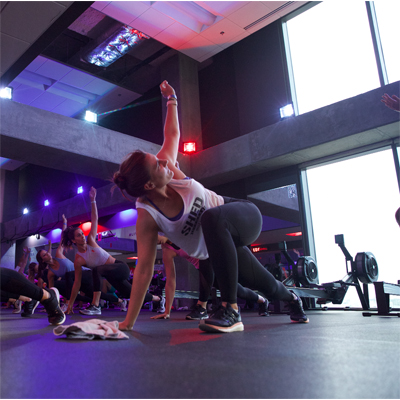
Brand: Anheuser-Busch/Michelob Ultra
Campaign: Live Ultra Summer Series
Agency: Fusion Marketing
BEST USE OF INFLUENCER MARKETING—GOLD

Brand: Anheuser-Busch/Michelob Ultra
Campaign: Live Ultra Summer Series
Agency: Fusion Marketing
What would it take to get consumers to consider Michelob ULTRA as an authentic part of the fitness community and the smart beer choice for those who choose to be active?
For A-B, the answer was in a series of live fitness experiences supported by 18 social media influencers.
In 12 markets across the country, influencers gave out tickets to their social followings and led “Live ULTRA” fitness classes at iconic locations across the country (think yoga at Red Rocks). Following the workout, the influencers hosted happy hours, served Michelob ULTRA and handed out branded fitness premiums. Consumers who followed these gurus’ social media channels got the chance to win tickets to the events.
The Live ULTRA Summer Series saw 3,000 entries over the course of the 12 events. Over 10,000 attendees experienced the events. The 391 pieces of influencer-led content beat benchmarks by 24 percent, and Michelob ULTRA’s follower numbers across social media platforms increased month over month over the course of the program. The influencer-led experience gathered more than 2.6 million brand impressions, while the influencer-led social campaign gathered upwards of 33 million brand impressions.
After the campaign, Michelob ULTRA saw a 57 percent improvement in purchase consideration among healthy and active lifestyle consumers. Namaste.
Silver Winner
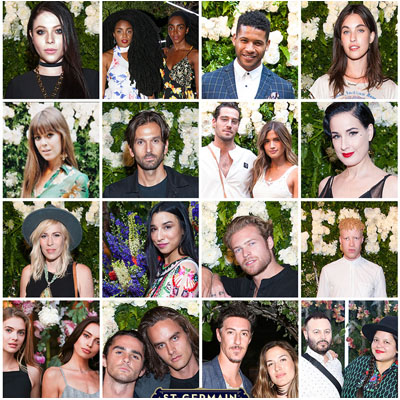
Brand: Maison St-Germain
Campaign: Maison St-Germain
Agency: Epsilon
BEST USE OF INFLUENCER MARKETING—SILVER

Brand: Maison St-Germain
Campaign: Maison St-Germain
Agency: Epsilon
How do you attract an elusive and glamorous audience to a niche brand—a French liqueur made from thousands of delicate white elderflower blossoms hand-picked at the height of their beauty?
St-Germain Elderflower Liqueur had a captivating story to tell and the Bacardi brand was ready for its day in the sun.
The solution was an experience that paired an irresistible location with an irresistible story. Top influencers in Manhattan and Los Angeles were invited to a botanical fantasy world called Maison St-Germain, an experience designed to appeal to the “Bon Vivant” or “One Who Lives Well.” The provocative garden of delights was inspired by the thousands of flowers that it takes to make St-Germain.
In New York, the brand turned two city blocks of The High Line in Manhattan into a romantic-yet-whimsical journey featuring a 16th-century-style French maze furnished from live hedges and a trail of thousands of flowers, with modern dance performances directed by Mafalda Millies. Overhead, the Chelsea Passage was transformed with a stunning installation of fresh blossoms.
Reappearing in August at the Houdini Estate in Los Angeles, Maison St-Germain incorporated elements of magical realism and mystique throughout the five-acre estate to honor Harry Houdini’s legacy.
Sent to an exclusive invite list, the botanical-inspired invitations included a glass terrarium filled with moss and succulents nestled around a bottle of St-Germain.
On site, to ensure that the star of the show, the St-Germain Spritz beverage, was cemented in each attendee’s memory and their social feeds, a “welcome cocktail” moment surprised people in both New York and L.A. as they strolled through the experiences. Bartenders batched cocktails in gold-rimmed custom glassware.
The events made an impact: Results from New York and Los Angeles generated 800 million impressions, a 20-million influencer reach, 115 million total social impressions, two million total engagements on user posts and 74 high-impact press hits, including Vogue, InStyle, Harper’s Bazaar, The New York Times, Elle, Women’s Wear Daily, Architectural Digest, The Hollywood Reporter, Huffington Post, Observer and People Magazine.
Bronze Winner
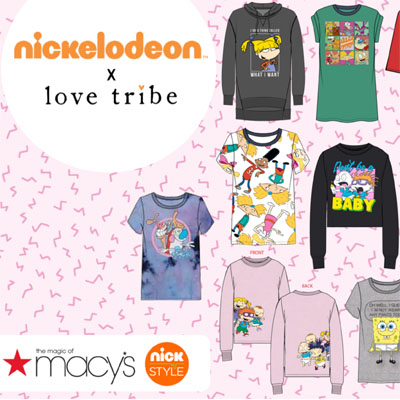
Brand: Love Tribe Apparel
Campaign: Nick 90’s by Love Tribe at Macy’s
Agency: In-house
BEST USE OF INFLUENCER MARKETING—BRONZE

Brand: Love Tribe Apparel
Campaign: Nick 90’s by Love Tribe at Macy’s
Agency: In-house
To bring its Nick ’90s apparel collection to market, Nickelodeon hosted a ’90s party launch event that generated traffic to the Macy’s One Below Millennial juniors destination at the Herald Square flagship store in New York City. Press and social buzz was drive by two Instagram Live segments hosted by Millennial fashion social media influencer, Tiffany Ma @misstiffanyma.
Showcased at the event were bright, on-trend styles featuring beloved Nick ’90s characters from “The Rugrats,” “The Ren & Stimpy Show” and “Hey Arnold!” Shoppers enjoyed free FroYo, ’90s candy bars, a digital slime booth and over $300 prize giveaways, all while jamming out to ’90’s tunes from a DJ. Macy’s merchandised the program in-stores with dedicated displays and signage.
Four social media fashion influencers popular amongst Millennials were contracted to post content wearing the outfits and attending the launch party, including @weworewhat with two million followers, and @colormecourtney, well-known for her vibrant and playful social content. Other influencers were also invited as VIP guests and posted content from the party wearing the collection.
The collection and launch event were promoted and supported across digital, social, press, and in-store including a BuzzFeed quiz for “Which Look is All That” driving to the collection on Macys.com. Social media posts on Nickelodeon, Love Tribe and Macy’s social platforms, press coverage from Cosmopolitan, Travel + Leisure, and others and a Macys.com collection page banner, radio broadcast spots and in-store promotions with signage and flyers rounded out the campaign.
Influencers garnered reach of more than 4.6 million impressions and during the launch event, four styles sold out. The collection overall enjoyed a more than 40 percent sell-thru, which resulted in an incremental order from Macy’s.
Gold Winner

Brand: Lufthansa
Campaign: Live With Lufthansa
Agency: The Bait Shoppe
BEST USE OF MARKETING INNOVATION IN A CAMPAIGN—GOLD

Brand: Lufthansa
Campaign: Live With Lufthansa
Agency: The Bait Shoppe
To raise awareness for its expanded European destinations, Lufthansa took consumers on a journey across the globe—without ever leaving New York City.
Lufthansa leveraged its sponsorship of LITE FM’s Broadway in Bryant Park to engage the thousands of consumers who attended the six weeks of live performances with live VR. The campaign revolved around a simple idea: Connect consumers live in VR with Lufthansa flight attendants based in premium European locations for a truly personal experience.
Three European cities were chosen for the activation: Vienna, Athens and Munich. Dedicated microwave connections with speeds of 30mb up/down to support the stream were built in all EU locations and in New York City’s Bryant Park. Next, a custom VR app was built to play back the live streams being watched in New York. Each flight attendant had their own dedicated streaming rig and dedicated audio software which was then patched together in real time.
Each week, a premium European Lufthansa destination was chosen to highlight. As visitors entered Bryant Park to watch live Broadway performances, they found a 100-square-foot Lufthansa branded environment customized to match the corresponding European city. For example, when Athens was featured, a Greek cafe was created, with corresponding flowers, backdrop and tabletop vignette.
Consumers were encouraged to “take flight” by checking in with a Lufthansa flight attendant at a customized airline cart. After receiving a customized ticket, they sat in the branded environment and put on their VR goggles and headphones. One of four flight attendants in the featured city greeted the consumer in Bryant Park via the VR live stream. As visitors settled into the four cafe chairs, consumers were able to have two way conversations with the flight attendants and ask question about the city. Select participants won travel to the featured location.
The media partnership with iHeartMedia created powerful results, including 48 million impressions on LITE FM; 60,000 fans who visited the park; and 3,811 consumer who engaged with the activation. Bon voyage!
Silver Winner

Brand: OMEN by HP
Campaign: OMEN Challenge: PUBG Edition
Agency: Infinity Marketing Team
BEST USE OF MARKETING INNOVATION IN A CAMPAIGN—SILVER

Brand: OMEN by HP
Campaign: OMEN Challenge: PUBG Edition
Agency: Infinity Marketing Team
For serious PC gamers, gaming isn’t just a hobby, it’s a lifestyle. HP wanted to drive awareness for its OMEN line of products and the annual TwitchCon convention was the ideal place to make that happen. To build a connection with Millennial gamers, HP created an innovative multi-player “battle royale” gaming tournament platform, the OMEN Challenge: PUBG Edition.
Player Unknown’s Battlegrounds (PUBG) is consistently in the top two spots on Twitch. It has sold more than 30 million copies and broken three million concurrent views on the gaming platform Steam, making it the perfect vehicle to highlight the OMEN Challenge.
TwitchCon draws an audience of more than 50,000 attendees over three days. HP negotiated 10,000 square feet of activation space on the show floor to house the OMEN Challenge Coliseum. creating the first-ever custom setting for a multi-player “battle royale” game with 40 participants. All players in the two-hour tournament could be easily viewed by both the live audience and online viewers.
The Coliseum contained 20 custom soundproof interactive gaming pods powered by 40 OMEN X desktops, 40 OMEN 25-inch displays and 40 sets of OMEN accessories. The center stage, which boasted a 25-foot LED screen, was positioned within the giant multi-level pod structures of the arena. In this prime location, prizes were awarded and the OMEN Challenge’s hosts—Twitch personalities Josh Sutherland and Shidosha Hodges—conducted player interviews.
To reach and engage the gaming audience, HP developed an organic method to naturally integrate product promotions into the livestream. Fans could enter to win an OMEN X laptop via social media, and hosts talked about a discount on OMEN accessories available on Amazon.com
Results of the OMEN Challenge far exceeded HP’s goals. About 8,000 attendees were hosted on-site and tournament registration was sold out. There were one million livestream views, far surpassing the goal of 200,000. HP conducted 3,567 product demos and achieved a five percent redemption rate for a 20 percent off accessories coupon.
Bronze Winner
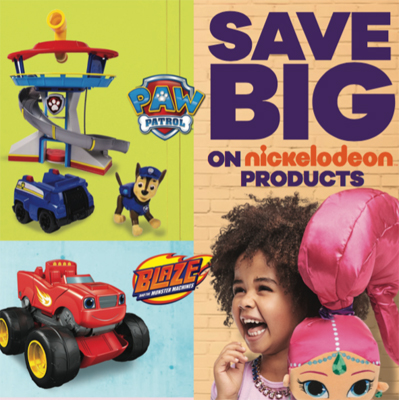
Brand: Amazon
Campaign: Nickelodeon Image Recognition with Amazon
Agency: Nickelodeon
BEST USE OF MARKETING INNOVATION IN A CAMPAIGN—BRONZE

Brand: Amazon
Campaign: Nickelodeon Image Recognition with Amazon
Agency: Nickelodeon
Amazon wanted to boost Nickelodeon cross-category sales in three toy categories, increase searches ahead of the holidays and recruit a new audience for Nick products.
Nickelodeon was the first brand to partner with Amazon using their Amazon app image recognition technology to redirect consumers to a custom landing page of product. In the end, a technology was used that had not been leveraged by an outside brand before, which allowed Nick to convert off-line consumers to an e-commerce shopping experience.
A unique creative was designed with a CTA to scan the ad in the Amazon app to redeem exclusive deals. Upon taking a photo of the ad, the consumer was served a landing page with a variety of products at different price reductions to scroll through, headlined with custom Nick Jr branding.
There was a significant lift in sales with a more than 179 percent boost versus the prior year. Impressions to product pages of featured items increased by 48 percent. The vendor management team at Amazon highlighted this program in their top five wins of 2017.
Gold Winner

Brand: Cheez-It & Pringles
Campaign: Saturday vs. Sunday
Agency: Catapult
BEST USE OF SHOPPER MARKETING—GOLD

Brand: Cheez-It & Pringles
Campaign: Saturday vs. Sunday
Agency: Catapult
Cheez-It and Pringles competitors’ deep pockets gave them a chokehold on both NFL and NCAA sponsorship tie-ins. But despite their big budgets, the brands’ larger adversaries could not activate in both spaces, because their league sponsorship investments forced them into either the pro or college space exclusively. Turning this adversity to its advantage, Cheez-It and Pringles was able to cleverly craft one message that engaged both sets of fans at once.
The creative platform was a “Great Debate” about whose game was superior. The “Saturday vs. Sunday—Voice Your Choice” promotion asked fans to choose their favorite day of football: College Football Saturday or Pro Football Sunday.
Retailers quickly recognized the inherent strength of the idea, and bought in on a variety of sizable in-store displays.
The core offer was a combination election and sweepstakes. Entrants could tweet to #TeamSaturdayEntry or #TeamSundayEntry “your most outrageous Cheez-It field goal” (using an index finger to kick the cracker through the uprights—found on the Cheez-It box, of course), or uploading the receipt from a qualifying purchase. Fans could vote and enter up to 10 times a day. Former college and pro star Desmond Howard joined as spokesperson, straddling the middle of product packaging and POS between college-loving and pro-loving trash talk. Fans were invited to “Voice Your Choice” to win $10,000 in season ticket cash to see their favorite team.
The campaign’s goals were ambitious and included one million sweeps entries, a 44 percent jump from the prior year. Effectiveness in social channels exploded, with more than 14 million impressions and a 9,700 percent increase in Twitter sweepstakes entries. Pringles and Cheez-It combined for more displays than the previous year’s football campaign, contributing to a 30 percent YOY increase in displays. At its bottom line, “Saturday vs. Sunday” helped grow market share, outpaced KPIs, increased sales volume five percent, and rang up even more substantial gains at critical retailers like Walmart, Publix, Food Lion, Walgreens and Dollar General.
Silver Winner
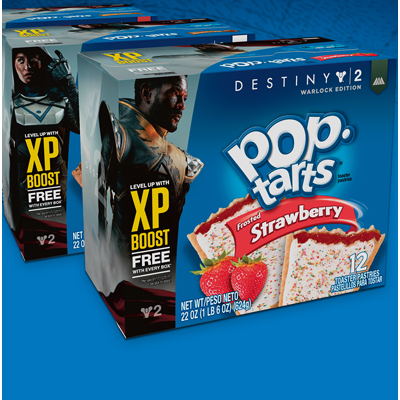
Brand: Kellogg/Pop-Tarts
Campaign: Pop-Tarts & Destiny 2
Agency: The Integer Group
BEST USE OF SHOPPER MARKETING—SILVER

Brand: Kellogg/Pop-Tarts
Campaign: Pop-Tarts & Destiny 2
Agency: The Integer Group
In recent years, Pop-Tarts faced a drop in household penetration that negatively impacted sales. To shore up these declines, the brand cast an eye toward a new target: teens and young adults.
After immersing itself in attitudinal and behavioral data and social listening, the brand looked to video games, notably new title launches when gamers line up at midnight or take the day off from school or work to play. The strategy was to get its new target to reconsider Pop-Tarts by turning each pastry into a delicious power-up that would help gamers advance in the year’s biggest game, Activision’s Destiny 2, which launched in September 2017.
How? Every box of Pop-Tarts purchased gave gamers something they couldn’t get anywhere else: more in-game experience points, aka “XP.” The more XP a Destiny 2 player earned, the faster their character climbed in rank, giving them new abilities, better weapons and armor, and more cred among fellow gamers. The more Pop-Tarts they purchased, the higher they climbed. Some shoppers were even buying more than 100 boxes in one trip. And while gamers always love XP points, the offer was designed to be particularly appetizing to Destiny 2 players; sixty gaming influencers received Destiny 2-branded Pop-Tarts boxes that featured their gamertag on the front of the box to share with their fans.
In a partnership with Gamestop, the first 500,000 shoppers who bought Destiny 2 received free XP Boost codes and Pop-Tarts samples to fuel their first night of playing the game. Launch parties, exclusive offers and a game controller made out of Pop-Tarts that was streamed on Twitch equated to $10,000 in earned media.
Bronze Winner
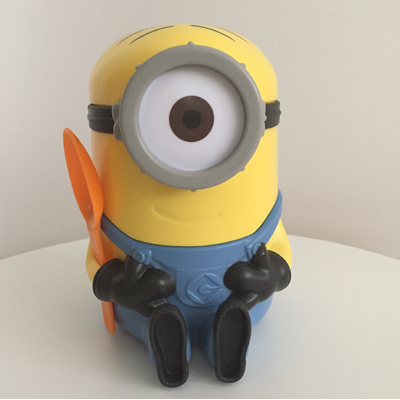
Brand: Cereal Partners Worldwide
Campaign: CPW Minions Cereal to Go
Agency: Index Promotions
BEST USE OF SHOPPER MARKETING—BRONZE

Brand: Cereal Partners Worldwide
Campaign: CPW Minions Cereal to Go
Agency: Index Promotions
The cereal aisle is jam-packed so Nestlé’s Cereal brands found an innovative way to stand out by leveraging a strong entertainment franchise: the Minions.
The efforts all hinged on a “spectacular” promotional item that would prominently feature the lovable characters in a new way and on an item suitable primarily for on-pack or next-to-pack promotions to attract moms with kids.
With the timely release of the new “Minions” movie, Index Promotions designed a fun and useful on-pack item that looked like a Minion, but transformed into a cereal bowl and spoon. The Minion bowl, free with purchase, was distributed in 23 countries including Asia, Latin America and Europe. On-pack marketing and a shrink-wrapped bowl was on display so customers could see the prize inside.
Large volumes of the product were ordered and distributed the last week of June 2017. The media picked up the promotion, which had a domino effect on the proceeding sales. In all markets the promotion was well received and generated 93 percent more lift than the standard in-pack box. In Thailand, specifically, the cereal sold out in less than a week, with 20,000 items sold.
Gold Winner
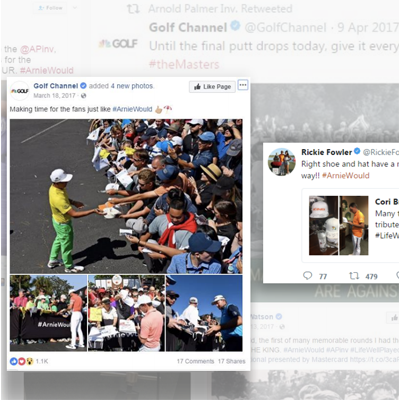
Brand: Mastercard
Campaign: Mastercard #ArnieWould
Agency: Octagon
BEST USE OF SOCIAL/VIRAL MARKETING IN A CAMPAIGN—GOLD

Brand: Mastercard
Campaign: Mastercard #ArnieWould
Agency: Octagon
Golfers both casual and professional aspire to the greatness of Arnold Palmer. With #ArnieWould, Mastercard honored his legacy and engaged fans across multiple platforms before, during and after major tournaments
Mastercard leveraged the Masterpass Club, a cardholder hospitality space, to honor the legend at the Arnold Palmer Invitational. The space became a must-visit destination after choreographed appearances from Mastercard ambassadors Justin Rose, Ian Poulter and Brandt Snedeker, who led a toast to Palmer featuring his signature beverage.
Over 14,000 fans visited the Club, which featured a selection of Palmer’s memorabilia, letters from fans and his return correspondence and a social media wall displaying #ArnieWould posts. In exchange for a contribution to Arnie’s Army Charitable Foundation, fans received a branded t-shirt. If spotted around the course wearing the shirt, they could be selected to receive a “Priceless Surprise,” such as upgrade tickets or the chance to walk inside the ropes with one of the ambassadors; 2,741 were awarded during the tournament. #ArnieWould was prominently displayed on signage and table displays to remind attendees of the impact of his legacy.
In addition, #ArnieWould fan experiences were created across the Bay Hill Club golf course, including designated autograph areas where fans could meet pro golfers Justin Rose and Graeme McDowell and ask them questions after their rounds. These buzz-worthy moments were picked up by media and blasted across fans’ social channels. Rose and McDowell also shared #ArnieWould tributes on their own social channels.
Next, the #ArnieWould conversation continued at one of golf’s biggest stages, The Open Championship. Every year, Palmer’s legacy is felt at the tournament as golf fans remember his two victories, style, TV appeal and humility. Fans could connect with Arnie’s legacy via interactive touchscreens strategically placed throughout the course, and share their experience on social media.
#ArnieWould was a viral success, garnering 11.7 million engagements on social media and earning its place within sports culture, as amateurs wrote #ArnieWould on equipment and broadcasters used the phrase in commentary.
Silver Winner

Brand: Arby’s
Campaign: Arby’s #MeatSweats
Agency: Manifesto
BEST USE OF SOCIAL/VIRAL MARKETING IN A CAMPAIGN—SILVER

Brand: Arby’s
Campaign: Arby’s #MeatSweats
Agency: Manifesto
In a campaign that perhaps only a vegan wouldn’t love, Arby’s literally gave carnivores the #MeatSweats.
Arby’s wanted to drive buzz around the brand at the end of 2017, and challenge other QSR brands launching their own limited edition novelty products, like KFC’s Colonel pillow. They had only four working weeks to pull it off, and a budget of less than $100,000, including creating the custom product—actual sweats emblazoned with images of meat.
The head-to-toe custom apparel featured Arby’s signature meats in photorealistic, audaciously loud sweatshirt and matching sweatpant combos delivered to the nation’s most publicly passionate carnivores just in time for Christmas.
The catch? The tasty fashion couldn’t be bought. They had to be earned. From fans who’d tackled Arby’s Meat Mountain (an enormous sandwich featuring all their signature meats) to smoking meat for 24 hours straight and beyond, carnivores who earned Arby’s respect for their love of meat were the unsuspecting targets of the surprise & delight campaign.
In true Arby’s fashion, each pair of Meat Sweats came with tongue-in cheek features like “bacon-patterned warming pockets,” “a venting hood for maximum temperature control,” and “expandable waistline technology for post-meal comfort.” The sweats were wrapped in bacon-patterned tissue paper, sealed with a 100 percent Meat Sweat Certification sticker and wrapped in a bright red poly bag.
Social media influencers were engaged to create cultural buzz. ESPN commentator and former NFL player Mike Golic, Jr. launched a tweet that got the ball rolling (“Actual #MeatSweats—I can’t breathe!”) and had the press guessing if he was the secret spokesperson.
Within days, news stations were covering it around the country with on-air segments and consumers watched as newscasters discussed the appalling yet appealing sight of that much meat on a sweatsuit. From Fox & Friends to CBS news affiliates across the country, voices were buzzing and recipients began receiving Arby’s Meat Sweats, some entirely surprised and others through social outreach.
More mentions followed. Seth Meyers gave Arby’s Meat Sweats a plug on “Late Night.” Next, a pro wrestler laid out his beloved pair of Meat Sweats along with some flashy bling on Twitter, followed by a giant shout out from YouTube star Casey Niestat with 1.6 million Twitter followers. Recipients proudly donned their sweats on social holding up the hashtag card #MeatSweats.
#MeatSweats garnered an impressive 92 million total earned media impressions in less than two weeks, including three million broadcast impressions, 59.5 million digital media impressions and 29.5 million social impressions, leading to a recognizable sales spike of Arby’s biggest sandwiches during the December-January campaign window.
Bronze Winner
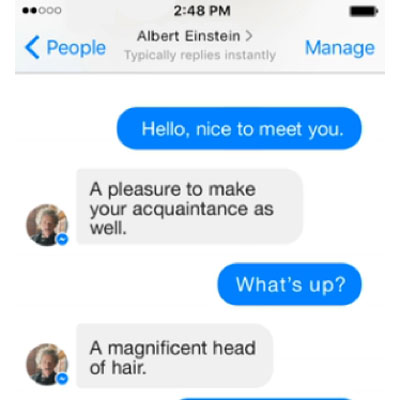
Brand: National Geographic Partners
Campaign: Genius Chatbot
Agency: National Geographic
BEST USE OF SOCIAL/VIRAL MARKETING IN A CAMPAIGN—BRONZE

Brand: National Geographic Partners
Campaign: Genius Chatbot
Agency: National Geographic
To promote it’s first fully scripted series “Genius,” National Geographic wanted to create a social experience beyond boring paid posts that used personality to create digital engagement throughout the 10 episode run. Technology helped National Geographic showcase the human side of Albert Einstein, with a chatbot that helped drive tune-in while helping users discover the man behind the great mind.
The main challenge was ensuring that the chatbot experience was authentic and had an authentic conversational flow, while also being entertaining and promoting the show. It was vital that if someone asked the bot about the theory of relativity, it would relay an explanation in a simple and easily understood way. And, it had to account for any kind of troll or user who would attempt to provoke the bot into a negative response.
National Geographic worked with 360i to bring the genius of Einstein back to life through a Facebook Messenger chatbot. The bot understood natural text input and was free flowing, responding based on intent, context and memory. The customized chat experience was based on the relationship memory between the chatbot and the users. Influencers within the science community were engaged to chat with the bot and promote their experiences on their social media channels. All possible responses the bot could produce were run through an extensive quality control process, and anytime the bot received an inappropriate question, it would simple re-direct the conversation to a more suitable topic.
To engage, users simply logged onto Facebook and opened up the messenger function. Once there, in Einstein’s tone of voice, the chatbot created an immersive messaging experience where fans could discover his lesser known stories through unique, custom content in the form texts, images and gifs. When users subscribed, the chatbot reminded them to tune in, sending fans fun and interesting facts about each episode. Through out the season, the bot would follow up with users, ask them questions, and remind them to tune-in for the next episode or catch up on demand.
Press coverage of the Genius Chatbot generated 2.3 million estimated views, and the influencer partnership program generated over 1.8 million impressions. Paid ads resulted in 17,000 clicks to the chatbot and 1.8 million social impressions. Users interacted with the bot 11 times on average with a 50 percent re-engagement rate, for a total of 10,000 bot sessions.
Gold Winner
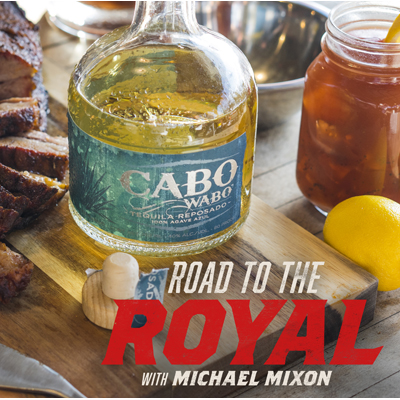
Brand: Campari America/Cabo Wabo Tequila
Campaign: Road to the Royal
Agency: Fusion Marketing
BEST USE OF VIDEO—GOLD

Brand: Campari America/Cabo Wabo Tequila
Campaign: Road to the Royal
Agency: Fusion Marketing
As a challenger brand, Cabo Wabo Tequila needed to increase its market share by recruiting new consumers to the tequila category. Campari positioned Cabo as the “Thick Cut” tequila—a tequila that takes an American approach to everything it does, standing against all things that reek of pretension, self-serving posturing and snobbery.
The brand partnered with Thrillist and barbecue influencers Michael and Myron Mixon to create a content series designed to build buzz around a culminating experiential event at The Kansas City Royal World Series of BBQ.
The series took the influencers on a cross-country journey, educating them on what it takes to make the best brisket in the world. From learning how to raise cattle the right way in Wolfe City, Texas, to a showcase on how to make a killer brisket rub in Homestead, FL, consumers got an inside look at the love and care that goes into brisket. And, of course, they enjoyed plenty of Cabo drinks along the way.
The entire event was shared across Cabo’s social channels, as the Mixons served the perfect brisket recipe and Cabo brought the world of “Thick Cut” Tequila to life.
The campaign generated 45 million total impressions (187 percent of goal), with three million total video views. The brand netted an impressive seven percent YOY sales growth.
Silver Winner
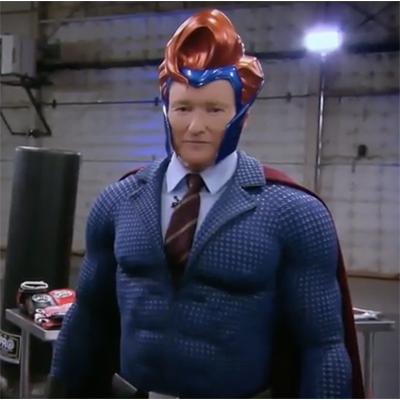
Brand: Turner TBS
Campaign: Conan Trains With Wonder Woman
Agency: Turner Entertainment Networks
BEST USE OF VIDEO—SILVER

Brand: Turner TBS
Campaign: Conan Trains With Wonder Woman
Agency: Turner Entertainment Networks
“Wonder Woman” Gal Godot working out with Conan O’Brien? Yep. It’s a match made for viral sharing.
To create buzz for the then soon-to-be-released movie of the Amazing Amazon’s adventures, Warner Bros. turned to Turner and Team Coco to create original content that would drive online views and engagement.
The concept: being Wonder Woman requires peak physical conditioning, martial arts expertise and unshakeable resolve. Actress Gal Gadot learned all of these from years of training with the Israeli army. Unfortunately for Conan, he has none of these qualities. Nevertheless, that didn’t stop the late night host from going toe to toe with Godot, with hilarious results.
To build engagement, the custom “Conan” off-site shoot was launched on the Thursday of opening weekend for “Wonder Woman.” Custom posts on the Team Coco social handles utilizing Turner’s proprietary targeting tool turned the segment into one of the show’s biggest integrated content promotions to date.
The partnership leveraged Turner’s new social product, Launchpad, designed to maximize a brand’s impact across platforms by proprietary, actionable insights applied to a multi-platform campaign, optimizing placement and engagement from start to finish. Utilizing data insights and real-time content optimization, the video gained 2.8 million views and 24.6 million total impressions opening weekend. “Wonder Woman” opened at the top of the box office, earning more than $100 million in its U.S. opening weekend.
Bronze Winner

Brand: BMW
Campaign: Road to Coachella
Agency: Mirrored Media
BEST USE OF VIDEO—BRONZE

Brand: BMW
Campaign: Road to Coachella
Agency: Mirrored Media
Industry-first partnerships with composer Hans Zimmer and Coachella helped BMW increase awareness of its eco-friendly i Series of vehicles with electric capabilities.
Zimmer playing Coachella was unprecedented in-and-of itself, breaking the mold of what festivalgoers expect. Neither Zimmer nor any other composer had been featured at such a festival before. Similarly, Coachella never had an automotive sponsor, nor was BMW a brand that attendees would normally associate with a music festival. BMW and Zimmer were challenged to create an organic connection between their respective brands and festival attendees.
An artistic and visually-inspiring content piece was the centerpiece of the program, featuring an original score by Zimmer along with a cast of Coachella and influencer cameos. The narrative followed Zimmer along his journey to his first-ever and much-anticipated Coachella headlining performance.
A social media campaign with 10 influencers and artists created engagement and dialogue. Posts included calls to action for fans to watch the original content, and offered festivalgoers the chance to win weekend passes by documenting their own preparation and journey to the Coachella Valley via social media using the hashtag #RoadToCoachella.
The campaign launched with three social media-based teasers released by Coachella and BMW on their respective social media channels. The first teaser officially announced BMW’s sponsorship. The second hinted at Zimmer’s participation in the campaign. The third and final teaser helped craft the storytelling experience and drove traffic to the long-form content. The pieces quickly went viral across social media, leaving fans curious and anxious to see what would happen next.
On the festival grounds, BMW invited visitors to a brand lounge in the VIP area where fans were able to experience the vehicle and its unique Coachella-inspired designs, co-developed with Garage Italia Customs. An eye-catching photo collage in the VIP tent documented the making of the Road to Coachella campaign and featured original behind-the-scenes photos of the i8 and i3 in action with cameos by Hans Zimmer, musician Nile Marr (son of the Smiths’ Johnny Marr) and photographer Brian Willette.
The campaign received over 35 million impressions, with each video going viral across social media. The #RoadToCoachella hashtag generated over 2,500 mentions and over 33 million impressions. The influencer campaign garnered over 20 million impressions, 240,000 likes and 1,200 comments.
Gold Winner

Brand: Charmin
Campaign: Charmin Van-GO
Agency: Jack Morton Worldwide
BEST VEHICLE-BASED CAMPAIGN—GOLD

Brand: Charmin
Campaign: Charmin Van-GO
Agency: Jack Morton Worldwide
From a consumer perspective, there’s not too much that’s interesting about toilet paper—until you need it, that is.
The Charmin brand understood that disconnect. Where the brand was once seen in a class of its own, increasingly, the perceived quality of competitive brands—and their lower prices—was closing the gap. Consumers began to see Charmin’s competitors as comparable options.
Enter Charmin Van-GO, the first on-demand mobile bathroom service. Yep, a toilet on wheels. If you had to go, all you had to do was pull out your phone and order it up. Within minutes a bathroom experience like no other was delivered.
The strategy was based on five criteria: to put the vehicle in a market where bathrooms were in need but it wouldn’t be noticed; the service had to be on-demand via mobile; it needed to be deliverable; and the experience had to be amazing. Finally, a highly visible way to break the story for maximum PR value was a priority. Millennials were the target as the new generation of toilet paper buyers and future brand loyalists.
New York City became the campaign’s destination—a city where you can get absolutely everything and anything you need, except a clean, comfortable place to enjoy the “go.” With a population of 8.5 million people and more than 60 million foreign and domestic tourists each year, New York has public bathrooms in fewer than half of its parks, a couple of subway stations and three (just three!) pay toilets.
A mobile website was set up for two days for consumers to order up “the go.” Charmin rolled out the white carpet for consumers waiting to use the facilities, offering activities like a life-size poop emoji for pics and a chance to meet the Charmin bears.
The novelty drew 1.2 million earned and social media impressions and 51 original articles. Recall was 43 percent, compared to the 25 percent goal. A kick off Mashable article drove coverage on “The Today Show,” Drudge Report, People, Yahoo and others. The social campaign was a record-breaker for the brand with a 3,000 percent increase is social impressions.
Silver Winner

Brand: Adult Swim
Campaign: The Don’t Even Trip Road Trip
Agency: The XD Agency
BEST VEHICLE-BASED CAMPAIGN—SILVER

Brand: Adult Swim
Campaign: The Don’t Even Trip Road Trip
Agency: The XD Agency
To celebrate the much-anticipated third season of the animated show “Rick and Morty,” Adult Swim and The XD Agency created a mobile pop-up shop and nationwide tour to give fans an outlet where they could explore their obsession with like-minded loyalists, while propagating enthusiasm for the show.
A Ford Transit, topped with a giant drooling sculpture of Rick made from carved Styrofoam on a steel frame, caused quite a stir as it traveled the roadways, driving social buzz and creating community.
The “Don’t Even Trip Road Trip” kicked off when the truck arrived in Atlanta on May 11. At each stop—at a mix of bars and comic book shops—the Rickmobile encountered lines of fans snaking around the block. The side of the giant Rickmobile opened to reveal a swag shop, staffed by ambassadors, that sold “poopy butthole” towels, retro aluminum spaceships, toy cars and character-themed pool floats, among other things. A Rick plush toy rode shotgun in the Rickmobile, driving sales of that item even further. Merchandise sales topped $2 million, comprising 50,400 transactions and 128,366 items, even after a cap at two items per person.
The experiential campaign was promoted only via social channels and word of mouth, creating an element of suspense and surprise. (One media outlet called secrecy the secret to its striking success.) As it continued to weave its way around the country, it quickly built enormous momentum, with fans even campaigning for stops in their towns.
In total, the tour generated 27,461 posts, 254,725 engagements and 50 million impressions on Twitter and Instagram alone. Add to that were Facebook posts and user-generated videos on YouTube, along with plenty of media coverage.
Bronze Winner
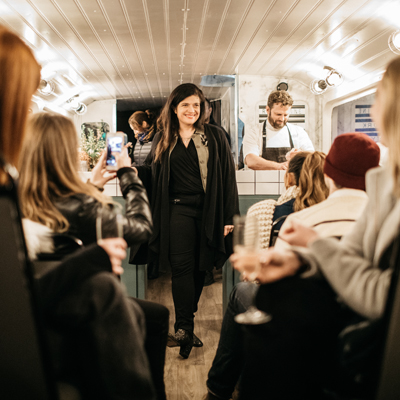
Brand: Uber Technologies
Campaign: Uber Ride and Drive
Agency: Manifold
BEST VEHICLE-BASED CAMPAIGN—BRONZE

Brand: Uber Technologies
Campaign: Uber Ride and Drive
Agency: Manifold
To drive awareness for its new Uber Visa card, Uber took consumers on a once-in-a-lifetime ride.
Under a tight timeline, a double-decker bus was converted into an elevated mobile dining experience. One of New York City’s top chefs—Food Network “Chopped” judge and Iron Chef Alex Guarnaschelli—created neighborhood-inspired meals for a small, invite-only group of Uber power users, frequent riders and media. The bus was designed to resonate with this audience by highlighting the card’s top differentiator, four percent back on dining, while celebrating life in the city.
The exterior was inspired by the credit card design: a sleek black finish with Uber’s signature rainbow gradient ‘bit’ design and the earn 4 percent back on dining benefit. Inside, white marble and subway tile with mirrored accents gave a bright, crisp feel, while butcher block counters, bouquets of flowers and wool throw blankets and pillows in the seating areas warmed up the space.
Each day, two seatings of nine riders and their plus ones enjoyed a taste of New York’s rich history as the bus traveled around the city.
The sleek vehicle drew 200,000 direct impressions, 4.5 million media impressions, nine million social impressions and more than 150 applications. The experience was so well received that Uber is planning to tour the bus to additional targeted cities in 2018.
Gold Winner
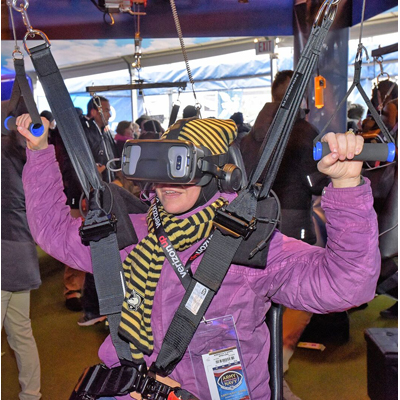
Brand: USAA
Campaign: USAA Army Navy Game Parachute Virtual Reality
Agency: IMG Live
BEST USE OF AI/VR/AR—GOLD

Brand: USAA
Campaign: USAA Army Navy Game Parachute Virtual Reality
Agency: IMG Live
USAA is known for serving the military community and its families with a full range of highly competitive financial products and services. A longtime supporter of the college football Army Navy rivalry, USAA wanted to flip the script on their traditional game day activation to showcase innovation and technology.
To make the USAA parachute experience truly authentic, footage was gathered from the 2016 Army Navy game to let fans experience the rush that only a “select few” have ever had the honor of experiencing—parachuting into Lincoln Financial stadium on game day in front of 70,000 fans. The idea: Capture 360-degree footage of the Leap Frog Parachute Team’s journey from preparations in the plane all the way to landing at mid field at the Army Navy game, and turn this footage into a true-to-life consumer facing virtual reality experience.
The goal was to engage multiple senses and incorporate every single feeling that the Leap Frogs experience. Fans would not just feel the wind rush past as they jump out, but also the weightlessness of the free fall. They would be able to turn 360 degrees to see the other Leap Frogs, look down to see the stadium and up to see the plane they just departed, and feel the vibrations from the screaming fans as they land.
This authentic multi-sensory VR experience was executed by strapping the consumer into a parachute harness, hoisting them off the ground, and virtually transporting them thousands of feet over the stadium to witness firsthand the sights and sounds of jumping into the stadium as part of the Army Navy pre-game ceremonies.
The activation was a flying success. In total, it engaged 773 consumers in 4.5 hours. USAA had a commanding presence in the Army Navy fan area, leveraged the platform to showcase innovation and technology and captured footage to repurpose for social content.
Silver Winner

Brand: Lufthansa
Campaign: Live With Lufthansa
Agency: The Bait Shoppe
BEST USE OF AI/VR/AR—SILVER

Brand: Lufthansa
Campaign: Live With Lufthansa
Agency: The Bait Shoppe
To raise awareness for its expanded European destinations, Lufthansa took consumers on a journey across the globe—without ever leaving New York City.
Lufthansa leveraged its sponsorship of LITE FM’s Broadway in Bryant Park to engage the thousands of consumers who attended the six weeks of live performances with live VR. The campaign revolved around a simple idea: Connect consumers live in VR with Lufthansa flight attendants based in premium European locations for a truly personal experience.
Three European cities were chosen for the activation: Vienna, Athens and Munich. Dedicated microwave connections with speeds of 30mb up/down to support the stream were built in all EU locations and in New York City’s Bryant Park. Next, a custom VR app was built to play back the live streams being watched in New York. Each flight attendant had their own dedicated streaming rig and dedicated audio software which was then patched together in real time.
Each week, a premium European Lufthansa destination was chosen to highlight. As visitors entered Bryant Park to watch live Broadway performances, they found a 100-square-foot Lufthansa branded environment customized to match the corresponding European city. For example, when Athens was featured, a Greek cafe was created, with corresponding flowers, backdrop and tabletop vignette.
Consumers were encouraged to “take flight” by checking in with a Lufthansa flight attendant at a customized airline cart. After receiving a customized ticket, they sat in the branded environment and put on their VR goggles and headphones. One of four flight attendants in the featured city greeted the consumer in Bryant Park via the VR live stream. As visitors settled into the four cafe chairs, consumers were able to have two way conversations with the flight attendants and ask question about the city. Select participants won travel to the featured location.
The media partnership with iHeartMedia created powerful results, including 48 million impressions on LITE FM; 60,000 fans who visited the park; and 3,811 consumer who engaged with the activation. Bon voyage!
Bronze Winner
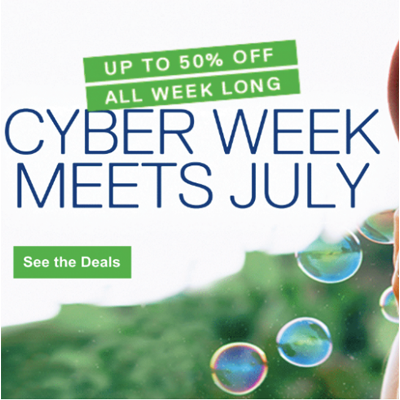
Brand: Dell
Campaign: Dell + Persado
Agency: LaunchSquad
BEST USE OF AI/VR/AR—BRONZE

Brand: Dell
Campaign: Dell + Persado
Agency: LaunchSquad
By using Persado’s AI-powered technology, Dell aimed to create highly personalized marketing messages that would inspire action among several different audience segments, ultimately building relationships and improving marketing ROI.
For their small business and consumer divisions, Dell targeted individuals within the U.S. and Canadian markets, along with individuals with small businesses. For their Alienware division, Dell focused on reaching U.S. consumers within the gaming community.
The main challenge is a common one to all online marketers: cutting through the clutter. Dell used technology to improve the emotional value of its marketing messages and speak to audiences in ways that resonated. AI was employed on dozens of email campaigns, Facebook ads and display advertisements; deep learning algorithms generated language variations and determined the most relevant use of emotions, symbols, formatting, calls-to-action and positioning across marketing communications to increase engagement and drive conversions.
The customers on the other end of this campaign received messages specifically targeted to them based on their past interaction with the brand and what offers they were or weren’t likely to respond to. Dell focused its efforts on improving the relevance of communications sent to customers by incorporating emotional language that was most likely to inspire a response.
Through repeat testing as the campaign progressed, Dell learned which emotions resonated with customers across channel, audience and season. This resulted in their marketing language being driven by tangible insights on how customers responded to different presentations of offers, rather than best practice or gut instinct.
Through the use of Persado’s machine-generated language, Dell saw consistent lifts of over 50 percent for clicks and conversion metrics. The actionable insights led to an increase in performance across the entire email program. Consumer “Business As Usual” (BAU) emails saw a 17 percent open lift, 56 percent click lift, 47 percent conversion lift, and 46 percent revenue lift, while small business BAU emails enjoyed an 11 percent open lift, 72 percent click lift, 83 percent conversion lift, and 90 percent revenue lift. The success is starting to be replicated in other channels, including Facebook, banner ads and direct mail.
Gold Winner
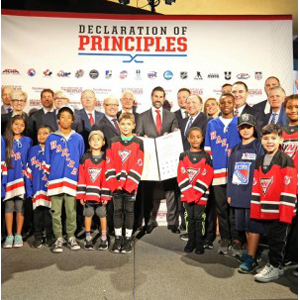
Brand: National Hockey League
Campaign: Declaration of Principles
Agency: The Vault
BEST CORPORATE SOCIAL RESPONSIBILITY CAMPAIGN—GOLD

Brand: National Hockey League
Campaign: Declaration of Principles
Agency: The Vault
Billed as the first of its kind in professional sports, the NHL’s Declaration of Principles connects hockey organizations from around the world—serving professional, amateur and youth players—under one mission: To deliver a positive hockey experience for all players and families.
Developed in partnership with the NHL Player’s Association and 16 other influential governing bodies in the sport, the principles unite organizations in a joint effort to grow the game responsibly, advocating the importance of diversity and inclusion, valuing all members of the community, and the need for individualized, age-appropriate programming.
Those who love hockey know that it requires teamwork and perseverance, instills integrity and a sense of humility, strengthens character and brings communities together. The objective of the Declaration of Principles was to proclaim the values inherent and authentic to the sport, and inspire individuals and organizations—both big and small—to adopt and embody these values.
Youth sports culture is experiencing negative forces such as early specialization, rising costs, and win-at-all cost attitudes of parents and coaches. Recognizing that 99.9 percent of players don’t go on to play in the NHL and 98 percent won’t receive college scholarships for hockey, the principles advocated for a shift in culture, reinforcing that players and families have an opportunity to be healthy and active, make friends and learn skills that expand their potential beyond the rink.
In addition to the principles, which were announced on Sept. 6, the initiative also included the launch of ThisIsHockey.org, where stakeholders, fans and friends could learn about the program, watch a TV spot, “Thank You, Hockey,” produced by The Vault NYC and download a poster created in 10 different languages.
The impact and results of this program is also evidenced by the reaction and response from global influencers, including Pope Francis himself. The NHL received a letter from him, which stated: “his Holiness trusts that [the Declaration of Principles] significant gesture will inspire greater appreciation of the pivotal role played by sports and sportsmanship in training future generations to pursue personal excellence and to promote the spiritual values of teamwork, solidarity and mutual respect so necessary for the building of a more just and fraternal world.”
Silver Winner

Brand: Anheuser-Busch/Stella Artois
Campaign: Filmmaker Lounge at Sundance
Agency: Mosaic
BEST CORPORATE SOCIAL RESPONSIBILITY CAMPAIGN—SILVER

Brand: Anheuser-Busch/Stella Artois
Campaign: Filmmaker Lounge at Sundance
Agency: Mosaic
Stella Artois leveraged Hollywood star power and its Sundance Film Festival sponsorship to support its “Buy A Lady A Drink” campaign, highlighting the importance of the work of Water.org, which works to end the global water crisis.
To spotlight Water.org and reinforce the brand’s credibility and authenticity in the film space, the Stella Artois Filmmaker Lounge at Sundance was created. Inside, visitors found a film studio and premium lounge setting with prominent staging for live Q&A panels, cast celebrations and ownable PR moments with some of Hollywood’s biggest stars. Stella Artois hosted a live Q&A panel each day of the festival, bringing in top-tier talent to discuss their latest projects with media partner Deadline.
The main event was “From Tap to Table,” a Stella Artois hosted panel discussion (and press event). Ethiopian born chef and water advocate Marcus Samuelsson played the role of moderator and tasting curator. He led a dynamic conversation with Water.org co-founders Matt Damon and Gary White around the effects of the global water crisis on local culture and cuisine, paired with a menu of custom dishes inspired by “Buy A Lady A Drink” supported countries, past and present.
In addition to press, guests of the Filmmaker Lounge included members of the film community such as directors, producers, actors and actresses. Once inside, they were offered a premium lounge to celebrate their films headlining the festival, the chance to try Stella Artois samples and the opportunity to learn about the “Buy A Lady A Drink” campaign. Throughout the weekend, guests were also invited to try a virtual reality experience that allowed them to walk in the shoes of those in the developing world who spend up to six hours per day collecting clean drinking water. Participants were then immediately offered the opportunity to help through the purchase of a limited-edition chalice via a pop-up shop within the Stella Artois space.
The Stella Artois Filmmaker Lounge hosted a steady stream of media and influencers, resulting in more than 400 media placements and 493.6 million social impressions—up from 8.3 million impressions in 2016. Throughout the weekend, 31,777 samples of Stella Artois and Stella Cidre were served. Cheers!
Bronze Winner
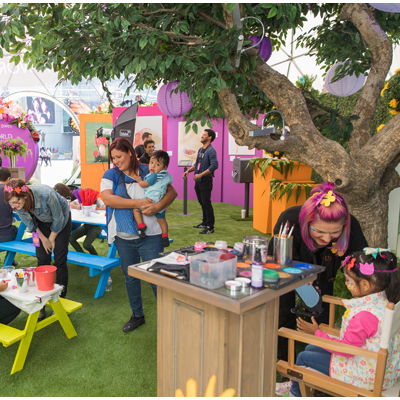
Brand: March of Dimes
Campaign: March of Dimes Imagine a World
Agency: Allied Experiential
BEST CORPORATE SOCIAL RESPONSIBILITY CAMPAIGN—BRONZE

Brand: March of Dimes
Campaign: March of Dimes Imagine a World
Agency: Allied Experiential
As an 80-year-old brand, March of Dimes needed to refresh its branding and reinforce the importance of its fight to ensure every mom and baby has the best shot at good health.
Last November, the three-day LA Live event was selected as the spot to celebrate the brand’s mission and kick off Prematurity Awareness Month. The Imagine a World experience was designed to capture the whimsy, imagination and innocence of childhood. Interactive family-friendly displays and activities encouraged participants to engage with the experience and share their stories through video and photo opportunities on site and via social media.
On-site activities included interactive technology stations featuring games and puzzles, selfie stations, DIY flower crown-making and craft stations and garden party photo booths. Family-friendly guest services offered in conjunction with title sponsor Pampers included a stroller park, a diaper changing area with free diapers for attendees and a semi-private nursing area. Attendees could also play customized interactive games that helped educate players about the March of Dimes’ mission and work.
During a VIP/Media night prior to the opening to the public, for fifteen minutes, an Imagine a World lock up took over all of the screens at Microsoft Plaza at LA Live, giving MOD the extra wow factor to passersby curious about the private event happening. Facebook Live was deployed to bring supporters across the country into the event.
The digital social ad campaign drove 28,540 clicks from more than 1.3 million impressions for a clickthrough rate of 2.09 percent, well above the benchmark. In addition, the campaign drove more than 22,500 link clicks and over 25,400 engagements. The hashtag #MODImagines appeared on 10,000 social posts, and 2,500 attendees came through the exhibit over the two-day public event.
